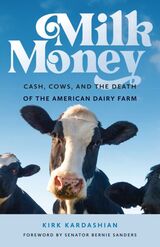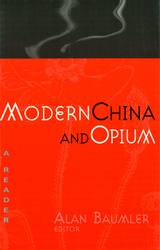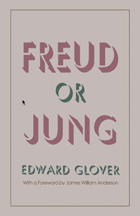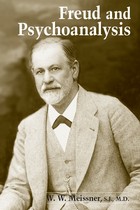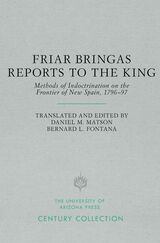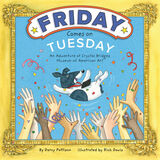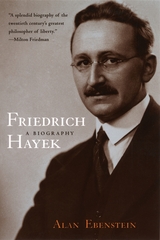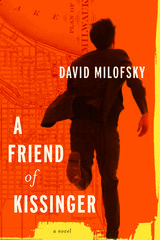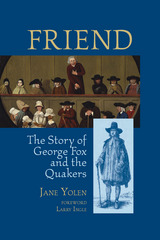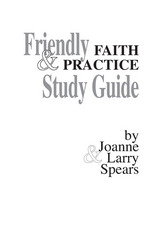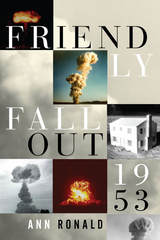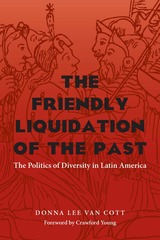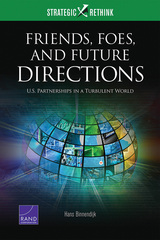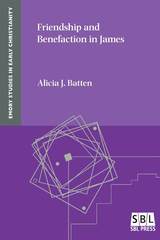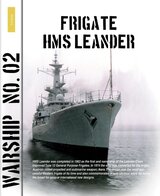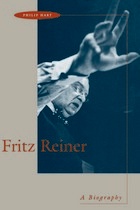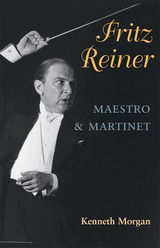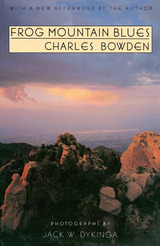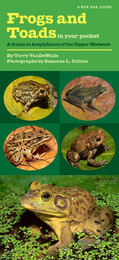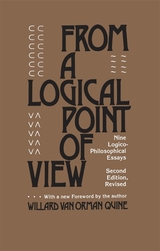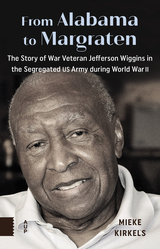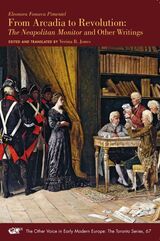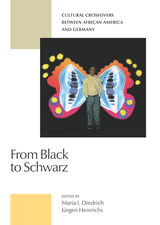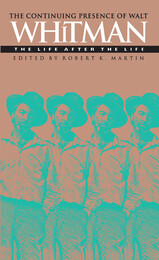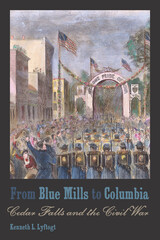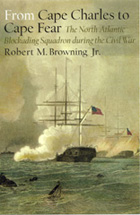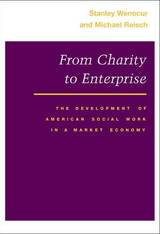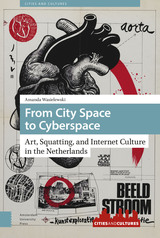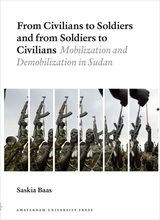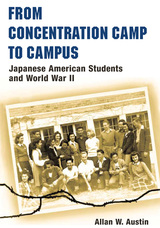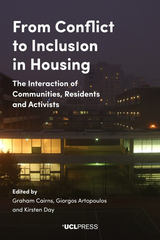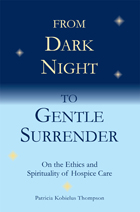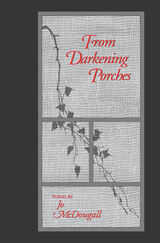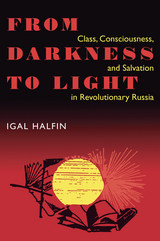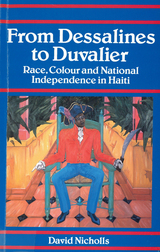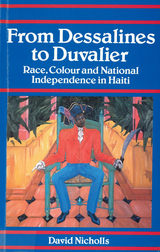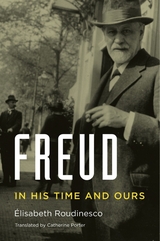 Freud: In His Time and Ours
Élisabeth Roudinesco
Harvard University Press, 2016 Élisabeth Roudinesco offers a bold and modern reinterpretation of the iconic founder of psychoanalysis. Based on new archival sources, this is Freud’s biography for the twenty-first century—a critical appraisal, at once sympathetic and impartial, of a genius greatly admired and yet greatly misunderstood in his own time and in ours.
Roudinesco traces Freud’s life from his upbringing as the eldest of eight siblings in a prosperous Jewish-Austrian household to his final days in London, a refugee of the Nazis’ annexation of his homeland. She recreates the milieu of fin de siècle Vienna in the waning days of the Habsburg Empire—an era of extraordinary artistic innovation, given luster by such luminaries as Gustav Klimt, Stefan Zweig, and Gustav Mahler. In the midst of it all, at the modest residence of Berggasse 19, Freud pursued his clinical investigation of nervous disorders, blazing a path into the unplumbed recesses of human consciousness and desire.
Yet this revolutionary who was overthrowing cherished notions of human rationality and sexuality was, in his politics and personal habits, in many ways conservative, Roudinesco shows. In his chauvinistic attitudes toward women, and in his stubborn refusal to acknowledge the growing threat of Hitler until it was nearly too late, even the analytically-minded Freud had his blind spots. Alert to his intellectual complexity—the numerous tensions in his character and thought that remained unresolved—Roudinesco ultimately views Freud less as a scientific thinker than as the master interpreter of civilization and culture.
 Freud in Oz: At the Intersections of Psychoanalysis and Children’s Literature
Kenneth B. Kidd
University of Minnesota Press, 2011 Children’s literature has spent decades on the psychiatrist’s couch, submitting to psychoanalysis by scores of scholars and popular writers alike. Freud in Oz turns the tables, suggesting that psychoanalysts owe a significant and largely unacknowledged debt to books ostensibly written for children. In fact, Kenneth B. Kidd argues, children’s literature and psychoanalysis have influenced and interacted with each other since Freud published his first case studies. In Freud in Oz, Kidd shows how psychoanalysis developed in part through its engagement with children’s literature, which it used to articulate and dramatize its themes and methods, turning first to folklore and fairy tales, then to materials from psychoanalysis of children, and thence to children’s literary texts, especially such classic fantasies as Peter Pan and Alice’s Adventures in Wonderland. He traces how children’s literature, and critical response to it, aided the popularization of psychoanalytic theory. With increasing acceptance of psychoanalysis came two new genres of children’s literature—known today as picture books and young adult novels—that were frequently fashioned as psychological in their forms and functions. Freud in Oz offers a history of reigning theories in the study of children’s literature and psychoanalysis, providing fresh insights on a diversity of topics, including the view that Maurice Sendak and Bruno Bettelheim can be thought of as rivals, that Sendak’s makeover of monstrosity helped lead to the likes of the Muppets, and that “Poohology” is its own kind of literary criticism—serving up Winnie the Pooh as the poster bear for theorists of widely varying stripes.
Freud or Jung
Edward Glover
Northwestern University Press, 1950 One of the great dramatic events in the history of twentieth-century thought was the break of Carl Jung—the crown prince of the psychoanalytic movement—with his mentor and collaborator Sigmund Freud. After the "gladiatorial phase" of the debate between the Freudians and Jungians had passed, British psychoanalyst Edward Glover began serious consideration of the ideas of Jung. Glover's study was immediately recognized as the major Freudian statement on Jung's psychology and was even cited by later Jungians for its trenchant criticisms. This new edition of the unsurpassed classic will make it available for another generation of students, practitioners, and intellectual historians.
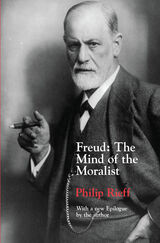 Freud: The Mind of the Moralist
Philip Rieff
University of Chicago Press, 1979 Now a classic, this book was hailed upon its original publication in 1959 as "An event to be acclaimed . . . a book of genuine brilliance on Freud's cultural importance . . . a permanently valuable contribution to the human sciences."—Alastair MacIntyre, Manchester Guardian
"This remarkably subtle and substantial book, with its nicely ordered sequences of skilled dissections and refined appraisals, is one of those rare products of profound analytic thought. . . . The author weighs each major article of the psychoanalytic canon in the scales of his sensitive understanding, then gives a superbly balanced judgement."—Henry A. Murray, American Sociological Review
"Rieff's tremendous scholarship and rich reflections fill his pages with memorable treasures."—Robert W. White, Scientific American
"Philip Rieff's book is a brilliant and beautifully reasoned example of what Freud's influence has really been: an increasing intellectual vigilance about human nature. . . . What the analyst does for the patient—present the terms for his new choices as a human being—Mr. Rieff does in respect to the cultural significance of Freudianism. His style has the same closeness, the same undertone of hypertense alertness. Again and again he makes brilliant points."—Alfred Kazin, The Reporter
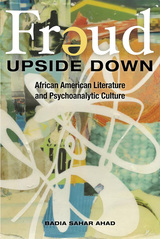 Freud Upside Down: African American Literature and Psychoanalytic Culture
Badia Sahar Ahad
University of Illinois Press, 2010 This thought-provoking cultural history explores how psychoanalytic theories shaped the works of important African American literary figures. Badia Sahar Ahad details how Nella Larsen, Richard Wright, Jean Toomer, Ralph Ellison, Adrienne Kennedy, and Danzy Senna employed psychoanalytic terms and conceptual models to challenge notions of race and racism in twentieth-century America. Freud Upside Down explores the relationship between these authors and intellectuals and the psychoanalytic movement emerging in the United States over the course of the twentieth century. Examining how psychoanalysis has functioned as a cultural phenomenon within African American literary intellectual communities since the 1920s, Ahad lays out the historiography of the intersections between African American literature and psychoanalysis and considers the creative approaches of African American writers to psychological thought in their work and their personal lives.
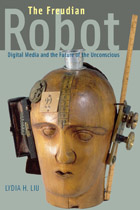 The Freudian Robot: Digital Media and the Future of the Unconscious
Lydia H. Liu
University of Chicago Press, 2011 The identity and role of writing has evolved in the age of digital media. But how did writing itself make digital media possible in the first place? Lydia H. Liu offers here the first rigorous study of the political history of digital writing and its fateful entanglement with the Freudian unconscious.
Liu’s innovative analysis brings the work of theorists and writers back into conversation with one another to document significant meetings of minds and disciplines. She shows how the earlier avant-garde literary experiments with alphabetical writing and the word-association games of psychoanalysis contributed to the mathematical making of digital media. Such intellectual convergence, she argues, completed the transformation of alphabetical writing into the postphonetic, ideographic system of digital media, which not only altered the threshold of sense and nonsense in communication processes but also compelled a new understanding of human-machine interplay at the level of the unconscious.
Ranging across information theory, cybernetics, modernism, literary theory, neurotic machines, and psychoanalysis, The Freudian Robot rewrites the history of digital media and the literary theory of the twentieth century.
Freudian Slips: Cartoons on Psychology
Sidney Harris
Rutgers University Press, 1997 Renowned cartoonist Sidney Harris turns his legendary pen loose on psychiatry and psychology in the laugh-out-loud, funny Freudian Slips. This hilarious collection of 150 cartoons -some published for the first time in this book--takes a lighthearted look at pop psychology, psychotherapy, human behavior, and the psychology of everyday life as only Harris can. Freudians and Jungians are certain to agree- this book is the perfect therapy to bring a smile to the face of anyone who appreciates a clever cartoon.Harris fans will surely want to add Freudian Slips to their collection of his other delightfully witty books, including Einstein Simplified, Can't You Guys Read?, Chalk Up Another One, So Sue Me! and Stress Test, all available from Rutgers University Press.
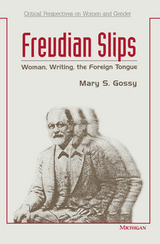 Freudian Slips: Woman, Writing, the Foreign Tongue
Mary S. Gossy
University of Michigan Press, 1995 In Freudian Slips: Woman, Writing, the Foreign Tongue, Mary Gossy provides an original and provocative critique of language, sexuality, and the female body in Freud's The Psychopathology of Everyday Life.
Gossy believes that Freud's most popular statement of a theory of the unconscious is written over foreign and feminized texts, bodies, and places, by way of anecdotes that range from the Dora case to menstruation to travel phobias. Freudian Slips: Woman, Writing, the Foreign Tongue does a feminist psychoanalytic reading of Freud's book and shows how slippery- textually, erotically, and historically- the writing of theory can be, and also how much we can learn from our slips when we are willing to admit that we have made them.
Bringing together autobiography, psychoanalysis, close readings, pedagogy, and politics in provocative and innovative ways, Gossy discusses Freud's work from both textual and theoretical perspectives and asks what his writing can teach us about authority, theory, home, and the foreign. Arguing that the dominant metaphor in the Psychopathology is that of the female body as foreign text, and that this body, writing, and the foreign tongue are identified with a feminized unconscious that threatens authoritative discourse, Freudian Slips moves toward fashioning a feminist theory that is both "slippery and (para)practical" and constantly searches for ways of writing theory that free, rather than sacrifice, the bodies of women.
"The readings of individual slips are often highly productive; the argument is both hardworking and playful. Freudian Slips is a book that people will enjoy reading and from which they will learn a great deal."-- Helena Michie, Rice University
Mary S. Gossy is Associate Professor of Spanish and Comparative Literature, Rutgers University. She is the author of The Untold Story: Women and Theory in Golden Age Texts.
 Freudian Slips: Woman, Writing, the Foreign Tongue
Mary S. Gossy
University of Michigan Press, 1995
In Freudian Slips: Woman, Writing, the Foreign Tongue, Mary Gossy provides an original and provocative critique of language, sexuality, and the female body in Freud's The Psychopathology of Everyday Life.
Gossy believes that Freud's most popular statement of a theory of the unconscious is written over foreign and feminized texts, bodies, and places, by way of anecdotes that range from the Dora case to menstruation to travel phobias. Freudian Slips: Woman, Writing, the Foreign Tongue does a feminist psychoanalytic reading of Freud's book and shows how slippery- textually, erotically, and historically- the writing of theory can be, and also how much we can learn from our slips when we are willing to admit that we have made them.
Bringing together autobiography, psychoanalysis, close readings, pedagogy, and politics in provocative and innovative ways, Gossy discusses Freud's work from both textual and theoretical perspectives and asks what his writing can teach us about authority, theory, home, and the foreign. Arguing that the dominant metaphor in the Psychopathology is that of the female body as foreign text, and that this body, writing, and the foreign tongue are identified with a feminized unconscious that threatens authoritative discourse, Freudian Slips moves toward fashioning a feminist theory that is both "slippery and (para)practical" and constantly searches for ways of writing theory that free, rather than sacrifice, the bodies of women.
"The readings of individual slips are often highly productive; the argument is both hardworking and playful. Freudian Slips is a book that people will enjoy reading and from which they will learn a great deal."-- Helena Michie, Rice University
Mary S. Gossy is Associate Professor of Spanish and Comparative Literature, Rutgers University. She is the author of The Untold Story: Women and Theory in Golden Age Texts.
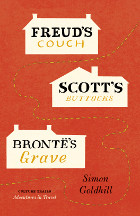 Freud's Couch, Scott's Buttocks, Brontë's Grave
Simon Goldhill
University of Chicago Press, 2011 The Victorian era was the high point of literary tourism. Writers such as Charles Dickens, George Eliot, and Sir Walter Scott became celebrities, and readers trekked far and wide for a glimpse of the places where their heroes wrote and thought, walked and talked. Even Shakespeare was roped in, as Victorian entrepreneurs transformed quiet Stratford-upon-Avon into a combination shrine and tourist trap.
Stratford continues to lure the tourists today, as do many other sites of literary pilgrimage throughout Britain. And our modern age could have no better guide to such places than Simon Goldhill. In Freud's Couch, Scott’s Buttocks, Brontë's Grave, Goldhill makes a pilgrimage to Sir Walter Scott's baronial mansion, Wordsworth's cottage in the Lake District, the Bront ë parsonage, Shakespeare's birthplace, and Freud's office in Hampstead. Traveling, as much as possible, by methods available to Victorians—and gamely negotiating distractions ranging from broken bicycles to a flock of giggling Japanese schoolgirls—he tries to discern what our forebears were looking for at these sites, as well as what they have to say to the modern mind. What does it matter that Emily Brontë’s hidden passions burned in this specific room? What does it mean, especially now that his fame has faded, that Scott self-consciously built an extravagant castle suitable for Ivanhoe—and star-struck tourists visited it while he was still living there? Or that Freud's meticulous recreation of his Vienna office is now a meticulously preserved museum of itself? Or that Shakespeare’s birthplace features student actors declaiming snippets of his plays . . . in the garden of a house where he almost certainly never wrote a single line?
Goldhill brings to these inquiries his trademark wry humor and a lifetime's engagement with literature. The result is a travel book like no other, a reminder that even today, the writing life still has the power to inspire.
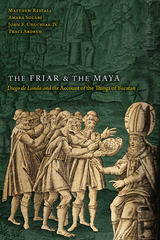 The Friar and the Maya: Diego de Landa and the Account of the Things of Yucatan
by Matthew Restall, Amara Solari, John F. Chuchiak IV & Traci Ardren
University Press of Colorado, 2023 The Friar and the Maya offers a full study and new translation of the Relación de las Cosas de Yucatán (Account of the Things of Yucatan) by a unique set of eminent scholars, created by them over more than a decade from the original manuscript held by the Real Academia de la Historia in Madrid. This critical and careful reading of the Account is long overdue in Maya studies and will forever change how this seminal text is understood and used.
For generations, scholars used (and misused) the Account as the sole eyewitness insight into an ancient civilization. It is credited to the sixteenth-century Spanish Franciscan, monastic inquisitor, and bishop Diego de Landa, whose legacy is complex and contested. His extensive writings on Maya culture and history were lost in the seventeenth century, save for the fragment that is the Account, discovered in the nineteenth century, and accorded near-biblical status in the twentieth as the first “ethnography” of the Maya. However, the Account is not authored by Landa alone; it is a compilation of excerpts, many from writings by other Spaniards—a significant revelation made here for the first time.
This new translation accurately reflects the style and vocabulary of the original manuscript. It is augmented by a monograph—comprising an introductory chapter, seven essays, and hundreds of notes—that describes, explains, and analyzes the life and times of Diego de Landa, the Account, and the role it has played in the development of modern Maya studies. The Friar and the Maya is an innovative presentation on an important and previously misunderstood primary source.
Friar Bringas Reports to the King: Methods of Indoctrination on the Frontier of New Spain, 1796–97
Translated and Edited by Daniel S. Matson and Bernard L. Fontana
University of Arizona Press, 1977 A significant contribution to a deeper understanding of the Spanish period in Arizona and Sonora, Mexico, this translation of Father Diego Miguel Bringas' 1796–97 report on missionary activities presents a rare first-hand account of Spanish attempts to direct cultural change among the Pima Indians.
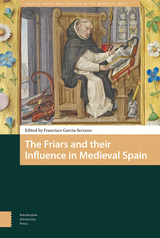 The Friars and their Influence in Medieval Spain
Edited by Francisco Garcia-Serrano
Amsterdam University Press, 2018 The mendicant friars, especially the Dominicans and the Franciscans, made an enormous impact in thirteenth-century Spain influencing almost every aspect of society. In a revolutionary break from the Church’s past, these religious orders were deeply involved in earthly matters while preaching the Gospel to the laity and producing many of the greatest scholars of the time. Furthermore, the friars reshaped the hierarchy of the Church, often taking up significant positions in the episcopate. They were prominent in the establishment of the Inquisition in Aragon and at the same time they played a major part in interfaith relations between Jews, Muslims and Christians. In addition, they were key contributors in the transformation of urban life, becoming an essential part of the fabric of late medieval cities, while influencing policies of monarchs such as James I of Aragon and Ferdinand III of Castile. Their missions in the towns and their educational role, as well as their robust associations with the papacy and the crown, often raised criticism and lead to internal tensions and conflict with other clergymen and secular society. They were to be both widely admired and the subjects of biting literary satire. As this collection demonstrates, the story of medieval Spain cannot possibly be fully told without mention of the critical role of the friars.
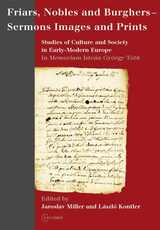 Friars, Nobles and Burghers – Sermons, Images and Prints: Studies of Culture and Society in Early-Modern Europe - In Memoriam István György Tóth
László Kontler
Central European University Press, 2010 The essays in this volume reflect the broader interpretation of culture as a system of shared meanings, values, attitudes and symbolic forms in any sphere of human life. Although thematically diverse, all these studies adhere to the concept of what is sometimes termed the new cultural history or socio-cultural history. The work opens with a cluster of methodological and historiographical reflections. Topics covered by the thematic sections include confessional and religious life in early modern Europe, symbolism and representation, strife and accommodation among different denominations compelled to live in a common space, order and hierarchy, cracks in the machinery of authority and the threat of disintegration as well as the history of alphabetization, literacy and reading and writing practices. This book pays tribute to István György Tóth (1956–2005), Head of the Department of Early-Modern History at the Institute of History of the Hungarian Academy of Sciences, and Professor of History at Central European University (both in Budapest), until his premature death in 2005.
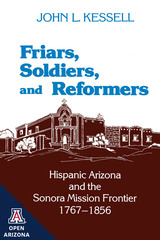 Friars, Soldiers, and Reformers: Hispanic Arizona and the Sonora Mission Frontier, 1767–1856
John L. Kessell
University of Arizona Press, 1976 The Franciscan mission San José de Tumacácori and the perennially undermanned presidio Tubac become John L. Kessell's windows on the Arizona–Sonora frontier in this colorful documentary history. His fascinating view extends from the Jesuit expulsion to the coming of the U.S. Army.
Kessell provides exciting accounts of the explorations of Francisco Garcés, de Anza's expeditions, and the Yuma massacre. Drawing from widely scattered archival materials, he vividly describes the epic struggle between Bishop Reyes and Father President Barbastro, the missionary scandals of 1815–18, and the bloody victory of Mexican civilian volunteers over Apaches in Arivaipa Canyon in 1832. Numerous missionaries, presidials, and bureaucrats—nameless in histories until now—emerge as living, swearing, praying, individuals.
This authoritative chronicle offers an engrossing picture of the continually threatened mission frontier. Reformers championing civil rights for mission Indians time and again challenged the friars' "tight-fisted paternalistic control" over their wards. Expansionists repeatedly saw their plans dashed by Indian raids, uncooperative military officials, or lack of financial support.
Frairs, Soldiers, and Reformers brings into sharp focus the long, blurry period between Jesuit Sonora and Territorial Arizona.
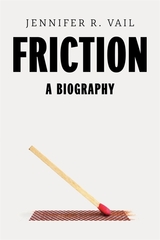 Friction: A Biography
Jennifer R. Vail
Harvard University Press, 2026 From the first spark of fire to the frontiers of energy, medicine, and space, a pioneering account of the invisible force that connects it all.
Friction, the force that resists motion, is synonymous with difficulty and complication. If you’ve ever replaced tires worn smooth by the road or reached for a can of WD-40 to fix a creaking door hinge, then you know the headache this force can cause.
In this book, Jennifer Vail reveals beneath the difficulty and complication a force as enigmatic and intriguing as it is central to the human story. She traces how, from the moment we first harnessed the power of fire to the Industrial Revolution and beyond, the quest to manipulate friction has driven innovation, culture, and even our own evolution. Today, as scientists study friction in the most unexpected of places, they’re learning why some viruses lie dormant for years while others devastate our cells immediately; where elusive dark matter might be found; and how the climate crisis ought finally be addressed. And yet, for all they’ve learned, scientists still haven’t cracked the greatest mystery of all: how to bridge the distinct laws that govern friction at its largest and smallest scales.
Connecting the discoveries of historical luminaries like Newton, da Vinci, and the Wright brothers to the latest breakthroughs in engineering, Friction is a captivating biography of this unsung hero of the physical world.
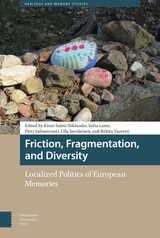 Friction, Fragmentation, and Diversity: Localized Politics of European Memories
Kirsti Salmi-Niklander
Amsterdam University Press, 2022 This collection focuses on difficult memories and diverse identities related to conflicts and localized politics of memories. The contemporary and history-oriented case studies discuss politicized memories and pasts, the frictions of justice and reconciliation, and the diversity and fragmentation of difficult memories. Friction, Fragmentation, and Diversity: Localized Politics of European Memories brings together methodological discussions from oral history research, cultural memory studies and the study of contemporary protest movements. The politicization of memories is analyzed in various contexts, ranging from everyday interaction and diverse cultural representations to politics of the archive and politics as legal processes. The politicization of memories takes place on multiple analytical levels: those inherent to the sources; the ways in which the collections are utilized, archived, or presented; and in the re-evaluation of existing research.
Frida Escobedo: Split Subject
Ken Stewart
Harvard University Press Split Subject, an early project by architect Frida Escobedo, deconstructs a fraught allegory of national identity and architectural modernism in Mexico. Unpacking this project and tracing its enduring influence throughout Escobedo’s career, Frida Escobedo: Split Subject reveals a multi-scalar and multi-medium practice whose creative output encompasses permanent buildings, temporary installations, public sculpture, art objects, publications, and exhibitions, and bares at its center a sensitivity to time and weathering, material and pattern, and memory. It includes essays by Julieta Gonzalez, Alejandro Hernández, Erika Naginski, Doris Sommer and José Falconi, and Irene Sunwoo, and a foreword by Wonne Ickx.
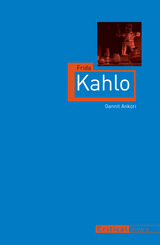 Frida Kahlo
Gannit Ankori
Reaktion Books, 2013 Frida Kahlo stepped into the limelight in 1929 when she married Mexican muralist Diego Rivera. She was twenty-two; he was forty-three. Hailed as Rivera’s exotic young wife who “dabbles in art,” she went on to produce brilliant paintings but remained in her husband’s shadow throughout her life. Today, almost six decades after her untimely death, Kahlo’s fame rivals that of Rivera and she has gained international acclaim as a path-breaking artist and a cultural icon. Cutting through “Fridamania,” this book explores Kahlo’s life, art, and legacies, while also scrutinizing the myths, contradictions, and ambiguities that riddle her dramatic story. Gannit Ankori examines Kahlo’s early childhood, medical problems, volatile marriage, political affiliations, religious beliefs, and, most important, her unparalleled and innovative art. Based on detailed analyses of the artist’s paintings, diary, letters, photographs, medical records, and interviews, the book also assesses Kahlo’s critical impact on contemporary art and culture. Kahlo was of her time, deeply immersed in the issues that dominated the first half of the twentieth century. Yet, as this book reveals, she was also ahead of her time. Her paintings challenged social norms and broke taboos, addressing themes such as the female body, gender, cross-dressing, hybridity, identity, and trauma in ways that continue to inspire contemporary artists across the globe. Frida Kahlo is a succinct and powerful account of the life, art and legacy of this iconic artist.
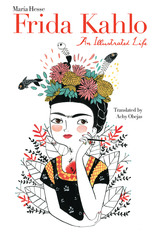 Frida Kahlo: An Illustrated Life
By María Hesse, translated by Achy Obejas
University of Texas Press, 2018 One of the most important artists of the twentieth century and an icon of courageous womanhood, Frida Kahlo lives on in the public imagination, where her popularity shows no signs of waning. She is renowned for both her paintings and her personal story, which were equally filled with pain and anguish, celebration and life. Thousands of words, including her own, have been written about Kahlo, but only one previous biography has recorded her fascinating, difficult life. Frida Kahlo by María Hesse offers a highly unique way of getting to know the artist by presenting her life in graphic novel form, with striking illustrations that reimagine many of Kahlo’s famous paintings. Originally published in Spanish in 2016, Frida Kahlo has already found an enthusiastic audience in the Spanish-speaking world, with some 20,000 copies sold in just a few months. This translation introduces English-language readers to Kahlo’s life, from her childhood and the traumatic accident that would change her life and her artwork, to her complicated love for Diego Rivera and the fierce determination that drove her to become a major artist in her own right. María Hesse tells the story in a first-person narrative, which captures both the depths of Frida’s suffering and her passion for art and life.
Friday Comes on Tuesday: An Adventure at Crystal Bridges Museum of American Art
Darcy Pattison
University of Arkansas Press, 2021 Winner, 2022 Susannah DeBlack Award, Arkansas Historical Association
The delightful story of Friday, a dog who discovers that the world of art is filled with many wonderful friends. A dog in an art museum? Maybe not most dogs, but Friday goes to the museum every Tuesday to visit his friends. One day Friday must say goodbye for the winter. Join the fun as Friday trots through the galleries, taking photos and saying goodbye to Maman the spider, Rosie the Riveter, George Washington, and many others. Looking back on his day, Friday realizes that the works of art in a museum are more than just bronze and steel, paint and canvas, ink and paper. Instead, the art connects him—and us—to a diversity of cultures, stories, and dreams. Through the art collection at Crystal Bridges, all of us—even a dog—become part of the American experience.
Lexile Level: 570L
 The Friday Mosque in the City: Liminality, Ritual, and Politics
Edited by A. Hilâl Ugurlu and Suzan Yalman
Intellect Books, 2020 This edited volume explores the dynamic relationship between the Friday mosque and the Islamic city, addressing the traditional topics through a fresh new lens and offering a critical examination of each case study in its own spatial, urban, and socio-cultural context. While these two well-known themes—concepts that once defined the field—have been widely studied by historians of Islamic architecture and urbanism, this compilation specifically addresses the functional and spatial ambiguity or liminality between these spaces.
Instead of addressing the Friday mosque as the central signifier of the Islamic city, this collection provides evidence that there was (and continues to be) variety in the way architectural borders became fluid in and around Friday mosques across the Islamic world, from Cordoba to Jerusalem and from London to Lahore. By historicizing different cases and exploring the way human agency, through ritual and politics, shaped the physical and social fabric of the city, this volume challenges the generalizing and reductionist tendencies in earlier scholarship.
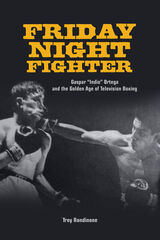 Friday Night Fighter: Gaspar "Indio" Ortega and the Golden Age of Television Boxing
Troy Rondinone
University of Illinois Press, 2013 Friday Night Fighter relives a lost moment in American postwar history, when boxing ruled as one of the nation's most widely televised sports. During the 1950s and 1960s, viewers tuned in weekly, sometimes even daily, to watch widely recognized fighters engage in primordial battle; the Gillette Cavalcade of Sports Friday Night Fights was the most popular fight show. Troy Rondinone follows the dual narratives of the Friday Night Fights show and the individual story of Gaspar "Indio" Ortega, a boxer who appeared on prime-time network television more than almost any other boxer in history. From humble beginnings growing up poor in Tijuana, Mexico, Ortega personified the phenomenon of postwar boxing at its greatest, appearing before audiences of millions to battle the biggest names of the time, such as Carmen Basilio, Tony DeMarco, Chico Vejar, Benny "Kid" Paret, Emile Griffith, Kid Gavilan, Florentino Fernández, and Luis Manuel Rodriguez. Rondinone explores the factors contributing to the success of televised boxing, including the rise of television entertainment, the role of a "reality" blood sport, Cold War masculinity, changing attitudes toward race in America, and the influence of organized crime. At times evoking the drama and spectacle of the Friday Night Fights themselves, this volume is a lively examination of a time in history when Americans crowded around their sets to watch the main event.
 Friedrich Dürrenmatt: Selected Writings, Volume 1, Plays
Friedrich Dürrenmatt
University of Chicago Press, 2006 These translations of Friedrich Dürrenmatt’s plays introduce the writer to a new generation of readers.
The Swiss writer Friedrich Dürrenmatt (1921–90) was one of the most important literary figures of the second half of the twentieth century. During the years of the cold war, arguably only Beckett, Camus, Sartre, and Brecht rivaled him as a presence in European letters. Yet outside Europe, this prolific author is primarily known for only one work, The Visit.
Dürrenmatt’s concerns are timeless, but they are also the product of his Swiss vantage during the cold war: his key plays, gathered in the first volume of Selected Writings, explore such themes as guilt by passivity, the refusal of responsibility, greed and political decay, and the tension between justice and freedom. In The Visit, for instance, an old lady who becomes the wealthiest person in the world returns to the village that cast her out as a young woman and offers riches to the town in exchange for the life of the man, now its mayor, who once disgraced her. Joel Agee’s crystalline translation gives a fresh lease to this play, as well as four others: The Physicists, Romulus the Great, Hercules and the Augean Stables, and The Marriage of Mr. Mississippi.
Dürrenmatt has long been considered a great writer, but one unfairly neglected in the modern world of letters. With these elegantly conceived and expertly translated volumes, a new generation of readers will rediscover his greatest works.
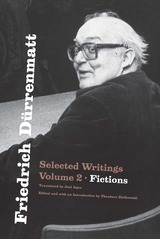 Friedrich Dürrenmatt: Selected Writings, Volume 2, Fictions
Friedrich Dürrenmatt
University of Chicago Press, 2006 These translations of Friedrich Dürrenmatt’s fiction introduce the writer to a new generation of readers.
The Swiss writer Friedrich Dürrenmatt (1921–90) was one of the most important literary figures of the second half of the twentieth century. During the years of the cold war, arguably only Beckett, Camus, Sartre, and Brecht rivaled him as a presence in European letters. Yet outside Europe, this prolific author is primarily known for only one work, The Visit.
This second volume of Selected Writings reveals a writer who may stand as Kafka’s greatest heir. Dürrenmatt’s novellas and short stories are searing, tragicomic explorations of the ironies of justice and the corruptibility of institutions. The most well-known work included here is The Pledge, a requiem to the detective story that was made into a film starring Jack Nicholson. The evocative novellas The Assignment tells the story of a woman filmmaker investigating a mysterious murder in an unnamed Arab country; it has been hailed by Sven Birkerts as “a parable of hell for an age consumed by images.” The novella Traps, meanwhile, is a chilling comic novella about a traveling salesman who agrees to play the role of the defendant in a mock trial among dinner companions—and then pays the ultimate penalty.
Dürrenmatt has long been considered a great writer, but one unfairly neglected in the modern world of letters. With these elegantly conceived and expertly translated volumes, a new generation of readers will rediscover his greatest works.
 Friedrich Dürrenmatt: Selected Writings, Volume 3, Essays
Friedrich Dürrenmatt
University of Chicago Press, 2006 These translations of Friedrich Dürrenmatt’s essays introduce the writer to a new generation of readers.
The Swiss writer Friedrich Dürrenmatt (1921–90) was one of the most important literary figures of the second half of the twentieth century. During the years of the cold war, arguably only Beckett, Camus, Sartre, and Brecht rivaled him as a presence in European letters. Yet outside Europe, this prolific author is primarily known for only one work, The Visit. With these long-awaited translations of his plays, fictions, and essays, Dürrenmatt becomes available again in all his brilliance to the English-speaking world.
Dürrenmatt’s essays, gathered in this third volume of Selected Writings, are among his most impressive achievements. Their range alone is astonishing: he wrote with authority and charm about art, literature, philosophy, politics, and the theater. The selections here include Dürrenmatt’s best-known essays, such as “Theater Problems” and “Monster Essay on Justice and Law,” as well as the notes he took on a 1970 journey in America (in which he finds the United States “increasingly susceptible to every kind of fascism”). This volume also includes essays that shade into fiction, such as “The Winter War in Tibet,” a fantasy of a third world war waged in a vast subterranean labyrinth—a Plato’s Cave allegory rewritten for our own troubled times.
Dürrenmatt has long been considered a great writer, but one unfairly neglected in the modern world of letters. With these elegantly conceived and expertly translated volumes, a new generation of readers will rediscover his greatest works.
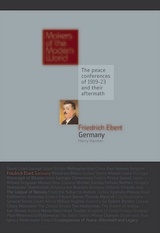 Friedrich Ebert: Germany
Harry Harmer
Haus Publishing, 2009 On 9 November 1918 Ebert became Imperial Chancellor as revolution broke out in Berlin. He opposed the radical left, declaring, 'Without democracy there is no freedom. Violence, no matter who is using it, is always reactionary', but he compromised Weimar democracy by his dependence on the army command and his use of the para-military Freikorps against the left. Ebert headed a joint SPD-USPD government until elections were held to a National Constituent Assembly in January 1919. Ebert became president of the new Weimar Republic (Germany's first democratically elected head of state) and retained office in a turbulent period in German politics. There were arguments among the Allies over how Germany should be treated, as France, Britain and the United States prioritised different objectives. In May 1919, the terms of the Treaty - on reparations, war guilt clause, loss of territories in Europe and colonies, limitations on armed forces - were presented to German representatives, precipitating opposition in government and the Armed Forces, and heated discussion in Cabinet. He continued as President until 1925, forced to confront the issues that arose from the Treaty and its political and economic consequences. After his death came the unravelling of the Treaty and the book examines how much of a part it played in creating the circumstances of the Second World War.
Friedrich Hayek: A Biography
Alan Ebenstein
University of Chicago Press, 2003 In the first full biography of Friedrich Hayek (1899-1992), Alan Ebenstein chronicles the life, works, and legacy of the visionary thinker, from his early years in fin-de-siècle Vienna to his remarkable career as a Nobel Prize winning economist, political philosopher, and leading public intellectual. Ebenstein gives a balanced, integrated account of Hayek's diverse body of work, from his first encounter with free market ideas to his magisterial writings in later life on the legal, political, ethical, and economic requirements of a free society.
Friedrich Nietzsche and the Politics of Transfiguration (expanded ed.)
Tracy B. Strong
University of Illinois Press, 2000 Friedrich Nietzsche and the Politics of Transfiguration provides a comprehensive analysis of the politics that are implicit and explicit in Nietzsche's work. Tracy B. Strong's discussion shows that Nietzsche's writings are of a piece and have as their common goal a politics of transfiguration: a politics that seeks radical change in how human beings live and act in the modern Western world. This edition includes a new introduction that demonstrates how the styles of Nietzsche's writings expand our notions of democratic politics and democratic understanding.
 Friedrich Schlegel’s Lucinde and the Fragments
Translated by Peter FirchowIntroduction by Peter Firchow
University of Minnesota Press, 1971 Friedrich Schlegel's Lucinde and the Fragments was first published in 1971. Minnesota Archive Editions uses digital technology to make long-unavailable books once again accessible, and are published unaltered from the original University of Minnesota Press editions. For the last century and a half, Friedrich Schlegel (1772–1829) has enjoyed a reputation for being the critical grey eminence behind the coming to power of the Romantic Movement. It was Schlegel, in his three series of aphoristic fragments (Lyceum, Athenaeum, and Ideas), who actually first defined and employed the word "romantic" in the present sense; and it was he who in a chaotic, fragmentary, and often mysterious but forceful manner first proclaimed the doctrine that was to usher in the modern age in literature. He too was among the first to put his new program into practice in the shape of his unfinished Lucinde,a work variously denounced as pornography and heralded as a forerunner of modern novelistic experimentation, and probably the most famous novel to come out of German Romanticism. Both the Fragments and Lucinde,along with a brilliant tour de force, the "Essay on Incomprehensibility," are available now for the first time in a complete English translation in this volume, together with a brief scholarly introduction. This translation will enable non-German readers to examine at first hand the work of a man whom Rene Wellck has called "one of the greatest critics of history." At a time when the function of criticism is coming once again under close skeptical scrutiny, Friedrich Schlegel's unorthodox, unsystematic but seminal critical mind—all of literature, philosophy, art, and history were grist to his mill—should find many sympathetic readers. The book will be of particular interest to theorists of literature and fiction, comparative literature scholars, and historians of the intellectual history of Germany, and it is appropriate for course use in German and comparative literature classes.
 Friedrich Schleiermacher: The Evolution of a Nationalist
By Jerry F. Dawson
University of Texas Press, 1966 Nationalism was a driving, moving spirit in the nineteenth-century Germany of Friedrich Schleiermacher. Jerry F. Dawson, through his thoughtful and well-wrought study of Friedrich Schleiermacher, provides an insight into contemporary nationalistic movements and the people who have a part in them. Schleiermacher, a prominent theologian and educator, was also a leading contributor to the tide of nationalism which swept Germany during the Napoleonic era. Dawson does not present Schleiermacher as an archetype for nationalists, but rather as an example of one man who was willing to sacrifice everything for the good of the nation. Examining the influence of Pietism, rationalism, and romanticism on Schleiermacher, the author explains the origins of his subject's nationalistic activities and traces the evolution of his patriotic point of view. Dawson depicts the development of Schleiermacher's patriotism from Prussian particularism to German nationalism—an allegiance to an idealized Germany unified in religion, language, folkways. He describes the diverse approaches utilized by Schleiermacher to achieve a patriotic awakening among his countrymen: "…he preached nationalistic sermons; he delivered scholarly lectures; he repeatedly risked his life on dangerous missions which would help free Germany from France; he used his journalistic talents to try to stimulate the national consciousness of the German people; and he even served in the government of Prussia in an attempt to reconstruct the educational system so that nationalism might be advanced."
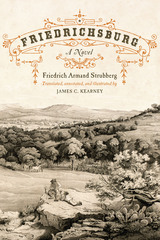 Friedrichsburg: A Novel
By Friedrich Armand Strubberg
University of Texas Press, 2012 Summerfield G. Roberts Award for a Work of Creative Writing, Sons of the Texas Republic, 2013
First published in Germany in 1867, this fascinating autobiographical novel of German immigrants on the antebellum Texas frontier provides a trove of revelations about the myriad communities that once called the Hill Country home. Founded in 1846, Fredericksburg, Texas, was established by German noblemen who enticed thousands of their compatriots to flee their overcrowded homeland with the prospect of free land in a place that was portrayed as a new Garden of Eden. Few of the settlers, however, were prepared for the harsh realities of the Texas frontier or for confrontation with the Comanche. In his 1867 novel Friedrichsburg, Friedrich Armand Strubberg, a.k.a. Dr. Schubbert, interwove his personal story with a fictional romance to capture the flavor of Fredericksburg, Texas, during its founding years when he served as the first colonial director. Now available in a contemporary translation, Friedrichsburg brings to life the little-known aspects of life among these determined but often ill-equipped settlers who sought to make the transition to a new home and community on the Texas frontier. Opening just as a peace treaty is being negotiated between the German newcomers and the Comanches, the novel describes the unlikely survival of these fledgling homesteads and provides evidence that support from the Delaware Indians, as well as the nearby Mormon community of Zodiac, was key to the Germans’ success. Along the way, Strubberg also depicts the laying of the cornerstone to the Vereinskirche, the blazing of an important new road to Austin, exciting hunting scenes, and an admirable spirit of cultural cohesion and determined resilience. In so doing, he resurrects a fascinating lost world.
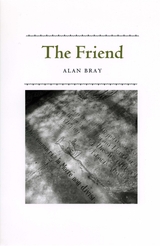 The Friend
Alan Bray
University of Chicago Press, 2003 In the chapel of Christ's College, Cambridge, some twenty years ago, historian Alan Bray made an astonishing discovery: a tomb shared by two men, John Finch and Thomas Baines. The monument featured eloquent imagery dedicated to their friendship: portraits of the two friends linked by a knotted cloth. And Bray would soon learn that Finch commonly described his friendship with Baines as a connubium or marriage.
There was a time, as made clear by this monument, when the English church not only revered such relations between men, but also blessed them. Taking this remarkable idea as its cue, The Friend explores the long and storied relationship between friendship and the traditional family of the church in England. This magisterial work extends from the year 1000, when Europe acquired a shape that became its enduring form, and pursues its account up to the eighteenth and nineteenth centuries. Spanning a vast array of fascinating examples, which range from memorial plaques and burial brasses to religious rites and theological imagery to classic works of philosophy and English literature, Bray shows how public uses of private affection were very common in premodern times. He debunks the now-familiar readings of friendship by historians of sexuality who project homoerotic desires onto their subjects when there were none. And perhaps most notably, he evaluates how the ethics of friendship have evolved over the centuries, from traditional emphases on loyalty to the Kantian idea of moral benevolence to the more private and sexualized idea of friendship that emerged during the modern era.
Finely nuanced and elegantly conceived, The Friend is a book rich in suggestive propositions as well as eye-opening details. It will be essential reading for anyone interested in the history of England and the importance of friendship in everyday life.
History Today’s Book of the Year, 2004
“Bray’s loving coupledom is something with a proper historical backbone, with substance and form, something you can trace over time, visible and archeologicable. . . . Bray made a great contribution in helping to bring this long history to light.”— James Davidson, London Review of Books
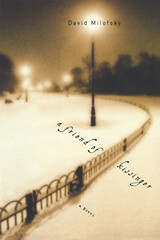 Friend of Kissinger: A Novel
David Milofsky
University of Wisconsin Press, 2003 In this lively coming-of-age novel, young Danny Meyer lays bare a landscape of illness and despair but emerges triumphant, with a new awareness of the limitations of security and the lessons of eternity. Danny’s bubble-like existence in paradisal Madison is broken when his father, a concert pianist and professor, is stricken with illness and must give up his professorship. The family is forced to move to Milwaukee to live at the brink of poverty while his father gets sicker, his artistic mother struggles as bread-winner, and his brother becomes delusional. Here, Danny finds himself in the uncertain position of having to accept the responsibilities of manhood while still struggling with adolescence.
In a world that keeps shifting, Danny befriends the son of a gangster and, through his brushes with that compelling world of crime, finds his way to a new confidence. Realistically portrayed, A Friend of Kissinger, captures an authentic sense of place that is one part arty, heartland Main Street and one part shady, small-time gangsterland.
A Friend of Kissinger: A Novel
David Milofsky
University of Wisconsin Press, 2019 Thirteen-year-old Danny Meyer's charmed life in Madison comes to an abrupt end when his concert pianist father falls ill and must give up his professorship. The family is forced to move to Milwaukee and live on the edge of poverty as his father's health worsens. Struggling with the change, Danny befriends the son of a gangster. Through brushes with a thrilling world of crime, he soon finds his way to a new confidence. <em>A Friend of Kissinger</em> captures a sentimental and authentic sense of place in a midwestern rust belt city, following a young man learning to make sense of the world around him.
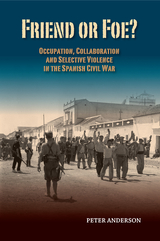 Friend or Foe?: Occupation, Collaboration and Selective Violence in the Spanish Civil War
Peter Anderson
Sussex Academic Press, 2022 'Today with the Red Army captive and disarmed, the Nationalist [nacionales] troops have achieved their final military objectives. The war is over.' With these two sentences, General Franco announced on April 1, 1939 that his writ ran across the whole of Spain. His words marked a high point for those who had flocked to Franco who, since the start of the Civil War in July 1936, had carried out what was regarded as the steady occupation of the country. The history of this occupation remains conspicuous by its absence, and the term occupation lies discredited for many historians. The danger of leaving the history of the occupation unexplored, however, is that a major process designed to control the conquered population remains in the shadows and, unlike many other European countries, the view of occupation as an imposition by outsiders remains unchallenged. Friend or Foe? explores how Francoist occupation saw members of the state and society collaborate to win control of Spanish society. At the heart of the process lies the challenging task in civil war of distinguishing between supporter and opponent. Occupation also witnessed a move from arbitrary violence towards selecting opponents for carefully graded punishment. Such selection depended upon fine-grained information about vast swathes of the population. The massive scale of the surveillance meant that regime officials depended on collaborators within the community to furnish them with the information needed to write huge numbers of biographies. Accordingly, knowledge as a form of power became as crucial as naked force as neighbours of the defeated helped define who would gain reward as a friend and who would suffer punishment as a foe. [Subject: Spanish Civil War, History, Military Studies]
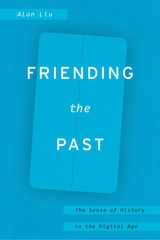 Friending the Past: The Sense of History in the Digital Age
Alan Liu
University of Chicago Press, 2018 Can today’s society, increasingly captivated by a constant flow of information, share a sense of history? How did our media-making forebears balance the tension between the present and the absent, the individual and the collective, the static and the dynamic—and how do our current digital networks disrupt these same balances? Can our social media, with its fleeting nature, even be considered social at all?
In Friending the Past, Alan Liu proposes fresh answers to these innovative questions of connection. He explores how we can learn from the relationship between past societies whose media forms fostered a communal and self-aware sense of history—such as prehistorical oral societies with robust storytelling cultures, or the great print works of nineteenth-century historicism—and our own instantaneous present. He concludes with a surprising look at how the sense of history exemplified in today’s JavaScript timelines compares to the temporality found in Romantic poetry.
Interlaced among these inquiries, Liu shows how extensive “network archaeologies” can be constructed as novel ways of thinking about our affiliations with time and with each other. These conceptual architectures of period and age are also always media structures, scaffolded with the outlines of what we mean by history. Thinking about our own time, Liu wonders if the digital, networked future can sustain a similar sense of history.
A Friendly Companion to Plato's Gorgias
George Kimball Plochmann and Franklin E. Robinson
Southern Illinois University Press, 1987
A comprehensive study of “one of the most elusive and subtle” of all the Platonic dialogues.
The Gorgias begins with a discussion of the nature and value of rhetoric and develops into an impassioned argument for the primacy of absolute right (as expressed by conscience) in the regulation of both public and private life. Plochmann and Robinson closely analyze this great dialogue in the first two-thirds of their book, turning in the final four chapters to a broader discussion of its unity, sweep, and philosophic implications.
Friendly Fallout 1953
Ann Ronald
University of Nevada Press, 2011 Friendly Fallout 1953 is a hybrid work of literature that combines the actual history of aboveground atomic testing in the Nevada desert in 1953 with fictional vignettes that explore the impact of the tests on the people who participated in them and on civilian "downwinders." The book brings to life a turbulent era when Cold War fears, patriotic enthusiasm, scientific progress, and unacknowledged political agendas often collided with the welfare of ordinary citizens and the environment.
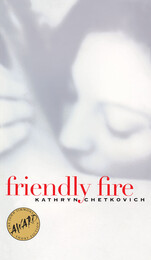 Friendly Fire
Kathryn Chetkovich
University of Iowa Press, 1998
Winner of the 1998 John Simmons Short Fiction Award
"These stories about the common human experiences of romance, friendship, and family are rich with witty, devastating observations. They show us what it means to live where friendly fire is the real hazard. Kathy Chetkovich's touch is deft, affectionate, and very funny."--Nancy Packer, author of Jealous-Hearted Me
"I was once lucky enough to publish a story Kathy Chetkovich had worked on for fourteen years, at least that's what she claimed. To me the story felt like a bolt of fire, searing, delicious, made for the moment, all-devouring. She is the kind of crafty writer who makes it seem so easy. I read her the way I eat an apple--grateful something so close to home can be so exquisite."--Howard Junker, editor, ZYZZYVA
"This is a book that's genuine fun to read thanks in part to the comic vision that gives these stories a memorable charm. The humor in Friendly Fire springs more from keen observation than situation. It's a complex humor that seems absolutely natural to the predominantly youthful voices of these narrators; yet, beneath the quips, there's a wisdom that prevents the youthfulness from ever seeming callow and a sense of understated sentiment that's all the more affecting for its comic guise."--Stuart Dybek, author of Childhood and Other Neighbors and judge of the 1998 John Simmons Short Fiction Award
Friendly Fire describes how we are sometimes brought down by those we love. Kathryn Chetkovich's stories detail the lives of women finding their way in a contemporary world where the traditional maps of love, family, and community are no longer particularly reliable.
The Friendly Liquidation of the Past: The Politics of Diversity in Latin America
Donna Lee Van Cott
University of Pittsburgh Press, 2000 Based on interviews with more than 100 participants, Van Cott demonstrates how social issues were placed on the constitutional reform agenda and transformed into the nation’s highest law. She follows each reform for five years to assess early results of what she calls an emerging model of multicultural constitutionalism.
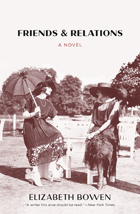 Friends and Relations: A Novel
Elizabeth Bowen
University of Chicago Press, 2012
In his introduction to a collection of criticism on the Anglo-Irish author Elizabeth Bowen, Harold Bloom wrote, “What then has Bowen given us except nuance, bittersweet and intelligent? Much, much more.” Born in 1899, Bowen became part of the famous Bloomsbury scene, and her novels have a much-deserved place in the modernist canon. In recent years, however, her work has not been as widely read or written about, and as Bloom points out, her evocative and sometimes enigmatic prose requires careful parsing. Yet in addition to providing a fertile ground for criticism, Bowen’s novels are both wonderfully entertaining, with rich humor, deep insight, and a tragic sense of human relationships.
Friends and Relations follows the exploits of four wealthy families whose lives are changed forever by a torrid affair. The Studdart sisters each take a husband; for beautiful Laurel there is Edward Tilney, and for the introverted Janet there is Rodney Meggatt. But the marriages are complicated by changeable passions, and each character must navigate the conflict between familial piety and individual desire. With Bowen’s signature blend of tragedy and comedy, Friends and Relations is truly an investigation into the human heart, and the book is as beautiful, mysterious, and moving as its subject.
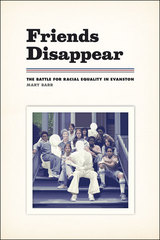 Friends Disappear: The Battle for Racial Equality in Evanston
Mary Barr
University of Chicago Press, 2014 Mary Barr thinks a lot about the old photograph hanging on her refrigerator door. In it, she and a dozen or so of her friends from the Chicago suburb of Evanston sit on a porch. It's 1974, the summer after they graduated from Nichols Middle School, and what strikes her immediately—aside from the Soul Train–era clothes—is the diversity of the group: boys and girls, black and white, in the variety of poses you'd expect from a bunch of friends on the verge of high school. But the photo also speaks to the history of Evanston, to integration, and to the ways that those in the picture experienced and remembered growing up in a place that many at that time considered to be a racial utopia.
In Friends Disappear Barr goes back to her old neighborhood and pieces together a history of Evanston with a particular emphasis on its neighborhoods, its schools, and its work life. She finds that there is a detrimental myth of integration surrounding Evanston despite bountiful evidence of actual segregation, both in the archives and from the life stories of her subjects. Curiously, the city’s own desegregation plan is partly to blame. The initiative called for the redistribution of students from an all-black elementary school to institutions situated in white neighborhoods. That, however, required busing, and between the tensions it generated and obvious markers of class difference, the racial divide, far from being closed, was widened. Friends Disappear highlights how racial divides limited the life chances of blacks while providing opportunities for whites, and offers an insider’s perspective on the social practices that doled out benefits and penalties based on race—despite attempts to integrate.
Friends, Foes, and Future Directions: U.S. Partnerships in a Turbulent World: Strategic Rethink
Hans Binnendijk
RAND Corporation, 2016 Report evaluates strategies for dealing with U.S. partners and adversaries in Europe, Asia, and the Middle East in a time of diminishing defense budgets and American public preference for a domestic focus. The three proposed strategies are to be more assertive, to be more collaborative, or to retrench from international commitments. Each strategy is constrained and a balance will need to be struck among them that varies from region to region.
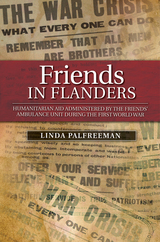 Friends in Flanders: Humanitarian Aid Administered by the Friends' Ambulance Unit during the First World War
Linda Palfreeman
Sussex Academic Press, 2022 The Friends' Ambulance Unit (FAU) was created shortly after the outbreak of war. The idea of the unit's founder, Philip J. Baker, was that it would provide young Friends (Quakers) with the opportunity to serve their country without sacrificing their pacifist principles. The first volunteers went to Belgium on October 31, 1914, under the auspices of the Joint War Committee of the British Red Cross Society and the Order of St John of Jerusalem. The FAU made a sustained contribution to the military medical services of the Allied nations, establishing military hospitals, running ambulance convoys, and staffing hospital ships and ambulance trains, treating and transporting wounded men. Determined to bring succour to all those in need, the FAU also assisted civilians trapped in the war zone and living in desperate circumstances. Nowhere was this more acute than in the besieged and battered town of Ypres where thousands sheltered in the underground passage-ways of the town's ancient fortifications. The Unit provided hospitals for the treatment of civilians, and worked intensively in the containment and treatment of the typhoid epidemic that swept the region, locating sufferers, providing them with medical care, and inoculating people against the disease. It played a major role in the purification of the town's contaminated drinking water, distributed milk for infants and food and clothing to the sick and needy. It helped found orphanages, made provision for schooling and organised gainful employment for refugees until, finally, it became responsible for the definitive evacuations of the civilian population. This book tells the story of the FAU. [Subject: WWI, Military History, Quakers]
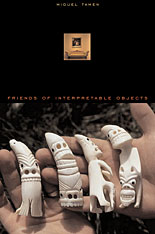 Friends of Interpretable Objects
Miguel Tamen
Harvard University Press, 2001 A strikingly original work, Friends of Interpretable Objects re-anchors aesthetics in the object of attention even as it redefines the practice, processes, meaning, and uses of interpretation.
Miguel Tamen's concern is to show how inanimate objects take on life through their interpretation--notably, in our own culture, as they are collected and housed in museums. It is his claim that an object becomes interpretable only in the context of a "society of friends." Thus, Tamen suggests, our inveterate tendency as human beings to interpret the phenomenal world gives objects not only a life but also a society. As his work unfolds, "friends" also takes on a legal sense, as advocates, introduced to advance the argument that the social life of interpreted and interpretable objects engenders a related web of social obligations.
Focusing on those who, through interpretation, make objects "speak" in settings as different as churches, museums, forests, and distant galaxies--those who know the best interests of corporations, endangered species, and works of art--Tamen exposes the common ground shared by art criticism, political science, tort law, and science. Learned and witty, with much to teach art historians, environmentalists, anthropologists, curators, and literary critics, his book utterly reorients our understanding of how we make sense of our world.
 The Friends of Liberty: The English Democratic Movement in the Age of the French Revolution
Albert Goodwin
Harvard University Press, 1979 This book is the first comprehensive study tracing the origins and growth of English radicalism from the time of John Wilkes’s defiant fight for the rights of parliamentary electors to the final suppression of radical societies in 1799. It spans the age of revolution in England as the revolution absorbed reverberations from the American colonies and France, and was sometimes diverted by happenings in Scotland and Ireland.
“The Friends of Liberty” was the name English reformers took under George Ill's reign as they fought aristocratic rule and imperial domination within the English empire and abroad. They supported universal manhood suffrage, annual parliaments, social justice, the right of association, and they fought government suppression. At the height of their activity they were attacked as Jacobins, but the unfair denigration only hastened the beginnings of working class political consciousness and the formation of English conservatism.
Albert Goodwin contributes greatly to a profound understanding of the origins of popular radicalism in three ways. He reifies radicalism in urban areas beyond London—in the provincial cities of Manchester, Sheffield, Norwich, Birmingham, Derby, and Leicester. He places radicalism into a continental context. Finally, he traces radical thought from its seventeenth-century origins, through metropolitan Wilkite radicalism, Painite republicanism, and to Godwinian and Spencerian utopianism.
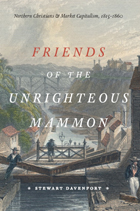 Friends of the Unrighteous Mammon: Northern Christians and Market Capitalism, 1815-1860
Stewart Davenport
University of Chicago Press, 2008 What did Protestants in America think about capitalism when capitalism was first something to be thought about? The Bible told antebellum Christians that they could not serve both God and mammon, but in the midst of the market revolution most of them simultaneously held on to their faith while working furiously to make a place for themselves in a changing economic landscape. In Friends of the Unrighteous Mammom, Stewart Davenport explores this paradoxical partnership of transcendent religious values and earthly, pragmatic objectives, ultimately concluding that religious and ethical commitments, rather than political or social forces, shaped responses to market capitalism in the northern states in the antebellum period.
Drawing on diverse primary sources, Davenport identifies three distinct Christian responses to market capitalism: assurance from clerical economists who believed in the righteousness of economic development; opposition from contrarians who resisted the changes around them; and adaptation by the pastoral moralists who modified their faith to meet the ethical challenges of the changing economy. Delving into the minds of antebellum Christians as they considered themselves, their God, and their developing American economy, Friends of the Unrighteous Mammon is an ambitious intellectual history of an important development in American religious and economic life.
Friendship and Benefaction in James
Alicia J. Batten
SBL Press, 2017 Now
available
from
SBL
Press
Employing social description, social scientific models, and rhetorical analysis, Alicia J. Batten argues that the letter of James is conversant with the topic of friendship within Greek and Roman literature, as well as within various texts of early Christianity. She illustrates how James drew upon some of the language and concepts related to friendship with an intriguing density to advocate resistance to wealth, avoidance of rich patrons, and reliance upon God.
Features:
- Use of friendship, benefaction, and patronage as lenses through which James and related texts can be viewed
- A strong case for how the letter appels to the language and ideas of friendship with regard to God's relationships with humans
- Exploration of the relationship between the book of James and the teachings of Jesus
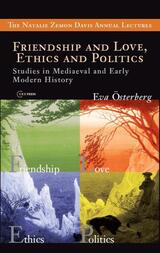 Friendship and Love, Ethics and Politics: Studies in Mediaeval and Early Modern History
Eva Österberg
Central European University Press, 2010 Today, friendship, love and sexuality are mostly viewed as private, personal and informal relations. In the mediaeval and early modern period, just like in ancient times, this was different. The classical philosophy of friendship (Aristotle) included both friendship and love in the concept of philia. It was also linked to an argument about the virtues needed to become an excellent member of the city state. Thus, close relations were not only thought to be a matter of pleasant gatherings in privacy, but just as much a matter of ethics and politics.What, then, happened to the classical ideas of close relations when they were transmitted to philosophers, clerical and monastic thinkers, state officials or other people in the medieval and early modern period? To what extent did friendship transcend the distinctions between private and public that then existed? How were close relations shaped in practice? Did dialogues with close friends help to contribute to the process of subject-formation in the Renaissance and Enlightenment? To what degree did institutions of power or individual thinkers find it necessary to caution against friendship or love and sexuality?
 Friendship and the Moral Life
Paul J. Wadell, C.P.
University of Notre Dame Press, 1990 Friendship and the Moral Life is not simply a theoretical argument about how moral theology might be done if it took friendship more seriously. Rather, the book exhibits how without friendship, our lives are morally not worth living. The book begins with a consideration of why a new model of the moral life is needed. Wadell then examines the ethics of Aristotle, who viewed the moral life as based on a specific understanding of the purpose of being human, with friendship being an important factor in enabling people to acquire virtues necessary for achieving this purpose. Through the thought of Augustine, Aelred of Reivaulx, and Karl Barth, the question is raised whether friendship is at odds with Christian love or whether their relation depends on one's narrative account of friendship. Thomas Aquinas' understanding of charity as friendship with God is examined to clarify this relationship.
By locating friendship within the story of God's redemption through Christ, Wadell helps us see why friendship properly understood is integral to the Christian life and not at odds with it. Such a friendship draws us to love all others who seek God and teaches us not to restrict our concern to a special few in preferential love. The book closes by investigating how friendship as a model for the moral life might work in everyday life.
 Friendship as Social Justice Activism: Critical Solidarities in a Global Perspective
Edited by Niharika Banerjea, Debanuj DasGupta, Rohit K. Dasgupta, and Jaime M. Grant
Seagull Books Friendship as Social Justice Activism brings together academics and activists to have essential conversations about friendship, love, and desire as kinetics for social justice movements. The contributors featured here come from across the globe and are all involved in diverse movements, including LGBTQ rights, intimate-partner violence, addiction recovery, housing, migrant, labor, and environmental activism. Each essay narrates how living and organizing within friendship circles offers new ways of dreaming and struggling for social justice.
Recent scholarship in different disciplinary fields as well as activist literature have brought attention to the political possibilities within friendship. The essays, memoirs, poems, and artwork in Friendship as Social Justice Activism address these political possibilities within the context of gender, sexuality, and economic justice movements.
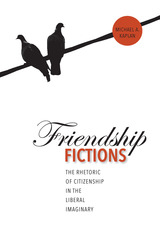 Friendship Fictions: The Rhetoric of Citizenship in the Liberal Imaginary
Michael A. Kaplan
University of Alabama Press, 2010 Friendship serves as a metaphor for citizenship and mirrors the individual’s participation in civic life. Friendship Fictions unravels key implications of this metaphor and demonstrates how it can transform liberal culture into a more just and democratic way of life.
A criticism often leveled at liberal democratic culture is its emphasis on the individual over community and private life over civic participation. However, liberal democratic culture has a more complicated relationship to notions of citizenship. As Michael Kaplan shows, citizenship comprises a major theme of popular entertainment, especially Hollywood film, and often takes the form of friendship narratives; and this is no accident. Examining the representations of citizenship-as-friendship in four Hollywood films (The Big Chill, Thelma & Louise, Lost in Translation, and Smoke), Kaplan argues that critics have misunderstood some of liberal democracy’s most significant features: its resilience, its capacity for self-revision, and the cultural resonance of its model of citizenship. For Kaplan, friendship—with its dynamic pacts, fluid alliances, and contingent communities—is one arena in which preconceptions about individual participation in civic life are contested and complicated. Friendship serves as a metaphor for citizenship and mirrors the individual’s participation in civic life. Friendship Fictions unravels key implications of this metaphor and demonstrates how it can transform liberal culture into a more just and democratic way of life.
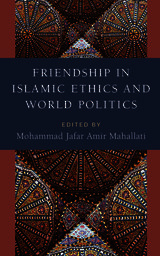 Friendship in Islamic Ethics and World Politics
Edited by Mohammad Jafar Amir Mahallati
University of Michigan Press, 2019 Based on a decade of direct diplomatic engagement with the United Nations, a decade of teaching on international relations, and another decade of research and teaching on Islamic and comparative peace studies, this book offers a friendship-related academic framework that examines shared moral concepts, philosophical paradigms, and political experiences that can develop and expand multidisciplinary conversations between the Christian West and the Muslim East. By advancing multicultural and interreligious discourses on friendship, this book helps promote actual friendships among diverse cultures and peoples. This is not a monologue. It provides a model of conversations among scholars and political actors who come from diverse international and interreligious backgrounds. The word “Islamic” should not mislead the reader to suspect that this edited volume delves only into religious discourses. Rather, it provides a forum for conversations within and between religious and philosophical perspectives. It sparks friendship conversations thematically and through disciplinary and cultural diversity. The result of the work of many prominent international scholars and diplomats over many years, it conveys at least one message clearly: friendship matters for not only our happiness but also for our survival.
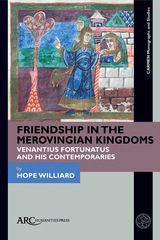 Friendship in the Merovingian Kingdoms: Venantius Fortunatus and His Contemporaries
Hope Williard
Arc Humanities Press, 2022
This book explores how one early medieval poet survived and thrived amidst the political turbulence of sixth century Gaul—with a little help from his friends. Born in northern Italy, Venantius Fortunatus made his career writing for and about members of the Merovingian elite. Although he is no longer dismissed as an opportunistic poetaster who wrote undistinguished flattery for undeserving kings and aristocrats, his work remains unduly neglected. This book reframes Fortunatus as a writer uniquely suited to his times, a professional poet who addressed his contemporaries’ needs and wishes for the prestige and sophistication of Classical culture. His poems and letters enabled his aristocratic patrons to situate themselves in networks, which they made and maintained in order to navigate a post-imperial but not post-Roman world. It makes an important contribution to our understanding of friendship in the Middle Ages and offers a fresh look at the Frankish kingdoms of Merovingian Gaul.
 Friendship, Love, and Trust in Renaissance Florence
Dale Kent
Harvard University Press, 2009 The question of whether true friendship could exist in an era of patronage occupied Renaissance Florentines as it had the ancient Greeks and Romans whose culture they admired and emulated. Rather than attempting to measure Renaissance friendship against a universal ideal defined by essentially modern notions of disinterestedness, intimacy, and sincerity, in this book Dale Kent explores the meaning of love and friendship as they were represented in the fifteenth century, particularly the relationship between heavenly and human friendship.
She documents the elements of shared experience in friendships between Florentines of various occupations and ranks, observing how these were shaped and played out in the physical spaces of the city: the streets, street corners, outdoor benches and loggias, family palaces, churches, confraternal meeting places, workshops of artisans and artists, taverns, dinner tables, and the baptismal font.
Finally, Kent examines the betrayal of trust, focusing on friends at moments of crisis or trial in which friendships were tested, and failed or endured. The exile of Cosimo de’ Medici in 1433 and his recall in 1434, the attempt in 1466 of the Medici family’s closest friends to take over their patronage network, and the Pazzi conspiracy to assassinate Lorenzo and Giuliano de’ Medici in 1478 expose the complexity and ambivalence of Florentine friendship, a combination of patronage with mutual intellectual passion and love—erotic, platonic, and Christian—sublimely expressed in the poetry and art of Michelangelo.
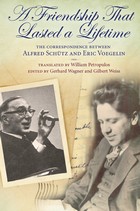 A Friendship That Lasted a Lifetime: The Correspondence Between Alfred Schutz and Eric Voegelin
Edited by Gerhard Wagner and Gilbert Weiss, Translated by William Petropulos
University of Missouri Press, 2011 Scholarly correspondence can be as insightful as scholarly work itself, as it often documents the motivating forces of its writers’ intellectual ideas while illuminating their lives more clearly. The more complex the authors’ scholarly works and the more troubled the eras in which they lived, the more substantial, and potentially fascinating, their correspondence. This is especially true of the letters between Alfred Schutz (1899–1959) and Eric Voegelin (1901–1985). The scholars lived in incredibly dramatic times and produced profound, complex works that continue to confound academics. The communication between these two giants of the social sciences, as they sent their thoughts to one another, was crucial to the work of both men. A Friendship That Lasted a Lifetime: The Correspondence between Alfred Schutz and Eric Voegelin demonstrates that Schutz and Voegelin shared a remarkable friendship: they first met as students in Vienna in the 1920s and found themselves great partners in discussion; years later they were pushed out of Europe by Nazi pressure and went to work at separate American universities. For twenty years they wrote each other, developing their respective scientific works in that dialogue. The letters bear witness to their friendship during the years they spent in exile in the United States, and they document the men’s tentative attempts at formulating the theories of “lifeworld” and “gnosis” associated with Schutz and Voegelin today. The entire collection of 238 letters was printed in German in 2004, but this edited volume is the first to present their correspondence in English and offers a selection of the most important letters—those that contributed to the thinkers’ theoretical discussions and served as background to their most significant thoughts. Editors Gerhard Wagner and Gilbert Weiss do not analyze Schutz’s and Voegelin’s works in light of the correspondence—rather, they present the collection to create a framework for new interpretations. A Friendship That Lasted a Lifetime takes a unique look at two major social scientists. This volume is a valuable resource in the study of Voegelin’s political philosophy and Alfred Schutz’s contribution to American sociology and marks an important addition to the literature on these remarkable men. Showing how scholarly discourse and the dialogue of everyday life can shed light on one another, the book finally presents this correspondence for an American audience and is not to be missed by scholars of philosophy and sociology.
 Friendship, Volume 97
Peter Murphy
Duke University Press After the culture wars of the past two decades, a turn toward a more constructive and convivial social analysis and critique is occurring today. Along with such themes as cosmopolitanism and ethical politics, the idea of friendship has emerged as central to this new constructivism. Lying at the intersections of ethics and politics as well as eroticism and companionship, friendship involves the personal and the public, sacrifice and joy, need and choice, spirit and body. While giving pleasure, it can also make great moral demands on us all. While friendship was often discussed by the ancients, moderns have had much less to say on the topic. Leading us into a dialogue with the ancients, the contributors offer a series of far-reaching encounters. Nietzsche debates the meaning of friendship with Socrates; Horatio fulfills the ancient desideratum of the “true friend” in telling Hamlet’s story; and philia becomes the core of a radical ethic through a reconstruction of Marx’s Epicurean ideals. Friendship is also analyzed as the model of a non-narcissistic psychology, on the one hand, and of a “mafia of idealists”—the French Resistance—on the other. Moreover, milieus of friendship are revealed as a unique crucible of creativity for the Benjamin-Bloch cohort in 1920s southern Italy, for Wittgenstein and his Cambridge followers in the 1930s, and for American jazz musicians of the 1950s. Contributors. Dwight Allman, Fabio Ciaramelli, Marios Constantinou, John Ely, Agnes Heller, Clara Gibson Maxwell (with Ornette Coleman), Peter Murphy, Louis Ruprecht Jr., Jean-Pierre Vernant
 Friendship Ways To Truth
Fr David B., C.S.C. Burrell
University of Notre Dame Press, 2000 The death of a friend is a source of pain and grief for anyone. For David B. Burrell, it is also a source of reflection on the role of friendship in our ongoing pursuit of truth. In this small but penetrating book, Burrell offers five essays that explore friendship as the bond that links us to the religious traditions we embrace in our search for truth. Known for his many and lasting contributions to philosophical theology, Burrell here makes a definitive statement for that field while also continuing the cross-cultural discussion among Christians, Muslims, and Jews.
Burrell considers how friendship can be constitutive of the spiritual exercises one employs to seek truth, and he examines the influences on his thinking of Bernard Lonergan, Stanley Hauerwas, and Augustine to show how friends can open our minds and hearts to interfaith dialogue and the mutual illumination it offers. He also explores cross-cultural understanding through a comparison of the teaching of Aquinas with that of Islam's al-Ghazali, suggesting that their complementary perspectives can fruitfully expand our view of friendship to include our relationship with God. In the end, he offers a model of friendship as a relationship which gives us the courage to maintain our philosophical pursuits and which helps us to persevere in the face of the radical unknowing which characterizes philosophical theology.
Just as Burrell learns from death that friendship cannot end, he celebrates how each of us can present to another the face of the good as we journey together through life. And just as our journey toward the truth continues forever, he enables us to see that the gift of friendship is not limited to our earthly existence.
David Burrell, C.S.C., is currently Theodore Hesburgh Professor in Philosophy and Theology at the University of Notre Dame, and has been working since 1982 in comparative issues in philosophical theology in Judaism, Christianity, and Islam, as evidenced in Knowing the Unknowable God: Ibn-Sina, Maimonides, Aquinas (Notre Dame Press, 1986) and Freedom and Creation in Three Traditions (Notre Dame Press, 1993), and two translations of al-Ghazali: Al-Ghazali on the Ninety-Nine Beautiful Names of God (1993) and Al-Ghazali on Faith in Divine Unity and Trust in Divine Providence [=Book 35 of his Ihya Ulum ad-Din] (2000). With Elena Malits he co-authored Original Peace (1998). He has been asked to direct the University's Jerusalem program, housed at the Tantur Ecumenical Institute each spring until 2004.
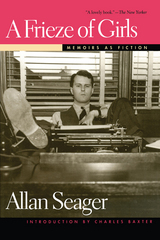 A Frieze of Girls: Memoirs as Fiction
Allan Seager
University of Michigan Press, 2004 A Frieze of Girls speaks with a fresh voice from an American era long past. This is more than Allan Seager's story of what happened; it is also about how "the feel of truth is very like the feel of fiction, especially when either is at all strange." Seager gives us his coming-of-age story, from a high-school summer as a sometime cowboy in the Big Horn mountains to a first job at seventeen managing an antiquated factory in Memphis to a hard-drinking scholarship year in Oxford, cut short by tuberculosis. At once funny with an undercurrent of pain, the stories in A Frieze of Girls remind us of the realities we create to face the world and the past, and in turn of the realities of the world we must inevitably also confront. "Time makes fiction out of our memories," writes Seager. "We all have to have a self we can live with and the operation of memory is artistic---selecting, suppressing, bending, touching up, turning our actions inside out so that we can have not necessarily a likable, merely a plausible identity." A Frieze of Girls is Allan Seager at the top of his form, and a reminder that great writing always transcends mere fashion. Allan Seager was Professor of English at the University of Michigan and author of many highly praised short stories and novels, including Amos Berry. He died in Tecumseh, Michigan, in 1968. Novelist Charles Baxter is the author of Saul and Patsy.
The Frieze of the Palace of the Stuccoes, Acanceh, Yucatan, Mexico
Virginia E. Miller
Harvard University Press, 1991 This is the first publication of complete watercolor renderings recording early documentation of the frieze of the Palace of the Stuccoes, an unusual example of architectural decoration in the northern Maya lowlands.
Frigate HMS Leander
Jantinus Mulder
Amsterdam University Press, 2023 HMS Leander was completed in 1963 as the first ship of the Leander Class Improved Type 12 General Purpose Frigates. In 1974, she joined the 3rd Frigate Squadron, which included other Leander-class frigates. The design was the most successful Western frigate of its time and led to several new international designs.
Frigate HNLMS Jacob van Heemskerck
Rindert van Zinderen-Bakker
Amsterdam University Press, 2023 The ships of the Jacob van Heemskerck class of the Royal Netherlands Navy were constructed as specialized air defense frigates. The two ships that were built served for about twenty years in the R.N.N. Since 2005, both ships are in service as the Almirante Latorre class in the Chilean Navy.
Frigate USS Clark
Rindert van Zinderen-Bakker
Amsterdam University Press, 2023 The ships of the Oliver Hazard Perry-class were designed in the United States in the mid-1970’s as general-purpose escort vessels. They were inexpensive enough to be bought in large quantities and replace older ships. Meant to protect amphibious landing forces, supply and replenishment groups, and merchant convoys from submarines, they also became part of battleship-centric groups and aircraft battle/strike groups.
Frigate USS Clark
Rindert van Zinderen-Bakker
Amsterdam University Press, 2023 The ships of the Oliver Hazard Perry-class were designed in the United States in the mid-1970’s as general-purpose escort vessels. They were inexpensive enough to be bought in large quantities and replace older ships. Meant to protect amphibious landing forces, supply and replenishment groups, and merchant convoys from submarines, they also became part of battleship-centric groups and aircraft battle/strike groups.
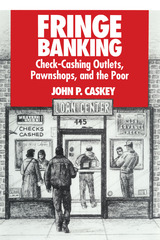 Fringe Banking: Check-Cashing Outlets, Pawnshops, and the Poor
John P. Caskey
Russell Sage Foundation, 1994 "Cogently argued, fills an important gap in the literature, and is accessible to undergraduates." —Choice "Dismantles the mythology surrounding pawnshops and check-cashing outlets, and demonstrates that they are no longer on the fringe of our financial system but integral to it."—San Francisco Bay Guardian In today's world of electronic cash transfers, automated teller machines, and credit cards, the image of the musty, junk-laden pawnshop seems a relic of the past. But it is not. The 1980s witnessed a tremendous boom in pawnbroking. There are now more pawnshops thanever before in U.S. history, and they are found not only in large cities but in towns and suburbs throughout the nation. As John Caskey demonstrates in Fringe Banking, the increased public patronage of both pawnshops and commercial check-cashing outlets signals the growing number of American households now living on a cash-only basis, with no connection to any mainstream credit facilities or banking services. Fringe Banking is the first comprehensive study of pawnshops and check-cashing outlets, profiling their operations, customers, and recent growth from family-owned shops to such successful outlet chains as Cash American and ACE America's Cash Express. It explains why, despite interest rates and fees substantially higher than those of banks, their use has so dramatically increased. According to Caskey, declining family earnings, changing family structures, a growing immigrant population, and lack of household budgeting skills has greatly reduced the demand for bank deposit services among millions of Americans. In addition, banks responded to 1980s regulatory changes by increasing fees on deposit accounts with small balances and closing branches in many poor urban areas. These factors combined to leave many low- and moderate-income families without access to checking privileges, credit services, and bank loans. Pawnshops and check-cashing outlets provide such families with essential financial services thay cannot obtain elsewhere. Caskey notes that fringe banks, particularly check-cashing outlets, are also utilized by families who could participate in the formal banking system, but are willing to pay more for convenience and quick access to cash. Caskey argues that, contrary to their historical reputation as predators milking the poor and desperate, pawnshops and check-cashing outlets play a key financial role for disadvantaged groups. Citing the inconsistent and often unenforced state laws currently governing the industry, Fringe Banking challenges policy makers to design regulations that will allow fringe banks to remain profitable without exploiting the customers who depend on them.
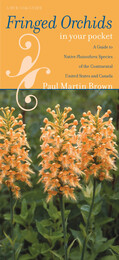 Fringed Orchids in Your Pocket: A Guide to Native Platanthera Species of the Continental United States and Canada
Paul Martin Brown
University of Iowa Press, 2009 Native orchids are increasingly threatened by pressure from population growth and development but, nonetheless, still present a welcome surprise to observant hikers in every state and province. Compiled and illustrated by long-time orchid specialist Paul Martin Brown, this pocket guide to the fringed orchids forms part of a series that will cover all the wild orchids of the continental United States and Canada.
Brown provides a description, general distributional information, time of flowering, and habitat requirements for each species as well as a complete list of hybrids and the many different growth and color forms that can make identifying orchids so challenging. For the fringed-lipped orchids, which make up some of the most intriguing and richly colored of all wild orchids, he includes information on fourteen species and thirteen hybrids.
The genus Platanthera is the largest genus of orchids to be found in North America north of Mexico; the fringe-lipped group is found primarily in the eastern U.S. and Canada, extending west to the prairies and Great Plains. The fringed orchids, so-called because of the delicately fringed petals and lips on many of the species, comprise some of the largest and showiest native orchids found in our region. Most of these species are easy to identify based upon their general appearance, range, and time of flowering. Answering three simple questions—when, where, and how does it grow?—and comparing the living plants with the striking photos in the backpack-friendly laminated guide and the information in the simple key should enable both professional and amateur naturalists to achieve the satisfaction of identifying a specific orchid.
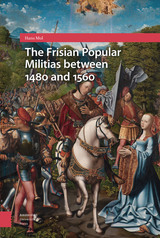 The Frisian Popular Militias between 1480 and 1560
Hans Mol
Amsterdam University Press, 2022 In the late Middle Ages and early modern times, able-bodied men between sixteen and sixty years of age were called upon all over Europe to participate in raids, sieges and battles, for the defense of home and hearth. Because these men are regarded as amateurs, military historiography has paid little attention to their efforts. This book aims to change that by studying the mobilization, organization and weaponry of popular levies for a time when war was frequently waged between states in the making. Central to the book is the composition and development of the rural and urban militias in Friesland, dissected in a comparative Northwest European perspective, along with an examination of why the self-defense of the Frisians ultimately failed in their efforts to preserve their political autonomy. The main source is an extensive series of muster lists from 1552 that have survived for six cities and fourteen rural districts.
Fritz Reiner: A Biography
Philip Hart
Northwestern University Press, 1996 Thirty years after his death, Fritz Reiner's contribution--as a conductor, as a teacher (of Leonard Bernstein, among others), and as a musician--continues to be reassessed. Music scholar and long-time friend Philip Hart has written the definitive biography of this influential figure.
Fritz Reiner, Maestro and Martinet
Kenneth Morgan
University of Illinois Press, 2010 This award-winning book, now available in paperback, is the first solid appraisal of the legendary career of the eminent Hungarian-born conductor Fritz Reiner (1888-1963). Personally enigmatic and often described as difficult to work with, he was nevertheless renowned for the dynamic galvanization of the orchestras he led, a nearly unrivaled technical ability, and high professional standards. Reiner's influence in the United States began in the early 1920s and lasted until his death. Reiner was also deeply committed to serious music in American life, especially through the promotion of new scores. In Fritz Reiner, Maestro and Martinet, Kenneth Morgan paints a very real portrait of a man who was both his own worst enemy and one of the true titans of his profession.
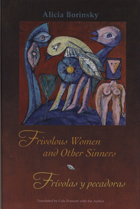 Frivolous Women and Other Sinners / Frívolas y pecadoras
Alicia Borinsky
Swan Isle Press, 2009 Tango and fairy tales mix freely in this seductive, irreverent, and sensual collection of poems. From a city that is at once Buenos Aires and all others, Alicia Borinsky brings to life reluctant mothers, slightly mad teachers, selfless wives, neighborhood witches, best friends, sworn enemies, torturers, vamps, cheats, and lovers—a gallery of characters who wink and boldly gaze back at us. Vignettes become poems and poems become vignettes, reflections that dance, reveal, conceal, enchant, confess, and dream.
Frivolous Women invites us to visit the darker and lighter sides of laughter and love and feel the tenderness of recovered memories as we cross the bridges of relationships and stroll down the mysterious streets of childhood. Alicia Borinsky reminds us that the revelations of poetry are always intimate and dangerous. Cola Franzen’s agile and insightful translation, crafted in close collaboration with the poet, is faithful to the letter and spirit of the original Spanish in this bilingual edition.
 Frog Day: A Story of 24 Hours and 24 Amphibian Lives
Marty Crump
University of Chicago Press, 2024 An illustrated hourly guide that follows twenty-four frogs as they eat, find mates, care for their young, and survive our harsh and changing planet.
In this short book, celebrated biologist Marty Crump leads readers on a worldwide field trip in search of frogs. Each chapter of Frog Day covers a single frog during a single hour, highlighting how twenty-four different species spend their time. Our day begins at midnight in Indonesia, with the rustle of leaves above. It’s not a bird, but Wallace’s flying frog, using its webbed feet and emerald-green skin flaps to glide through the forest canopy. In the early hours of the morning, we hear a horned marsupial frog “bopping” and a wood frog “quacking” to attract mates. At six o’clock in the morning, beneath a streetlight in Honolulu, we meet a corpulent, invasive cane toad slurping insects—and sometimes snakes, lizards, turtles, birds, and mice. At noon, we watch parenting in action as an African bullfrog bulldozes a path through the mud to free his tadpoles from a drying pond. At dusk, in a Peruvian rain forest, we observe “the ultimate odd couple”—a hairy tarantula and what looks like a tiny amphibian pet taking shelter in the spider’s burrow. Other frogs make a tasty meal for this tarantula, but the dotted humming frog is a friend, eating the ants that might otherwise make a meal of the tarantula’s eggs.
For each hour in our Frog Day, award-winning artist Tony Angell has depicted these scenes with his signature pen and ink illustrations. Working closely together to narrate and illustrate these unique moments in time, Crump and Angell have created an engaging read that is a perfect way to spend an hour or two—and a true gift for readers, amateur scientists, and all frog fans.
Frog Mountain Blues
Charles Bowden; Photographs by Jack W. Dykinga
University of Arizona Press, 1994 The Santa Catalina Mountains north of Tucson—whose summit is called “Frog Mountain” by native Tohono O’odham people—offer citizens of a major metropolis a wilderness in their own backyard. Today recreational facilities dot the Catalinas’ peaks, while housing developments creep up their foothills. Charles Bowden and Jack W. Dykinga here convey the natural beauty of the Catalinas and warn readers that this unique wilderness could easily be lost through easy access and overuse.
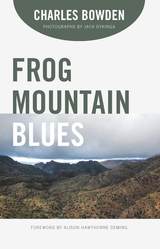 Frog Mountain Blues
Charles Bowden; Photographs by Jack Dykinga; Foreword by Alison Hawthorne Deming
University of Arizona Press, 2018 The Santa Catalina Mountains north of Tucson—whose summit is called Frog Mountain by the Tohono O’odham—offers up to the citizens of the basins below a wilderness in their own backyard.
When it was first published in 1987, Frog Mountain Blues documented the creeping sprawl of new development up the Catalinas’ foothills. Today, that development is fully visible, but Charles Bowden’s prescience of the urgency to preserve and protect a sacred recreational space remains as vivid as ever. Accompanied by Jack W. Dykinga’s photographs from the original work, this book continues to convey the natural beauty of the Catalinas and warns readers that this unique wilderness could easily be lost.
As Alison Hawthorne Deming writes in the new foreword, “Frog Mountain Blues continues to be an important book for learning to read this place through the eyes of experience and history, and Bowden remains a sobering voice for facing our failures in protecting what we love in this time of global destruction, for taking seriously the power of language to set ourselves right again with the enormous task of living with purpose and presence and care on the land.”
Frogs and Toads in Your Pocket: A Guide to Amphibians of the Upper Midwest
Terry VanDeWalle
University of Iowa Press, 2011 Frogs and toads have become canaries in the coal mine when it comes to conservation, as the discovery of malformed frogs has brought increased attention to global habitat loss, declining biodiversity, and environmental pollution. Midwestern species of frogs and toads—already declining due to habitat loss from agriculture—have been greatly affected by this worldwide phenomenon. VanDeWalle includes a complete description of each species along with distinguishing characteristics for three subspecies, information about range and habitat preferences, diet, types of calls, and breeding season.
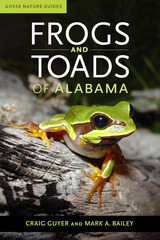 Frogs and Toads of Alabama
Craig Guyer and Mark A. Bailey
University of Alabama Press, 2023 A comprehensive taxonomy of the anuran fauna in Alabama
Frogs and Toads of Alabama is the most comprehensive taxonomy of the anuran fauna gathered since Robert H. Mount’s 1975 volume on the reptiles and amphibians of Alabama. This richly illustrated guide provides an up-to-date summary of the taxonomy and life history of both native frogs and toads and those introduced to the state.
Alabama possesses one of the most species-rich biotas of North America, and this richness is reflected in its frogs and toads. The authors examine all known species within the state and describe important regional variations in each species, including changes within species across the state’s many habitats. Significant field studies, pertaining especially to species conservation, inform each account.
The life history entry for each species consists of scientific and common names, full-color photographs, a morphological description, discussion of habits and life cycle, and a distribution map depicting areas in which the species is located throughout the state, as well as notes on conservation and management practices. The illustrated taxonomic keys provided for families, genera, species, and subspecies will be an invaluable resource to herpetologists.
This extensive guide will serve as a single resource for understanding the rich natural history of Alabama by shedding light on this important aspect of its biodiversity, especially in light of ongoing changes in the habitats of many of Alabama’s herpetofauna. Accessible to all, this volume is valuable for both the professional herpetologist and the general reader interested in frogs and toads.
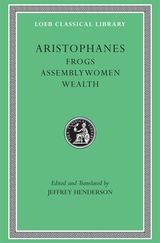 Frogs. Assemblywomen. Wealth
Aristophanes
Harvard University Press, 1998 The master of Old Comedy.
Aristophanes of Athens, one of the world’s greatest comic dramatists, has been admired since antiquity for his iridescent wit and beguiling fantasy, exuberant language, and brilliant satire of the social, intellectual, and political life of Athens at its height. The Loeb Classical Library edition of his plays is in four volumes.
The Introduction to the edition is in Volume I. Also in the first volume is Acharnians, in which a small landowner, tired of the Peloponnesian War, magically arranges a personal peace treaty; and Knights, perhaps the most biting satire of a political figure (Cleon) ever written.
Three plays are in Volume II. Socrates’ “Thinkery” is at the center of Clouds, which spoofs untraditional techniques for educating young men. Wasps satirizes Athenian enthusiasm for jury service. In Peace, a rollicking attack on war-makers, the hero travels to heaven on a dung beetle to discuss the issues with Zeus.
The enterprising protagonists of Birds create a utopian counter-Athens ruled by birds. Also in Volume III is Lysistrata, in which our first comic heroine organizes a conjugal strike of young wives until their husbands end the war between Athens and Sparta. Women again take center stage in Women at the Thesmophoria, this time to punish Euripides for portraying them as wicked.
Frogs, in Volume IV, features a contest between the traditional Aeschylus and the modern Euripides, yielding both sparkling comedy and insight on ancient literary taste. In Assemblywomen Athenian women plot to save Athens from male misgovernance—with raucously comical results. Here too is Wealth, whose gentle humor and straightforward morality made it the most popular of Aristophanes’ plays from classical times to the Renaissance.
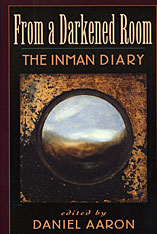 From a Darkened Room: The Inman Diary
Arthur C. Inman
Harvard University Press, 1996 Only a few of us seek immortality, and fewer still by writing. But Arthur Inman challenged the odds. He calculated that if he kept a diary and spared no thoughts or actions, was entirely honest and open, and did not care about damage or harm to himself or others, he would succeed in gaining attention beyond the grave that he could not attain in life.
The diary became a many-layered and strikingly animated work of a gifted writer, by turns charming, repellent, shocking, cruel, and comical. But the diary is also an uninhibited history of his times, of his eccentricities and fantasies, of his bizarre marriage arrangements and sexual adventures. Inman’s explorations of his own troubled nature made him excessively curious about the secret lives of others. Like some ghostly doctor-priest, he chronicled their outpourings of head and heart as vividly as he did his own. The diary reads like a nonfiction novel as it moves inexorably toward disaster.
This is an abridged version of the celebrated two-volume work published by Harvard as The Inman Diary: A Public and Private Confession.
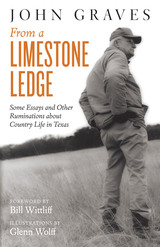 From a Limestone Ledge: Some Essays and Other Ruminations about Country Life in Texas
By John Graves
Foreword by Bill Wittliff
Illustrations by Glenn Wolff
University of Texas Press, 2016 “Another fine, reflective, anecdotal look at rural Texas.” —New Yorker “Graves writes eloquently about a countryman’s concerns. There's not a false note in the book.” —Boston Globe “Like the unmortared stone fences of Graves’s native hill country, From a Limestone Ledge is constructed of bits and pieces never designed to fit together, yet made to achieve a unity that is more enduring than the sum of its individual parts by the hands of a master craftsman.” —Southwestern Historical Quarterly “The beauty of his work endures, and there is a greater pride in Texans’ hearts for their home, I think, than there would be if he hadn’t written the books he did.” —Rick Bass, Garden & Gun “In describing the particulars of his surroundings, Graves often was describing the world in microcosm and the place and plight of humankind in it.” —Bryan Woolley, Dallas Morning News
From a Logical Point of View: Nine Logico-Philosophical Essays, Second Revised Edition
W. V. Quine
Harvard University Press, 1980 These nine essays are largely concerned with the theory of meaning and references—semantics. At the same time adjacent portions of philosophy and logic are discussed. To the existence of what objects may a given scientific theory be said to be committed? And what considerations may suitably guide us in accepting or revising such ontological commitments? These are among the questions dealt with in this book, particular attention being devoted to the role of abstract entities in mathematics. There is speculation on the mechanism whereby objects of one sort or another come to be posited, a process in which the notion of identity plays an important part.
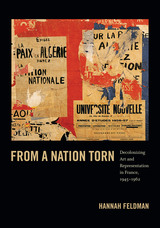 From a Nation Torn: Decolonizing Art and Representation in France, 1945-1962
Hannah Feldman
Duke University Press, 2014 From a Nation Torn provides a powerful critique of art history's understanding of French modernism and the historical circumstances that shaped its production and reception. Within art history, the aesthetic practices and theories that emerged in France from the late 1940s into the 1960s are demarcated as postwar. Yet it was during these very decades that France fought a protracted series of wars to maintain its far-flung colonial empire. Given that French modernism was created during, rather than after, war, Hannah Feldman argues that its interpretation must incorporate the tumultuous "decades of decolonization"and their profound influence on visual and public culture. Focusing on the Algerian War of Independence (1954–1962) and the historical continuities it presented with the experience of the Second World War, Feldman highlights decolonization's formative effects on art and related theories of representation, both political and aesthetic. Ultimately, From a Nation Torn constitutes a profound exploration of how certain populations and events are rendered invisible and their omission naturalized within histories of modernity.
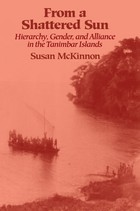 From a Shattered Sun: Hierarchy, Gender, and Alliance in the Tanimbar Islands
Susan Mckinnon
University of Wisconsin Press, 1991 Among a growing number of ethnographies of eastern Indonesia that deal with cosmology, exchange, and kinship, From a Shattered Sun is the first to address squarely issues originally broached by Edmund Leach and Claude Lévi-Strauss concerning the relation between hierarchy and equality in asymmetric systems of marriage.
On the basis of extensive fieldwork in the Tamimbar islands, Susan McKinnon analyzes the simultaneous presence of both closed, asymmetric cycles and open, asymmetric pathways of alliance—of both egalitarian and hierarchical configurations. In addition, Tamimbarese society is marked by the existence of multiple, differentially valued forms of marriage, affiliation, and residence. Rather than seeing these various forms as analytically separable types, McKinnon demonstrates that it is only by viewing them as integrally related—in terms of culturally specific understandings of "houses," gender, and exchange—that one can perceive the processes through which hierarchy and equality are created.
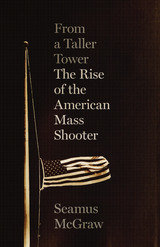 From a Taller Tower: The Rise of the American Mass Shooter
By Seamus McGraw
University of Texas Press, 2021 We, as a nation, have become desensitized to the shock and pain in the wake of mass shootings. In the bottomless silence between gunshots, as political stalemate ensures inaction, the killing continues; the dying continues. From a Taller Tower attends to the silence that has left us empty in the aftermath of these atrocities. Veteran journalist Seamus McGraw chronicles the rise of the mass shooter to dismantle the myths we have constructed around the murderers and ourselves. In 1966, America’s first mass shooter, from atop the University of Texas tower, unleashed a new reality: the fear that any of us may be targeted by a killer, and the complicity we bear in granting these murderers the fame or infamy they crave. Addressing individual cases in the epidemic that began in Austin, From a Taller Tower bluntly confronts our obsession with the shooters—and explores the isolation, narcissism, and sense of victimhood that fan their obsessions. Drawing on the experiences of survivors and first responders as well as the knowledge of mental health experts, McGraw challenges the notion of the “good guy with a gun,” the idolization of guns (including his own), and the reliability of traumatized memory. Yet in this terrible history, McGraw reminds us of the humanity that can stop the killing and the dying.
 From A to A: Keywords of Markup
Bradley Dilger
University of Minnesota Press, 2010 As it becomes impossible to imagine a world without a World Wide Web, information organization, delivery, and production have converged on the simple principle of marking up information for given audiences.
From A to investigates the relationship between media and culture by articulating questions regarding the role of markup. How do the codes of HTML, CSS, PHP, and other markup languages affect the Web's everyday uses? How do these languages shape the Web's communicative functions? This novel inquiry positions markup as the basis of our cultural, rhetorical, and communicative understanding of the Web.
Contributors: Sarah J. Arroyo, CSU Long Beach; Jennifer L. Bay, Purdue U; Helen J. Burgess, U of Maryland, Baltimore County; Michelle Glaros, Centenary College of Louisiana; Matthew K. Gold, NYCC of Technology; Cynthia Haynes, Clemson U; Rudy McDaniel, U of Central Florida; Colleen A. Reilly, UNC, Wilmington; Thomas Rickert, Purdue U; Brendan Riley, Columbia College Chicago; Sae Lynne Schatz, U of Central Florida; Bob Whipple, Creighton U; Brian Willems, U of Split, Croatia.
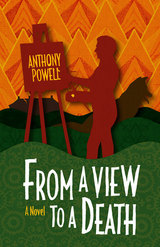 From a View to a Death: A Novel
Anthony Powell
University of Chicago Press, 2014 Unsavory artists, titled boobs, and charlatans with an affinity for Freud—such are the oddballs whose antics animate the early novels of the late British master Anthony Powell. A genius of social satire delivered with a very dry wit, Powell builds his comedies on the foibles of British high society between the wars, delving into subjects as various as psychoanalysis, the film industry, publishing, and (of course) sex. More explorations of relationships and vanity than plot-driven narratives, these slim novels reveal the early stirrings of the unequaled style, ear for dialogue, and eye for irony that would reach their caustic peak in Powell’s epic A Dance to the Music of Time.
From a View to a Death takes us to a dilapidated country estate where an ambitious artist of questionable talent, a family of landed aristocrats wondering where the money has gone, and a secretly cross-dressing squire all commingle among the ruins.
Written from a vantage point both high and necessarily narrow, Powell’s early novels nevertheless deal in the universal themes that would become a substantial part of his oeuvre: pride, greed, and what makes people behave as they do. Filled with eccentric characters and piercing insights, Powell’s work is achingly hilarious, human, and true.
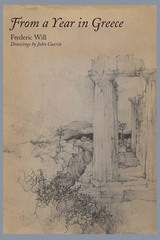 From a Year in Greece
By Frederic Will
University of Texas Press, 1967 In this book, the reader is privileged to take a leisurely and thoroughly enjoyable trip through the Greece of the mid-twentieth century, led by a poet-narrator who is a comfortable and engaging guide and complemented by the artwork of John Guerin. Frederic Will recounts his odyssey: from Austria through Yugoslavia, across the northern Greek border, from Salonika to Athens and the Aegean Sea, to the site of remnants of Old Greece in Smyrna, Pergamum, and Ephesus, and finally to the monasteries on Mount Athos. The author not only presents vivid descriptions of the towns and people in contemporary Greece but also conveys the still-present aura of the ancient Greek deities, in both the ruins and the modern cities. Witness the following passage written at Salonika, in Northern Greece, Will’s first stop of importance: The sense-binding, sense-shaping ocean is omnipresent there. It is visible from nearly any point in the city. You only need to go up to your second story—if you have one. There is that pure, rhythmic, bounded but boundless element, spread somewhere at the bottom of the street. The same vision glimmers or stirs at the end of nearly every east-west-running street. Many townsmen spend much of their time promenading along the harbor. They seem to be subliminally magnetized to the sea. I spent several weeks there. During that time I would often go up to the crowning Venetian walls, and look down onto Salonika and its harbor. From there Salonika’s deep dependence on the ocean became a fact proved by eyesight. The city is built on the half-moon-shaped plain of the Axios River. Two images came to me repeatedly: that Salonika is an amphitheater facing the ocean; or that she is a lover, reaching to embrace the ocean. Here are the hot, white (or cream-colored) buildings of the city; there is the element they thirst for. Will gives a great deal of fascinating information but gives it gracefully and without excess. Above all, the narrative is suffused with the atmosphere, the emotions, and the beauty of Greece. The author has said he intends for this work to dramatize, not to instruct. Actually, it does both.
 From Abortion to Pederasty: Addressing Difficult Topics in the Classics Classroom
Edited by Nancy Sorkin Rabinowitz and Fiona McHardy
Ohio State University Press, 2014 This volume had its origins in a very specific situation: the teaching of ancient texts dealing with rape. Ensuing discussions among a group of scholars expanded outwards from this to other sensitive areas. Ancient sources raise a variety of issues—slavery, infanticide, abortion, rape, pederasty, domestic violence, death, sexuality—that may be difficult to discuss in a classroom where some students will have had experiences similar to those described in classical texts. They may therefore be reluctant to speak in class, and even the reading themselves may be painful.
From Abortion to Pederasty: Addressing Difficult Topics in the Classics Classroom, edited by Nancy Sorkin Rabinowitz and Fiona McHardy, is committed to the proposition that it is important to continue to teach texts that raise these issues, not to avoid them. In this volume, classicists and ancient historians from around the world address how to teach such topics as rape, pederasty, and slavery in the classics classroom. The contributors present the concrete ways in which they themselves have approached such issues in their course planning and in their responses to students’ needs.
A main objective of From Abortion to Pederasty is to combat arguments, from both the left and the right, that the classics are elitist and irrelevant. Indeed, they are so relevant, and so challenging, as to be painful at times. Another objective is to show how Greco-Roman culture and history can provide a way into a discussion that might have been difficult or even traumatic in other settings. Thus it will provide teaching tools for dealing with uncomfortable topics in the classroom, including homophobia and racism.
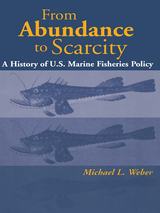 From Abundance to Scarcity: A History Of U.S. Marine Fisheries Policy
Michael L. Weber
Island Press, 2001 The management of coastal and ocean fisheries is highly contentious. Industry interests focus on maximizing catches while conservationists and marine scientists have become increasingly concerned about dramatic declines in fish stocks and the health of ecosystems. Besides attempting to mediate among these interests, government agencies have pursued their own agendas, which have often lagged behind shifts in scientific understanding and public attitudes about the productivity of the oceans and uses of marine wildlife. From Abundance to Scarcity examines the historical evolution of U.S. fisheries policy and institutions from the late 19th century to the present day, with an emphasis on changes since World War II. Based on archival research and interviews with dozens of key players in marine policymaking, it traces the thinking, legislation, mandates, and people that have shaped the various agencies governing fisheries in the United States. The book: - discusses the development of federal programs in marine biological sciences and the evolution of scientific understanding about marine wildlife populations
- describes the work of federal fisheries programs in promoting the interests of the fishing industry
- considers the response of agencies to factors such as dam-building and coastal development that have led to increased pollution and habitat loss
- examines the shifts in understanding and values that underlie major legislation including the Marine Mammal Protection Act, the Endangered Species Act, the Magnuson-Stevens Act, and the Sustainable Fisheries Act
- examines the evolving relationship between federal agencies, the fishing industry, communities, and nongovernmental conservation organizations, with an eye toward future management practice
From Abundance to Scarcity sheds light on the sets of interests that have shaped U.S. fisheries policy, lending historical depth to current debates and providing a fuller understanding of current laws and regulations, and administrative structures and mechanisms. It offers an insightful overview for professionals involved with fisheries management or the fishing industry, conservationists working on marine issues, and students and scholars of marine policy and affairs, environmental policy and law, or public policy and administration.
From Alabama to Margraten: The Story of War Veteran Jefferson Wiggins in the Segregated US Army during World War II
Mieke Kirkels
Amsterdam University Press, 2025 When he returned to the Netherlands in 2009, decades after World War II, Jefferson Wiggins realized that no one he met knew about the segregated US Army during the war, nor did they know about the contribution of Black American soldiers to the liberation of the Netherlands. They were not mentioned anywhere in Dutch history books or in archives. Together with oral historian Mieke Kirkels, Wiggins sat down to record his memories. Wiggins passed away in 2013, and his widow, Janice Wiggins-Paterson, continued the project in his memory. With newly discovered archival material, and richly illustrated, this book gives a lively account of an undocumented story of WWII, Black American, and Dutch military history.
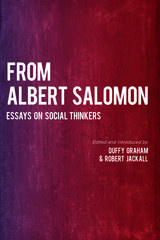 From Albert Salomon: Essays on Social Thinkers
Robert Jackall
University of Tennessee Press, 2019 Albert Salomon (1891-1966) was an eminent German-Jewish sociologist. He studiedart history, religious history, and philosophy at Humboldt University in Berlin;philosophy at the University of Freiburg; and sociology at the University of Heidelberg. At Heidelberg, he studied under Max Weber, Georg Lukács, and Karl Mannheim. His fellow students included, among other great social thinkers, Hannah Arendt and Hans Speier. After obtaining his doctorate in sociology under Mannheim, he taught at the Deutsche Hochschule für Politik, but lost his job there when the Nazis came to power in January 1933. He received an offer from Alvin Johnson to teach at the University in Exile at the New School for Social Research and, with his family, migrated to New York City in early 1935.Over the years, Salomon taught many courses in the Graduate Faculty of Political and Social Science at the New School, including seminars on Weber, Durkheim, the history of social thought, and Balzac as a sociologist. His students revered him for his breadth and depth of learning and his exacting standards. Later scholars, including the editors of From Albert Salomon: Essays on Social Thinkers, regard him as one of the most important interpreters of Western thought and as an exemplar of the great Jewish intellectual tradition.
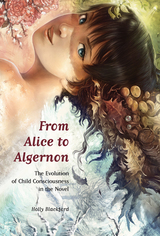 From Alice to Algernon: The Evolution of Child Consciousness in the Novel
Holly Blackford
University of Tennessee Press, 2018 During the late Victorian period, Charles Darwin’s theories took the world by storm, and the impact of evolution on research into the developing human mind was impossible to overlook. Thereafter the study of children and childhood became a means to theorize, imagine, and apply the concept of evolution in a broad range of cultural productions. Beginning with the watershed Victorian era, From Alice to Algernon: The Evolution of Child Consciousness in the Novel examines the creative transformation these theories underwent as they filtered through the modern novel, especially those that examined the mind of the child.
By examining the connection between authors and trends in child psychology, author Holly Blackford explains why many modern novels began to focus on child cognition as a site for intellectual and artistic exploration. In each chapter of this book, select novels of the late-nineteenth or twentieth century are paired with a specific moment or movement from the history of developmental psychology. Novels such as Mark Twain’s Huckleberry Finn and Henry James’s What Maisie Knew, or Radclyffe Hall’s less-canonical The Well of Loneliness and even Mark Haddon’s The Curious Incident of the Dog in the Night-Time, showcase major questions about human epistemology through their child characters. From Lewis Carroll’s Alice and her looking-glass to Richard Wright’s Bigger Thomas and the murder of Mary Dalton to the chaotic Neverland—symbolizing the unmappable child’s brain—a literary tradition of child consciousness has emerged as an experimental site for the unstable concepts of evolution, civilization, and development.
By situating literature about children within concurrent psychological discourses, Blackford demonstrates how the modern novel contributed to the world’s understanding of the boundless wonders and discernible limits of child consciousness.
 From Allies to Enemies: Visions of Modernity, Identity, and U.S.–China Diplomacy, 1945–1960
Simei Qing
Harvard University Press, 2007 In a stunningly original work about the impact of cultural perceptions in international relations, Simei Qing offers a new perspective on relations between the United States and China after World War II.
From debates over Taiwan in the Truman administration to military confrontation in Korea to relations with the Soviet Union, Qing explores how policies on both sides became persistently counterproductive. Implicit moral and cultural values became woven into policy rationales for both China and the United States. Cultural visions of modernity and understandings of identity played a critical role in each nation's evaluation of the other's intentions and in defining interests and principles in their diplomatic relationship.
Based on American, Russian, and newly declassified Chinese sources, this book reveals rarely examined assumptions that were entrenched in mainstream policy debates on both sides, and sheds light on the origins and development of U.S.-China confrontations that continue to resonate today. Simei Qing also provides a compelling look at the vital role of deeply anchored visions in the origins of human military conflicts.
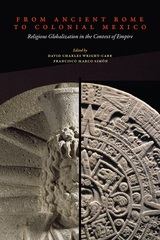 From Ancient Rome to Colonial Mexico: Religious Globalization in the Context of Empire
David Charles Wright-Carr
University Press of Colorado, 2023 From Ancient Rome to Colonial Mexico compares the Christianization of the Roman Empire with the evangelization of Mesoamerica, offering novel perspectives on the historical processes involved in the spread of Christianity. Combining concepts of empire and globalization with the notion of religion from a postcolonial perspective, the book proposes the method of analytical comparison as a point of departure to conceptualize historical affinities and differences between the ancient Roman Empire and colonial Mesoamerica.
An international team of specialists in classical scholarship and Mesoamerican studies engage in an interdisciplinary discussion involving ideas from history, anthropology, archaeology, art history, iconography, and philology. Key themes include the role of religion in processes of imperial domination; religion’s use as an instrument of resistance or the imposition, appropriation, incorporation, and adaptation of various elements of religious systems by hegemonic groups and subaltern peoples; the creative misunderstandings that can arise on the “middle ground”; and Christianity’s rejection of ritual violence and its use of this rejection as a pretext for inflicting other kinds of violence against peoples classified as “barbarian,” “pagan,” or “diabolical.”
From Ancient Rome to Colonial Mexico presents a sympathetic vantage point for discussing and attempting to decipher past processes of social communication in multicultural contexts of present-day realities. It will be significant for scholars and specialists in the history of religions, ethnohistory, classical antiquity, and Mesoamerican studies.
Publication supported, in part, by Spain’s Ministry of Economy and Competitiveness.
Contributors: Sergio Botta,Maria Celia Fontana Calvo, Martin Devecka, György Németh, Guilhem Olivier, Francisco Marco Simón, Paolo Taviani, Greg Woolf, David Charles Wright-Carr, Lorenzo Pérez Yarza
Translators: Emma Chesterman, Benjamin Adam Jerue, Layla Wright-Contreras
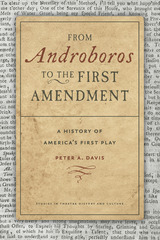 From Androboros to the First Amendment: A History of America's First Play
Peter A. Davis
University of Iowa Press, 2015 The story of America’s earliest extant play begins with a petty crime—a crime that would have passed largely unnoticed had it not been for one fact: it prompted a beleaguered royal governor of one of Britain’s colonies to lash out at his enemies by writing a biting satire. Androboros, A Bographical [sic] Farce in Three Acts (1715), is universally acknowledged as the first play both written and printed in America. Its significance stems not simply from its publication but from its eventual impact. The play inadvertently laid the foundation for one of the defining rights of the nation that would eventually emerge some seventy-five years later—the First Amendment of the Constitution of the United States, guaranteeing a free press and freedom of expression.
Androboros was not just the first of its kind, it was also ahead of its time in many ways, preceding the harsh political satires and farces of the later eighteenth century by some fifty years. Such plays served a small but essential role in promoting political thought among the colonists. Written by anonymous authors and passed from hand to hand, these short, crude, and often bawdy plays and dialogues were rarely acted due to their inflammatory lampoonery. Nevertheless, they provided an opportunity for disgruntled colonists to vent their grievances and promote their ideas to fellow citizens. The farces of the late eighteenth century drove home the meaning and message of the American Revolution.
Equally significant is that Androboros may have influenced a few of the key political discourses published in the 1730s, and these works in turn may well have shaped the future of the American political landscape for the next several decades and even into the modern era. But as a closet drama intended only to be read by close friends and political supporters, this play has languished as a minor footnote in American intellectual history. Scholarly research published to date has been, for the most part, inadequate and occasionally inaccurate. This study remedies that oversight, providing a full analysis as well as an annotated typescript and facsimiles of the original printing.
 From Anzio to the Alps: An American Soldier's Story
Lloyd M. Wells
University of Missouri Press, 2019 This compelling work is Lloyd M. Wells’s firsthand account of World War II based on a journal he kept during the war, letters he sent home, and personal records, as well as recollections of people and events. In June 1941, the twenty-one-year-old Wells was drafted into the army. He was commissioned second lieutenant after he attended O.C.S. and was later promoted to first lieutenant with the First Armored Division. He saw action in North Africa, Italy, and Germany and was awarded the Combat Infantry Badge, the Purple Heart, and the Bronze Star. Wells offers the reader information that has never before been provided. He tells exactly what happened to 2/7 Queens on the night of February 21, 1944, when the troops came up to “the caves” at Anzio. He also depicts what happened during the last offensive in Italy and what armored infantry troops experienced on the perimeter of the attack. This book, however, is not just a story of battle actions. It is a personal story about the “old Army” and how young soldiers were transformed by it during one of the greatest upheavals in world history. Wells’s goal in writing this book was to leave behind “an account of a simpler time and of the funny, sad, terrorizing, and tender moments of a war which, with the death of each man or woman who lived through it, recedes just a little bit further into the nation’s past.” He accomplished that and so much more.
 From Appomattox to Montmartre: Americans and the Paris Commune
Philip M. Katz
Harvard University Press, 1998 The American Civil War and the Paris Commune of 1871, Philip Katz argues, were part of the broader sweep of transatlantic development in the mid-nineteenth century--an age of democratic civil wars. Katz shows how American political culture in the period that followed the Paris Commune was shaped by that event.
The telegraph, the new Atlantic cable, and the news-gathering experience gained in the Civil War transformed the Paris Commune into an American national event. News from Europe arrived in fragments, however, and was rarely cohesive and often contradictory. Americans were forced to assimilate the foreign events into familiar domestic patterns, most notably the Civil War. Two ways of Americanizing the Commune emerged: descriptive (recasting events in American terms in order to better understand them) and predictive (preoccupation with whether Parisian unrest might reproduce itself in the United States).
By 1877, the Commune became a symbol for the domestic labor unrest that culminated in the Great Railroad Strike of that year. As more powerful local models of social unrest emerged, however, the Commune slowly disappeared as an active force in American culture.
From Arcadia to Revolution: The Neapolitan Monitor and Other Writings
Eleonora Fonseca Pimentel
Iter Press, 2019 Eleonora Fonseca Pimentel was a poet, a political writer, a journalist, and a politician. She was the editor, and virtually the only writer of the Monitore Napoletano (Neapolitan Monitor), the journal in which she recorded the events and debates that took place in the short-lived Neapolitan Jacobin Republic of 1799. She sought to influence both government policy and public opinion. As a political analyst she also put forward with this journal one of the first analyses ever of popular culture and its political implications, and confronted the challenge of trying to implement a revolutionary political project in a situation of abject poverty intertwined with a deeply conservative populist mind-set.
The Other Voice in Early Modern Europe: The Toronto Series, Volume 67
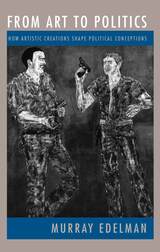 From Art to Politics: How Artistic Creations Shape Political Conceptions
Murray Edelman
University of Chicago Press, 1995 Murray Edelman holds a unique and distinguished position in American political science. For decades one of the few serious scholars to question dominant rational-choice interpretations of politics, Edelman looked instead to the powerful influence of signs, spectacles, and symbols—of culture—on political behavior and political institutions. His first, now classic, book, The Symbolic Uses of Politics, created paths of inquiry in political science, communication studies, and sociology that are still being explored today.
In this book, Edelman continues his quest to understand the influence of perception on the political process by turning to the role of art. He argues that political ideas, language, and actions cannot help but be based upon the images and narratives we take from literature, paintings, film, television, and other genres. Edelman believes art provides us with models, scenarios, narratives, and images we draw upon in order to make sense of political events, and he explores the different ways art can shape political perceptions and actions to both promote and inhibit diversity and democracy.
"Elegantly written. . . . He brilliantly contends that art helps create the images from which opinion-molders and citizens construct the social realities of politics."—Choice
"It is perhaps the freshness with which he puts his case that is what makes From Art to Politics, as well as his other works, so challenging and invigorating."—Philip Abbott, Review of Politics
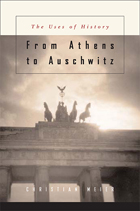 From Athens to Auschwitz: The Uses of History
Christian Meier
Harvard University Press, 2005 What does history mean today? What is its relevance to the modern world? In contemplating fundamental questions about history and the Western legacy, the noted classical historian Christian Meier offers a new interpretation on how we view the world.
Meier sees an “absence” of history in contemporary Europe and throughout the West—an absence he attributes to the way modern historians have written about history and, more important, to the dramatic transformations of the twentieth century. He argues for the central legacy of Western civilization. He tackles the difficulty of reconciling a historical perspective with our era of extreme acceleration, when experience is shaped less by inheritance and legacy than by the novelty of changes wrought by science and globalization. Finally, Meier contemplates the enormity of the Holocaust, which he sees as a test of “understanding” history. If it is part of the whole arc of the Western legacy, how do we fit it with the rest?
This engaging and thought-provoking meditation challenges us to rethink the role of history in Western culture and a changing world.
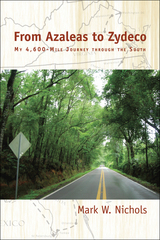 From Azaleas to Zydeco: My 4,600-Mile Journey through the South
Mark W. Nichols
Butler Center for Arkansas Studies, 2013 Inspired by a 1937 map and travelogue of a newspaperman’s tour, author Mark W. Nichols embarked on his own long journey into the unique cities of the South. En route he met beekeepers, cheese makers, crawfish “bawlers,” duck callers, and a licensed alligator hunter, as well as entrepreneurs and governors. His keen observations encompass the southern states from Virginia to Arkansas and points south, and he unpacks the unique qualities of every city he visits. “It’s easy to say that getting to meet so many interesting and wonderful people was the best part of the journey--because it’s true,” Nichols writes. “I know there are friendly people everywhere, but southern friendliness is different.” His story embraces a wealth of southern charm from local characters, folklore, and customs to food, music, and dancing. Besides being just plain fun to read, Nichols’s account of his journey gives readers a true taste of the flavor of the evolving modern South.
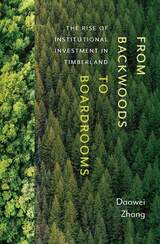 From Backwoods to Boardrooms: The Rise of Institutional Investment in Timberland
Daowei Zhang
Oregon State University Press, 2021 Since the early 1900s, forestland ownership has gone through two major structural changes in the United States and other parts of the world: the accumulation of industrial timberlands between the 1900s and 1980s and, since then, the shift from industrial to institutional ownership. From Backwoods to Boardrooms explores the history and economics of these two structural changes with emphasis on the latter. These ownership transformations have impacted tens of millions of acres of private landholdings and billions of investment dollars. Industrial structure, forest management and policy, research and development, community welfare, and forest sustainability have all been directly affected.
Through a historical examination of key events and players, prevailing management philosophies, public policy, and institutional factors, Daowei Zhang searches for an economic explanation and assesses the impact of these ownership revolutions with a three-pronged approach. First, he explains why industrial firms were able to profit from owning forestlands, and how the shift to institutional ownership came about. Second, he compares private timberland investments and public equity investments with respect to risk-adjusted returns and other dimensions of interest to investors and forest managers, including alignment of interests, capacity to exploit market inefficiencies, and their forest management and conservation records. Finally, he provides thoughtful commentary on the future of institutional timberland investments and global forest sustainability.
From Backwoods to Boardrooms is essential reading for forest managers, investors, and anyone interested in understanding the workings of the modern forest sector and the future of forest sustainability.
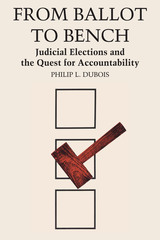 From Ballot to Bench: Judicial Elections and the Quest for Accountability
By Philip L. Dubois
University of Texas Press, 1980 Over several decades, many U.S. states abandoned the practice of selecting their judges by direct popular election and adopted the Missouri Plan of judicial selection. In From Ballot to Bench, Philip L. Dubois subjects the various criticisms raised against judicial elections to a more searching scrutiny than previously has been attempted. Dubois carefully reviews the three central counts on which judicial elections have been faulted: for lowering the quality of the bench, for impairing judicial independence, and for failing to secure judicial accountability. After concluding that the potential for judicial elections to hold judges popularly accountable is what might commend them over alternative selection methods, Dubois concentrates on the analysis of empirical evidence to evaluate judicial elections as mechanisms of accountability. The study examines all the statewide partisan and nonpartisan elections for state supreme court justices in non-southern states from 1948 to 1974. Included is a detailed examination of voter participation, electoral competition, the behavior of judicial electorates, and the patterns of gubernatorial vacancy appointments. An analysis of decision making on eight state supreme courts also tests the relationship between different selection systems and judicial behavior. Dubois finds that partisan elections maximize voter participation, meaningfully structure voter choices, minimize accession to the bench by appointment, and allow popular control over gubernatorial appointments. Additional evidence on the extent of partisan voting by judges selected under different methods leads Dubois to conclude that partisan elections are superior to both nonpartisan elections and nonelective selection methods as instruments of accountability. The importance of the questions addressed, the breadth of the data collected, and the unorthodox conclusions offered make this a significant book for political scientists, judges, lawyers, and public officials.
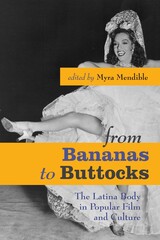 From Bananas to Buttocks: The Latina Body in Popular Film and Culture
Edited by Myra Mendible
University of Texas Press, 2007 From the exuberant excesses of Carmen Miranda in the "tutti frutti hat" to the curvaceous posterior of Jennifer Lopez, the Latina body has long been a signifier of Latina/o identity in U.S. popular culture. But how does this stereotype of the exotic, erotic Latina "bombshell" relate, if at all, to real Latina women who represent a wide spectrum of ethnicities, national origins, cultures, and physical appearances? How are ideas about "Latinidad" imagined, challenged, and inscribed on Latina bodies? What racial, class, and other markers of identity do representations of the Latina body signal or reject? In this broadly interdisciplinary book, experts from the fields of Latina/o studies, media studies, communication, comparative literature, women's studies, and sociology come together to offer the first wide-ranging look at the construction and representation of Latina identity in U.S. popular culture. The authors consider such popular figures as actresses Lupe Vélez, Salma Hayek, and Jennifer Lopez; singers Shakira and Celia Cruz; and even the Hispanic Barbie doll in her many guises. They investigate the media discourses surrounding controversial Latinas such as Lorena Bobbitt and Marisleysis González. And they discuss Latina representations in Lupe Solano's series of mystery books and in the popular TV shows El Show de Cristina and Laura en América. This extensive treatment of Latina representation in popular culture not only sheds new light on how meaning is produced through images of the Latina body, but also on how these representations of Latinas are received, revised, and challenged.
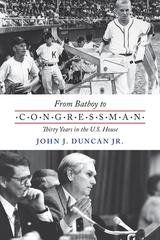 From Batboy to Congressman: Thirty Years in the US House
John Duncan, Jr.
University of Tennessee Press, 2021 On October 10, 2002, Congressman John J. Duncan Jr. cast a vote in the U.S. House that he thought might end his political career. Going against his own party, he was one of only six House Republicans who voted against the Iraq War resolution. Constituents in his district were shocked, but over time Duncan felt his least popular vote became his most popular one—and probably the most significant in his thirty-year political career.
Congressman Duncan served as U.S. Representative for Tennessee’s Second Congressional district from 1988 to 2019. While he could have written a dense political memoir, in From Batboy to Congressman, Duncan employs a journalistic flair to provide just the right insight into a series of anecdotes from his storied life. Duncan’s family, early life, and time as a lawyer and judge all figure into the generous narrative, shared with both warmth and a self-deprecating sense of humor. He details unique experiences meeting celebrities, presidents, and sports stars; and, of course, he shares insights into the decisions that charted his Congressional career on issues such as Iraq, NAFTA, and concern for fiscal responsibility. Over his decades-long career, Duncan was known for his commitment to constituent service—even among constituents who disagreed with his views—so he offers a refreshing perspective on bipartisanship and connections across the aisle; indeed, he names conservatives, moderates, and liberals alike among his closest friends.
While this book contains timely reflections on issues of war and poverty, of leadership and the lack of it, of the proper relationship between citizens and government, its intention is to highlight moments in a singular career. “As you will read in this book,” writes Congressman Duncan, “every job gave me strange, funny, unusual stories.”
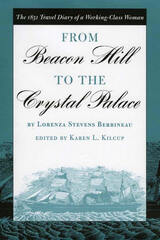 From Beacon Hill to the Crystal Palace: The 1851 Travel Diary of a Working-Class Woman
Lorenza Stevens Berbineau
University of Iowa Press, 2002 Because prior studies of American women’s travel writing have focused exclusively on middle-class and wealthy travelers, it has been difficult to assess the genre and its participants in a holistic fashion. One of the very few surviving working-class travel diaries, Lorenza Stevens Berbineau’s account provides readers with a unique perspective of a domestic servant in the wealthy Lowell family in Boston. Staying in luxurious hotels and caring for her young charge Eddie during her six-month grand tour, Berbineau wrote detailed and insightful entries about the people and places she saw. Contributing to the traditions of women’s, diary, and travel literature from the perspective of a domestic servant, Berbineau's narrative reveals an arresting and intimate outlook on both her own life and the activities, places, and people she encounters. For example, she carefully records Europeans’ religious practices, working people and their behavior, and each region’s aesthetic qualities. Clearly writing in haste and with a pleasing freedom from the constraints of orthographic and stylistic convention, Berbineau offers a distinctive voice and a discerning perspective. Alert to nuances of social class, her narrative is as appealing and informative to today's readers as it no doubt was to her fellow domestics in the Lowell household. Unobtrusively edited to retain as much as possible the individuality and texture of the author’s original manuscript, From Beacon Hill to the Crystal Palace offers readers brief framing summaries, informative endnotes, and a valuable introduction that analyzes Berbineau’s narrative in relation to gender and class issues and compares it to the published travel writing of her famous contemporary, Harriet Beecher Stowe.
From Behind the Veil: A STUDY OF AFRO-AMERICAN NARRATIVE
Robert B. Stepto
University of Illinois Press, 1991 This pioneering study of Afro-American narrative is far more critical, historical, and textual than biographical, chronological, and atextual. Robert Stepto asserts that Afro-American culture has its store of canonical stories or pregeneric myths, the primary one being the quest for freedom and literacy. This second edition includes a new preface and an afterward entitled "Distrust of the Reader in Afro-American Narratives."
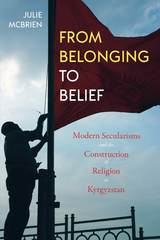 From Belonging to Belief: Modern Secularisms and the Construction of Religion in Kyrgyzstan
Julie McBrien
University of Pittsburgh Press, 2017 From Belonging to Belief presents a nuanced ethnographic study of Islam and secularism in post-Soviet Central Asia, as seen from the small town of Bazaar-Korgon in southern Kyrgyzstan. Opening with the juxtaposition of a statue of Lenin and a mosque in the town square, Julie McBrien proceeds to peel away the multiple layers that have shaped the return of public Islam in the region. She explores belief and nonbelief, varying practices of Islam, discourses of extremism, and the role of the state, to elucidate the everyday experiences of Bazaar-Korgonians. McBrien shows how Islam is explored, lived, and debated in both conventional and novel sites: a Soviet-era cleric who continues to hold great influence; popular television programs; religious instruction at wedding parties; clothing; celebrations; and others. Through ethnographic research, McBrien reveals how moving toward Islam is not a simple step but rather a deliberate and personal journey of experimentation, testing, and knowledge acquisition. Moreover she argues that religion is not always a matter of belief—sometimes it is essentially about belonging.
From Belonging to Belief offers an important corrective to studies that focus only on the pious turns among Muslims in Central Asia, and instead shows the complex process of evolving religion in a region that has experienced both Soviet atheism and post-Soviet secularism, each of which has profoundly formed the way Muslims interpret and live Islam.
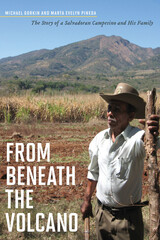 From Beneath the Volcano: The Story of a Salvadoran Campesino and His Family
Michael Gorkin and Marta Evelyn Pineda
University of Arizona Press, 2011 In 1980 El Salvador was plunged into a bloody civil war, and Luis Campos, a peasant farmer, found himself drawn into a deadly political maelstrom of guerrilla fighting for twelve years. In this collection of fascinating and revealing oral histories, Gorkin and Pineda portray the personal and social lives of Luis and his family, who for the past eighteen years have been working to rebuild their lives in their new community beneath the Guazapa volcano.
Luis, his mother, his wife, his in-laws, his children, and some neighbors recall in a simple and often eloquent manner their experiences of everyday life before, during, and after the civil war. Nina Bonafacia, Luis’s mother, tells of the days before the war when two of her daughters were murdered and she fled with her family to a refugee camp. Julia, Luis’s wife, recounts her life as a guerrillera during which, incidentally, she gave birth to the first two of her eight children. Joaquin, a neighbor and comrade-in-arms, discusses how he and others took control of the land of Comunidad Guazapa and began rebuilding in those turbulent days and months right after the war. Margarita and Francisco, the two oldest children, with candor and insight discuss the trajectory of their lives and that of the postwar generation. And at the center of all these stories stands Luis, the guerrillero, farmer, neighbor, husband, father—and raconteur par excellence.
In sum, the multiple voices in From Beneath the Volcano combine to form a rich tapestry displaying a story of war, family, and community and provide a never-before-seen view of both the past and present El Salvador.
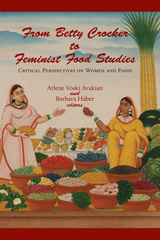 From Betty Crocker to Feminist Food Studies: Critical Perspectives on Women and Food
Arlene Voski Avakian
University of Massachusetts Press, 2005 In recent years, scholars from a variety of disciplines have turned their attention to food to gain a better understanding of history, culture, economics, and society. The emerging field of food studies has yielded a great deal of useful research and a host of publications. Missing, however, has been a focused effort to use gender as an analytic tool. This stimulating collection of original essays addresses that oversight, investigating the important connections between food studies and women's studies.
Applying the insights of feminist scholarship to the study of food, the thirteen essays in this volume are arranged under four headings—the marketplace, histories, representations, and resistances. The editors open the book with a substantial introduction that traces the history of scholarly writing on food and maps the terrain of feminist food studies. In the essays that follow, contributors pay particular attention to the ways in which gender, race, ethnicity, class, colonialism, and capitalism have both shaped and been shaped by the production and consumption of food.
In the first section, four essays analyze the influence of large corporations in determining what came to be accepted as proper meals in the United States, including what mothers were expected to feed their babies. The essays in the second section explore how women have held families together by keeping them nourished, from the routines of an early nineteenth-century New Englander to the plight of women who endured the siege of Leningrad.
The essays in the third section focus on the centrality of gender and race in the formation of identities as enacted through food discourse and practices. These case studies range from the Caribbean to the San Luis Valley of Colorado. The final section documents acts of female resistance within the contexts of national or ethnic oppression. From women in colonial India to Armenian American feminists, these essays show how food has served as a means to assert independence and personal identity.
In addition to the editors, contributors include Amy Bentley, Carole M. Counihan, Darra Goldstein, Nancy Jenkins, Alice P. Julier, Leslie Land, Laura Lindenfield, Beheroze F. Shroff, Sharmila Sen, Laura Shapiro, and Jan Whitaker.
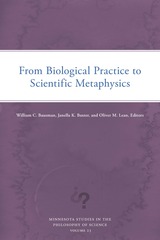 From Biological Practice to Scientific Metaphysics
William C. Bausman
University of Minnesota Press, 2024 How analyzing scientific practices can alter debates on the relationship between science and reality Numerous scholarly works focus solely on scientific metaphysics or biological practice, but few attempt to bridge the two subjects. This volume, the latest in the Minnesota Studies in the Philosophy of Science series, explores what a scientific metaphysics grounded in biological practices could look like and how it might impact the way we investigate the world around us. From Biological Practice to Scientific Metaphysics examines how to reconcile the methods of biological practice with the methods of metaphysical cosmology, notably regarding the origins of life. The contributors take up a wide range of traditional metaphysics and philosophy of science topics, including natural kinds, medicine, ecology, genetics, scientific pluralism, reductionism, operationalism, mechanisms, the nature of information, and more. Many of the chapters represent the first philosophical treatments of significant biological practices. From causality and complexity to niche constructions and inference, the contributors review and discuss long-held objections to metaphysics by natural scientists. They illuminate how, in order to learn about the world as it truly is, we must look not only at what scientists say but also what they do: for ontology cannot be read directly from scientific claims. Contributors: Richard Creath, Arizona State U; Marc Ereshefsky, U of Calgary; Marie I. Kaiser, Bielefeld U; Thomas A. C. Reydon, Leibniz U Hannover and Michigan State U; Lauren N. Ross, U of California, Irvine; Rose Trappes, U of Exeter; Marcel Weber, U of Geneva; William C. Wimsatt, U of Chicago. Retail e-book files for this title are screen-reader friendly with images accompanied by short alt text and/or extended descriptions.
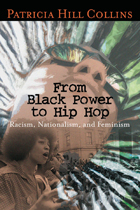 From Black Power to Hip Hop: Racism, Nationalism, and Feminism
Patricia Hill Collins
Temple University Press, 2006 Despite legislation designed to eliminate unfair racial practices, the United States continues to struggle with a race problem. Some thinkers label this a "new" racism and call for new political responses to it. Using the experiences of African American women and men as a touchstone for analysis, Patricia Hill Collins examines new forms of racism as well as political responses to it.In this incisive and stimulating book, renowned social theorist Patricia Hill Collins investigates how nationalism has operated and re-emerged in the wake of contemporary globalization and offers an interpretation of how black nationalism works today in the wake of changing black youth identity. Hers is the first study to analyze the interplay of racism, nationalism, and feminism in the context of twenty-first century black America.From Black Power to Hip Hop covers a wide range of topics including the significance of race and ethnicity to the American national identity; how ideas about motherhood affect population policies; African American use of black nationalism ideologies as anti-racist practice; and the relationship between black nationalism, feminism and women in the hip-hop generation.
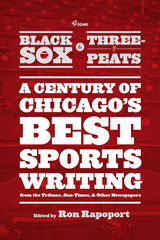 From Black Sox to Three-Peats: A Century of Chicago's Best Sportswriting from the "Tribune," "Sun-Times," and Other Newspapers
Edited by Ron Rapoport
University of Chicago Press, 2013
Bears, Bulls, Cubs, Sox, Blackhawks—there’s no city like Chicago when it comes to sports. Generation after generation, Chicagoans pass down their almost religious allegiances to teams, stadiums, and players and their never-say-die attitude, along with the stories of the city’s best (and worst) sports moments. And every one of those moments—every come-from-behind victory or crushing defeat—has been chronicled by Chicago’s unparalleled sportswriters.
In From Black Sox to Three-Peats, veteran Chicago sports columnist Ron Rapoportassembles one hundred of the best columns and articles from the Tribune, Sun-Times, Daily News, Defender, and other papers to tell the unforgettable story of a century of Chicago sports. From Ring Lardner to Rick Telander, Westbrook Pegler to Bob Verdi, Mike Royko to Hugh Fullerton , Melissa Isaacson to Brent Musburger, and on and on, this collection reminds us that Chicago sports fans have enjoyed a wealth of talent not just on the field, but in the press box as well. Through their stories we relive the betrayal of the Black Sox, the cocksure power of the ’85 Bears, the assassin’s efficiency of Jordan’s Bulls, the Blackhawks’ stunning reclamation of the Stanley Cup, the Cubs’ century of futility—all as seen in the moment, described and interpreted on the spot by some of the most talented columnists ever to grace a sports page.
Sports are the most ephemeral of news events: once you know the outcome, the drama is gone. But every once in a while, there are those games, those teams, those players that make it into something more—and great writers can transform those fleeting moments into lasting stories that become part of the very identity of a city. From Black Sox to Three-Peats is Chicago history at its most exciting and celebratory. No sports fan should be without it.
From Black to Schwarz: Cultural Crossovers Between African America and Germany
Maria I. Diedrich
Michigan State University Press, 2011 From Black to Schwarz explores the long and varied history of the exchanges between African America and Germany, with a particular focus on cultural interplay. Covering a wide range of media of expression—music, performance, film, scholarship, literature, visual arts, reviews—these essays trace and analyze a cultural interaction, collaboration, and mutual transformation that began in the eighteenth century, boomed during the Harlem Renaissance/Weimar Republic, survived the Third Reich’s “Degenerate Art” campaigns, and (with new media available to further exchanges), is still increasingly empowering and inspiring participants on both sides of the Atlantic.
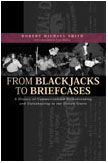 From Blackjacks to Briefcases: A History of Commercialized Strikebreaking and Unionbusting in the United States
Robert Michael Smith
Ohio University Press, 2003 From the beginning of the Industrial Age and continuing into the twenty-first century, companies faced with militant workers and organizers have often turned to agencies that specialized in ending strikes and breaking unions. Although their secretive nature has made it difficult to fully explore the history of this industry, From Blackjacks to Briefcases does just that. By digging through subpoenaed documents of strike-bound companies, their mercenaries, and the testimony of executive officers and rank-and-file strikebreakers, Robert Smith examines the inner workings of the antiunion industry. In a clear and lively style, he brings to life the violent armed guards employed on the picket line or in the coal camps; the ruffians who filled the armies marshaled by the “King of the Strikebreakers,” Pearl Bergoff; the labor spies who wrecked countless unions; and, after the Wagner Act, those who manipulated national labor law to serve their clients. In From Blackjacks to Briefcases, Smith follows the history of this ongoing struggle and tells a compelling story that parallels the history of the United States over the last century and a half.
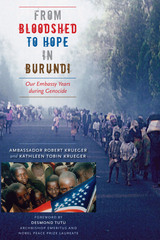 From Bloodshed to Hope in Burundi: Our Embassy Years during Genocide
By Ambassador Robert Krueger and Kathleen Tobin Krueger
University of Texas Press, 2007 In 1994, while nations everywhere stood idly by, 800,000 people were slaughtered in eight weeks in Rwanda. Arriving as U.S. Ambassador to neighboring Burundi a few weeks later, Bob Krueger began drawing international attention to the genocide also proceeding in Burundi, where he sought to minimize the killing and to preserve its fledgling democratic government from destruction by its own army. From Bloodshed to Hope in Burundi is a compelling eyewitness account of both a horrific and persistent genocide and of the ongoing efforts of many courageous individuals to build a more just society. Krueger and his wife Kathleen graphically document the slaughter occurring all around them, as well as their repeated efforts to get the U.S. government and the international community to take notice and take action. Bob Krueger reconstructs the events of the military coup that precipitated the Burundi genocide and describes his efforts to uncover the truth by digging up graves and interviewing survivors. In straightforward and powerful language, Kathleen Krueger recounts her family's experience living amid civil war, including when she faced down a dozen AK-47-wielding African soldiers to save the life of a household worker. From Bloodshed to Hope in Burundi shines a piercing light on a genocide that has gone largely unreported, and identifies those responsible for it. It also offers hope that as the truth emerges and the perpetrators are brought to account, the people of Burundi will at last achieve peace and reconciliation.
From Blue Mills to Columbia: Cedar Falls and the Civil War
Robert K. Martin
University of Iowa Press, 1992 Historian Kenneth Lyftogt introduces us to the volunteer soldiers of the Pioneer Grays and Cedar Falls Reserves infantry companies and in turn examines Iowa’s role in the Civil War. Many of these soldiers served the Union for the duration of the war, from the early fighting in Missouri to Shiloh, Vicksburg, and Sherman’s destructive marches through Georgia and the Carolinas. Their letters home are Lyftogt’s primary sources, as are editorials and articles published in the Cedar Falls Gazette.
From Blue Mills to Columbia: Cedar Falls and the Civil War
Kenneth L. Lyftogt
University of Iowa Press, 1993 Historian Kenneth Lyftogt introduces us to the volunteer soldiers of the Pioneer Grays and Cedar Falls Reserves infantry companies and in turn examines Iowa’s role in the Civil War. Many of these soldiers served the Union for the duration of the war, from the early fighting in Missouri to Shiloh, Vicksburg, and Sherman’s destructive marches through Georgia and the Carolinas. Their letters home are Lyftogt’s primary sources, as are editorials and articles published in the Cedar Falls Gazette.
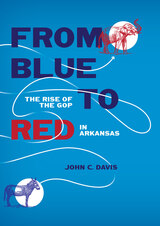 From Blue to Red: The Rise of the GOP in Arkansas
John C. Davis
University of Arkansas Press, 2024 On the morning of Election Day 2010, Democrats occupied three of the four Arkansas seats in the US House of Representatives, both US Senate seats, all state constitutional offices, and decisive majorities in both chambers of the Arkansas General Assembly. By the time votes were counted that evening, it was clear that the balance of power had shifted. Within five years, Arkansas Republicans would hold all six US congressional positions and every state constitutional seat and claim growing supermajorities in both state chambers. Since then, Republicans have enjoyed robust electoral success in Arkansas—formerly the last remaining state of the “Solid South” held by Democrats.
John C. Davis’s From Blue to Red: The Rise of the GOP in Arkansas provides a rigorous yet accessible study of this partisan shift, tracking changes in voter preference at the top of the ticket in the 1960s, generational replacement in Arkansas’ political power structure in the 1990s, and the emergence of a more nationalized and polarized electorate in the 2000s, among other developments. From Blue to Red is a fascinating look at how Arkansas went from being one of the country’s most solidly Democratic states to one of its most ardently Republican in just a few years.
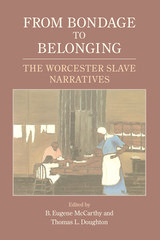 From Bondage to Belonging: The Worcester Slave Narratives
B. Eugene McCarthy
University of Massachusetts Press, 2007 First published between 1842 and 1895, the autobiographical narratives gathered in this volume document the experiences of eight former slaves who eventually took up residence in Worcester, Massachusetts. Each narrative tells a gripping individual story, its author clearly visible in the dress of his or her own words. Together they illuminate not only the inhumanity of slavery but also the dreams and dilemmas of emancipation, tracing the personal journeys of seven men and one woman from bondage to freedom. In their well-researched introduction, B. Eugene McCarthy and Thomas L. Doughton situate the Worcester slave narratives within a broader historical framework and analyze their meaning and significance. Drawing on a wide range of sources, they reconstruct the black community of Worcester and compare it with other New England black communities of the time, describing how the town evolved from a society with slaves in the colonial era to a hub for free blacks by the eve of the Civil War. They explain why these writings must be understood as part of a long-established tradition of African American self-representation, and show how the four narratives published before 1865 focus on the experience of slavery, while the four written after the war offer the fresh perspective of living in freedom. Headnotes describe the distinctive literary features of each narrative and provide additional information about the lives of the authors. The editors discuss why these ex-slaves came to Worcester, the circumstances in which each wrote his or her narrative, and the audiences they had in mind. No other collection of slave narratives offers such a diverse range of testimony within a specific historical and literary context, or a more compelling account of the transition from bondage to belonging.
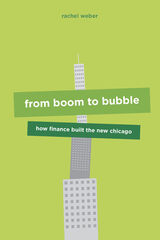 From Boom to Bubble: How Finance Built the New Chicago
Rachel Weber
University of Chicago Press, 2015 An unprecedented historical, sociological, and geographic look at how property markets change and fail—and how that affects cities.
In From Boom to Bubble, Rachel Weber debunks the idea that booms occur only when cities are growing and innovating. Instead, she argues, even in cities experiencing employment and population decline, developers rush to erect new office towers and apartment buildings when they have financial incentives to do so. Focusing on the main causes of overbuilding during the early 2000s, Weber documents the case of Chicago’s “Millennial Boom,” showing that the Loop’s expansion was a response to global and local pressures to produce new assets. An influx of cheap cash, made available through the use of complex financial instruments, helped transform what started as a boom grounded in modest occupant demand into a speculative bubble, where pricing and supply had only tenuous connections to the market. From Boom to Bubble is an innovative look at how property markets change and fail—and how that affects cities.
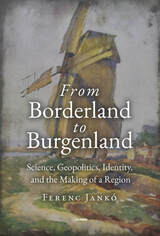 From Borderland to Burgenland: Science, Geopolitics, Identity, and the Making of a Region
Ferenc Jankó
Central European University Press, 2024 The area that constitutes the Austrian federal province of Burgenland belonged to the Hungarian part of the Habsburg empire until the end of World War I. This book helps us realize that geographical knowledge does not come ready-made. Instead, it is created by knowledge makers: geographers, historians, statisticians etc. This knowledge-making helped to legitimatize the area transferred between Austria and Hungary, shape the Burgenland identity, and depict its geopolitical role in the rise of national socialism. This book is about how those studying Burgenland, the creators of its geographical knowledge, saw and represented the province. It explores how they grasped the geographical characteristics of the region through their own perspective, influenced by their own professional positions, individual careers, motivations, and by the broader historical and social medium. The way the area between the provinces of Lower Austria and Styria came about as Burgenland is enthralling, as is how the people there experienced this change of sovereignty and how everyday social and economic relationships were transformed. Tracing the geographical discourses in the interwar period and beyond, the book argues that Burgenland became a successful geographical project, and departs from thoughts of subdivision, unviability, and backwardness, concentrating instead on fertility, unity, and modernization.
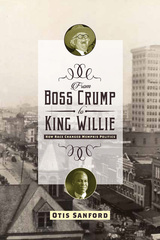 From Boss Crump to King Willie: How Race Changed Memphis Politics
Otis L. Sanford
University of Tennessee Press, 2016 From Boss Crump to King Willie offers an in-depth look at the vital role that race played in the political evolution of Memphis, from the rise of longtime political boss Edward Hull Crump to the election of Dr. Willie Herenton as the city’s first black mayor. Filled with vivid details on the workings of municipal politics, this accessible account by veteran journalist Otis Sanford explores the nearly century-long struggle by African Americans in Memphis to secure recognition from local leaders and gain a viable voice in the city’s affairs.
Sanford explains how, in 1909, Crump won his first election as mayor without black support but then immediately sought to woo and keep the black vote in order to maintain his political machine for the next two generations. The African American community overwhelmingly supported the Crump organization because he at least listened and responded to some of
their concerns, while other white leaders completely ignored them. The book probes Crump’s hot-and-cold relationship with local newspaper editors, some of whom castigated his machine politics, and examines the press’s influence on the political and civic life of the city. It also shows how, amid longstanding racism and poverty in Memphis, the black community nevertheless produced many prominent business, religious, and political leaders, most of whom had an amicable relationship with “Boss” Crump.
The book goes on to explore the political vacuum that ensued after Crump’s death in 1954, and the factors that led to African Americans becoming the majority voting population in the city following Dr. Martin Luther King Jr.’s assassination in 1968. Through the civil rights movement and beyond, black Memphians kept up their fight for recognition and inclusion.
That fight culminated in the election of Dr. Herenton, a well-educated native son who proved to be the right man at the right time to make racial and political history in the city. Additionally, the book compares the racial climate in Memphis with that in other southern cities during
the height of the civil rights movement.
 From Boss Crump to King Willie: How Race Changed Memphis Politics
Otis L. Sanford
University of Tennessee Press From Boss Crump to King Willie offers an in-depth look at the vital role that race played in the political evolution of Memphis, from the rise of longtime political boss Edward Hull Crump to the election of Dr. Willie Herenton as the city’s first black mayor. Filled with vivid details on the workings of municipal politics, this accessible account by veteran journalist Otis Sanford explores the nearly century-long struggle by African Americans in Memphis to secure recognition from local leaders and gain a viable voice in the city’s affairs.
Sanford explains how, in 1909, Crump won his first election as mayor without black support but then immediately sought to woo and keep the black vote in order to maintain his political machine for the next two generations. The African American community overwhelmingly supported the Crump organization because he at least listened and responded to some of
their concerns, while other white leaders completely ignored them. The book probes Crump’s hot-and-cold relationship with local newspaper editors, some of whom castigated his machine politics, and examines the press’s influence on the political and civic life of the city. It also shows how, amid longstanding racism and poverty in Memphis, the black community nevertheless produced many prominent business, religious, and political leaders, most of whom had an amicable relationship with “Boss” Crump.
The book goes on to explore the political vacuum that ensued after Crump’s death in 1954, and the factors that led to African Americans becoming the majority voting population in the city following Dr. Martin Luther King Jr.’s assassination in 1968. Through the civil rights movement and beyond, black Memphians kept up their fight for recognition and inclusion.
That fight culminated in the election of Dr. Herenton, a well-educated native son who proved to be the right man at the right time to make racial and political history in the city. Additionally, the book compares the racial climate in Memphis with that in other southern cities during
the height of the civil rights movement.
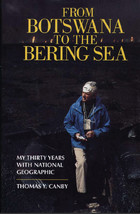 From Botswana to the Bering Sea: My Thirty Years With National Geographic
Thomas Y. Canby
Island Press, 1998 National Geographic has been called a window on the world and a passport to adventure. Each month an estimated forty million people in 190 countries open its pages and are transported to exotic realms that delight the eye and mind. Such widespread renown gives the magazine's writers an almost magical access to people and happenings, as doors that are closed to the rest of the journalistic world open wide. Thomas Y. Canby was fortunate to be a NationalGeographic writer and science editor from 1961 to 1991, a time during which the Society's ventures and size grew by leaps and bounds and the resources available to staff were seemingly limitless. In From Botswana to the Bering Sea, he gives readers an on-the-ground look at the life of a National Geographic field staffer and an insider's view of the fascinating dynamics within the magazine's editorial chambers. Canby's assignments dealt largely with issues of global concern, and his travels took him to the farthest reaches of the planet. This book gives the reader the visas and tickets to share in Canby's experiences -- from a Filipino rice harvest capped by a feast of deep-fried rats, to impoverished villages of Asia and Africa gripped by the world's most widespread famine, to seal hunting and dog sledding with Eskimos in the Canadian high Arctic. Readers match wits with paranoid guardians of the secret Soviet space program; skirt land mines in the flaming oil fields of Kuwait; and dodge death while scuba diving to an archaeological site in a Florida sinkhole. The book also gives insight into the magazine's inner workings: how article subjects are chosen; how writers are assigned and interact; how prolonged trips to impossibly remote destinations are planned; how staffers operate in the field. Working for National Geographic has been called "the best job in the world." From Botswana to the Bering Sea describes that unique job, and answers from first-hand knowledge the question Canby and his colleagues are so often asked: "So, what is it like to work for National Geographic?"
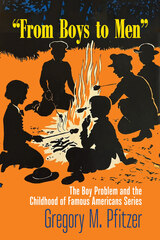 "From Boys to Men": The Boy Problem and the Childhood of Famous Americans Series
Gregory M. Pfitzer
University of Massachusetts Press, 2024 While adult concern about gender in children’s books has made recent headlines, this discussion is far from new. As Gregory M. Pfitzer reveals, the writers and editors at Bobbs-Merrill, the publisher of the Childhood of Famous Americans book series published between 1932 and 1958, thought carefully about how their books would influence the development of their male readers. These books emphasized inspiring tales over historical accuracy and were written in simple language, with characters, dialogue, and stories that were intended to teach boys how to be successful men.
But this was a specific image of American manhood. Published in an era when sociologists, psychologists, and other experts worried about male delinquency, the men envisioned in these books were steeped in Cold War racial and gender stereotypes, and questions about citizenship and responsibility. Based on deep archival research into the publication history of the series, “From Boys to Men” sheds light on current controversies on children’s books and presentations of gender diversity.
 From Broadway to The Bronx: New York City’s History through Song
Veronika Keller and Sabrina Mittermeier
Intellect Books, 2026 An intimate exploration of New York City through the music that defines it.
From Broadway to the Bronx tells the history of New York City in song across a variety of different genres that the city has been home to and instrumental in developing, covering everything from early twentieth-century sheet music to Broadway’s musical theater, hip-hop, disco, punk, dancehall, but also contemporary metal, rock, and pop. It features an analysis of the work of artists with intimate connections to the city, like Billy Joel, Lin-Manuel Miranda, Debbie Harry, Shinehead, and the Wu-Tang Clan, as well as an exclusive interview with RENT original cast member Anthony Rapp. The collection includes essays from authors across the disciplines of cultural studies, media studies, cultural history, and musicology, resulting in a far-ranging treatment of the interconnection of the city space and its musical history.
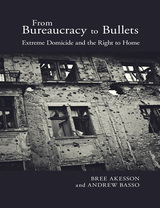 From Bureaucracy to Bullets: Extreme Domicide and the Right to Home
Bree Akesson
Rutgers University Press, 2022 There are currently a record-setting number of forcibly displaced persons in the world. This number continues to rise as solutions to alleviate humanitarian catastrophes of large-scale violence and displacement continue to fail. The likelihood of the displaced returning to their homes is becoming increasingly unlikely. In many cases, their homes have been destroyed as the result of violence. Why are the homes of certain populations targeted for destruction? What are the impacts of loss of home upon children, adults, families, communities, and societies? If having a home is a fundamental human right, then why is the destruction of home not viewed as a rights violation and punished accordingly? From Bureaucracy to Bullets answers these questions and more by focusing on the violent practice of extreme domicide, or the intentional destruction of the home, as a central and overlooked human rights issue.
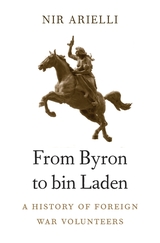 From Byron to bin Laden: A History of Foreign War Volunteers
Nir Arielli
Harvard University Press, 2018 What makes people fight and risk their lives for countries other than their own? Why did diverse individuals such as Lord Byron, George Orwell, Che Guevara, and Osama bin Laden all volunteer for ostensibly foreign causes? Nir Arielli helps us understand this perplexing phenomenon with a wide-ranging history of foreign-war volunteers, from the wars of the French Revolution to the civil war in Syria.
Challenging narrow contemporary interpretations of foreign fighters as a security problem, Arielli opens up a broad range of questions about individuals’ motivations and their political and social context, exploring such matters as ideology, gender, international law, military significance, and the memory of war. He shows that even though volunteers have fought for very different causes, they share a number of characteristics. Often driven by a personal search for meaning, they tend to superimpose their own beliefs and perceptions on the wars they join. They also serve to internationalize conflicts not just by being present at the front but by making wars abroad matter back at home. Arielli suggests an innovative way of distinguishing among different types of foreign volunteers, examines the mixed reputation they acquire, and provides the first in-depth comparative analysis of the military roles that foreigners have played in several conflicts.
Merging social, cultural, military, and diplomatic history, From Byron to bin Laden is the most comprehensive account yet of a vital, enduring, but rarely explored feature of warfare past and present.
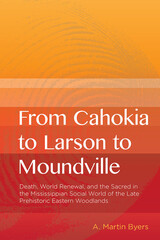 From Cahokia to Larson to Moundville
A. Martin Byers
University of Tennessee Press The orthodox view of the Mississippian social world hinges on the ideas that chiefdoms—dominance based hierarchical societies in the Eastern Woodlands of North America—vied for power, often violently bit at times cooperatively, through political and economic avenues. These chiefdoms represented something of a feudal state in prehistoric North America, which lasted up to the contact period with Europeans around 1500 A.D. In From Cahokia to Larson to Moundville, noted archaeologist A. Martin Byers challenges these assumptions and offers a contrasting view by deconstructing the chiefdom model and offering instead an autonomous social world that focused on spiritual renewal and sacred rituals. Byers presents his case through the archaeological record of Cahokia, Larson, and Moundville's monumental earthworks and, in doing so, reveals the Mississippian social community to be more complex, and more cooperative, than previously envisioned.
A. Martin Byers, now retired, was a research associate in the Department of Anthropology at McGill University in Montreal.
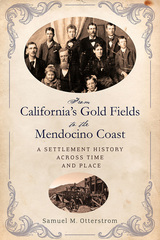 From California's Gold Fields to the Mendocino Coast: A Settlement History Across Time and Place
Samuel M. Otterstrom
University of Nevada Press, 2017 California’s history is rich and diverse, with numerous fascinating stories hidden in its past. Before the discovery of gold in the Sierras, San Francisco (Yerba Buena) and its surroundings comprised a sparsely populated frontier on the edge of the old Spanish realm. After 1848, the area rapidly transformed into a settled urban system as a tremendous influx of prospectors and settlers came to seek their fortune in California. A wave of gold miners, merchants, farmers, politicians, carpenters, and many others from various backgrounds and corners of the world migrated to the area at that time. Interrelated social, geographic, and economic processes led to a very quick metamorphosis from frontier settlement to a firmly established system with ingrained economic patterns.
The development of San Francisco’s outlying region from a wilderness into a prosperous village and farming mecca shows how quickly in-migration coupled with economic diversification can establish a stable settlement structure upon the landscape. Otterstrom describes an intricately woven tapestry of interrelated people who were contributing creators of a wide variety of prosperous northern California environs. He uncovers the processes that converted this sleepy post-Mexican outpost into a focal point of nearly hyperactive youthful growth. The narrative follows this crucial story of settlement development until the dawn of the twentieth century, through the interconnected framework of individual and family ingenuity, migration trajectories, and diverse geographical scales.
Multiplying individualistic experiences from across far-flung appendages of the Northern California system into larger and larger scales, Otterstrom has achieved a matchless historical and sociological study that will form the basis for any future studies of the area.
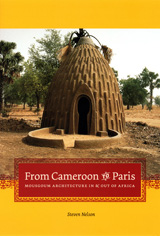 From Cameroon to Paris: Mousgoum Architecture In and Out of Africa
Steven Nelson
University of Chicago Press, 2007 The kind of extraordinary domed house constructed by Chad and Cameroon’s Mousgoum peoples has long held sway over the Western imagination. In fact, as Steven Nelson shows here, this prototypical beehive-shaped structure known as the teleukhas been cast as everything from a sign of authenticity to a tourist destination to a perfect fusion of form and function in an unselfconscious culture. And in this multifaceted history of the teleuk, thought of by the Mousgoum themselves as a three-dimensional symbol of their culture, Nelson charts how a singular building’s meaning has the capacity to change over time and in different places.
Drawing on fieldwork in Cameroon and Japan as well as archival research in Africa, the United States, and Europe, Nelson explores how the teleuk has been understood by groups ranging from contemporary tourists to the Cameroonian government and—most importantly—today’s Mousgoum people. In doing so, he moves in and out of Africa to provide a window into a changing Mousgoum culture and to show how both African and Western peoples use the built environment to advance their own needs and desires. Highlighting the global impact of African architecture, From Cameroon to Paris will appeal to scholars and students of African art history and architectural history, as well as those interested in Western interactions with Africa.
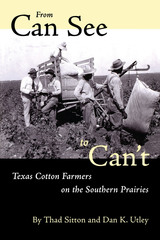 From Can See to Can’t: Texas Cotton Farmers on the Southern Prairies
By Thad Sitton and Dan K. Utley
University of Texas Press, 1997 Cotton farming was the only way of life that many Texans knew from the days of Austin's Colony up until World War II. For those who worked the land, it was a dawn-till-dark, "can see to can't," process that required not only a wide range of specialized skills but also a willingness to gamble on forces often beyond a farmer's control—weather, insects, plant diseases, and the cotton market. This unique book offers an insider's view of Texas cotton farming in the late 1920s. Drawing on the memories of farmers and their descendants, many of whom are quoted here, the authors trace a year in the life of south central Texas cotton farms. From breaking ground to planting, cultivating, and harvesting, they describe the typical tasks of farm families—as well as their houses, food, and clothing; the farm animals they depended on; their communities; and the holidays, activities, and observances that offered the farmers respite from hard work. Although cotton farming still goes on in Texas, the lifeways described here have nearly vanished as the state has become highly urbanized. Thus, this book preserves a fascinating record of an important part of Texas' rural heritage.
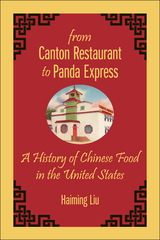 From Canton Restaurant to Panda Express: A History of Chinese Food in the United States
Liu, Haiming
Rutgers University Press, 2015 Received an Honorable Mention for the 2015-2016 Asian/Pacific American Awards for Literature, Adult Non-Fiction category
Finalist in the Culinary History category of the 2016 Gourmand World Cookbook Awards
From Canton Restaurant to Panda Express takes readers on a compelling journey from the California Gold Rush to the present, letting readers witness both the profusion of Chinese restaurants across the United States and the evolution of many distinct American-Chinese iconic dishes from chop suey to General Tso’s chicken. Along the way, historian Haiming Liu explains how the immigrants adapted their traditional food to suit local palates, and gives readers a taste of Chinese cuisine embedded in the bittersweet story of Chinese Americans.
Treating food as a social history, Liu explores why Chinese food changed and how it has influenced American culinary culture, and how Chinese restaurants have become places where shared ethnic identity is affirmed—not only for Chinese immigrants but also for American Jews. The book also includes a look at national chains like P. F. Chang’s and a consideration of how Chinese food culture continues to spread around the globe.
Drawing from hundreds of historical and contemporary newspaper reports, journal articles, and writings on food in both English and Chinese, From Canton Restaurant to Panda Express represents a groundbreaking piece of scholarly research. It can be enjoyed equally as a fascinating set of stories about Chinese migration, cultural negotiation, race and ethnicity, diverse flavored Chinese cuisine and its share in American food market today.
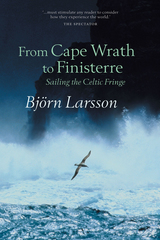 From Cape Wrath to Finisterre: Sailing the Celtic Fringe
Bjorn Larsson
Haus Publishing, 2005 From Cape Wrath to Finisterre is a travelogue and an homage to Celtic lands and waters, from their northern to their south western landfalls. Cape Wrath points towards the Arctic Circle at Scotland's furthest northerly limit. "Perhaps I was looking for a homeland, perhaps not, or at any rate a place where it would be worth trying to live for a while as well as one can for as long as it lasts." Finisterre, the furthest point in Galicia in northern Spain, was so named for being "The End of the Earth," Larsson's contemplative musings on life as seen from the cockpit and deck of his yacht enliven this journey from Denmark around Scotland, through the Irish Sea and onwards to Brittany and Spain. "Yes, I admit to rootlessness and impermanence," he admits. "But restlessness, on the other hand, is a scourge. It and its modern variant, stress, the futility of running round in circles, are to be avoided at all costs. It is far from certain, of course, that this way of life would suit everybody, but if it instils in someone the desire to experiment with alternatives. I shall be happy."
 From Central Planning to the Market: Transformation of the Czech Economy 1989 – 2004
Libor Zidek
Central European University Press, 2018 This book describes the process of the Czech economic transformation from the beginning of the 1990s to the country's entry into the European Union in 2004. This transformation is divided into four periods: an initial recession caused by the transformation; economic growth in the mid-1990s; a recession connected to the currency crisis of 1997; and recovery and growth from 1999 until 2004, when the analysis ends. The examination covers the main aspects of the transformation – an overall view of the process, political transition, economic policy, economic results (GDP development, inflation, unemployment), changes in outside indicators (balance of payments), privatization, transformation of the financial sector, and changes in the business sector and institutional development. The book also compares Czech development in this transformative era to those of Poland and Hungary. As in Hungary and Poland, the Czech Republic underwent an exceptional qualitative shift from a system centrally planned to one that was market-based. The book concludes that despite mistakes and hardships, the overall transformation process in Central Europe has been successful.
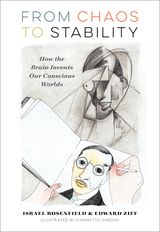 From Chaos to Stability: How the Brain Invents Our Conscious Worlds
Israel Rosenfield
University of Iowa Press, 2024 At the heart of Israel Rosenfield and Edward Ziff ’s inquiry is the nature of brain function. The sensory world is disordered and chaotic. There are no labels for tables, chairs, or airplanes, and indeed there are no colors, sounds, or smells, only photons, airwaves, odorant molecules, and so on, which are unlabeled and impossible to “know.”
To make sense of this chaos, the brain must simplify the sensory inputs by creating, or inventing, the colors, sounds, smells, forms, and faces that are perceived in consciousness, which become a proxy for the chaotic world in which we live. The brain’s ability to generalize and categorize these invented perceptions, and to relate them to one another, enables it to form memories, which are not fixed representations of things past, but a dynamic and malleable function of the brain that is relational.
When formation of these worlds breaks down, neurological differences arise. Although the mechanisms that transform sensory chaos into the simplified perceptions experienced in consciousness remain elusive, Rosenfield and Ziff relate what they have learned by means of imaging brain activity and by mapping the neural circuits that comprise memory traces. In addition, the authors offer perspectives for future studies of consciousness.
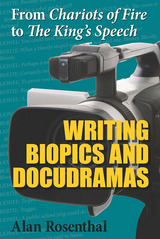 From Chariots of Fire to The King's Speech: Writing Biopics and Docudramas
Alan Rosenthal
Southern Illinois University Press, 2014 Over the past decade, movie audiences have become hungry for films based on real people and historical events. Never was this more evident than during the best-picture showdown between The King’s Speech and The Social Network during the 2011 Academy Awards, a scene then repeated, with Argo, Lincoln and Zero Dark Thirty in the 2013 awards.. While Hollywood moguls have come to recognize the box-office revenue and critical acclaim that accompany such films and are now fast-tracking many docudramas into theaters, there remains a need for more reality-based film scripts.
In From “Chariots of Fire” to “The King’s Speech,” writer, director, and producer Alan Rosenthal presents a manual for screenwriters to develop their bio-pic or docudrama from concept to completion. This comprehensive guide begins with an overview of the genre before providing screenwriters with all the techniques and insights needed to navigate the often intimidating landscape of screenwriting for reality-based scripts. Included within the volume are tips for such challenges as inception and research, developing dialogue and narration, and capably addressing any legal and rights issues that may arise. Also included are appendixes containing useful marketing tips and broadcast guidelines.
A practical, down-to-earth manual for experienced and novice screenwriters alike, From “Chariots of Fire” to “The King’s Speech” is the only manual dedicated explicitly to writing the bio-pic and docudrama. Rosenthal shares his decades of experience in the film industry, along with hands-on tools and maps, to help screenwriters completely master this popular film genre.
From Charity to Enterprise: The Development of American Social Work in a Market Economy
Stanley Wenocur and Michael Reisch
University of Illinois Press, 1989 How did social work evolve as a profession in the United States? Stanley Wenocur and Michael Reisch examine the history of social work and provide a theoretical model of professionalization for analyzing its development. They offer a provocative view of American social work as an enterprise seeking exclusive control over the definition, production, and distribution of an essential commodition.
Now in paperback for the first time, From Charity to Enterprise sets the professionalization of social work into a dynamic social context. The explicit political and economic framework of Wenocur and Reisch's model enables the authors to examine how various subgroups within social work lost or gained control of the professional enterprise at various points.
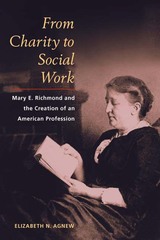 From Charity to Social Work: Mary E. Richmond and the Creation of an American Profession
Elizabeth N. Agnew
University of Illinois Press, 2003 Mary E. Richmond (1861-1928) was a contemporary of Jane Addams and an influential leader in the American charity organization movement. In this biography--the first in-depth study of Richmond's life and work--Elizabeth N. Agnew examines the contributions of this important, if hitherto under-valued, woman to the field of charity and to its development into professional social work.
Orphaned at a young age and largely self-educated, Richmond initially entered charity work as a means of self-support, but came to play a vital role in transforming philanthropy--previously seen as a voluntary expression of individual altruism--into a valid, organized profession. Her career took her from charity organization leadership in Baltimore and Philadelphia to an executive position with the prestigious Russell Sage Foundation in New York City.
Richmond's progressive civic philosophy of social work was largely informed by the social gospel movement. She strove to find practical applications of the teachings of Christianity in response to the social problems that accompanied rapid industrialization, urbanization, and poverty. At the same time, her tireless efforts and personal example as a woman created an appealing, if ambiguous, path for other professional women. A century later her legacy continues to echo in social work and welfare reform.
From Child Art to Visual Language of Youth: New Models and Tools for Assessment of Learning and Creation in Art Education
Edited by Andrea Kárpáti and Emil Gaul
Intellect Books, 2013 This collection provides a critical overview of research on the assessment of visual skills in students from six to eighteen years old. In a series of studies, contributors reconsider evaluation practices used in art education and examine current ideas about children’s development of visual skills and abilities. Suggesting a variety of novel approaches, they provide crucial support to those who advocate assessment based on international standards. Such assessment, this volume shows, contributes to our knowledge about visual skills and their development, improving art education and its chances to survive the twenty-first century as a respected and relevant school discipline.
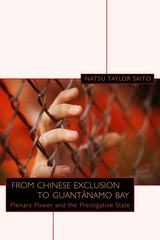 From Chinese Exclusion to Guantánamo Bay: Plenary Power and the Prerogative State
Natsu Taylor Saito
University Press of Colorado, 2007 Continuous expansion of executive power is igniting national debate: Is the administration authorized to detain people without charges or access to counsel, due process, or a fair trial? Is torture acceptable as long as it doesn't happen on U.S. soil? In a new study of the use of plenary power - the doctrine under which U.S. courts have allowed the exercise of U.S. jurisdiction without concomitant constitutional protection - Natsu Taylor Saito puts contemporary policies in historical perspective, illustrating how such extensions of power have been upheld by courts from the 1880s to the present.
From Chinese Exclusion to Guantánamo Bay also provides a larger context for understanding problems resulting from the exercise of plenary power. Saito explains how the rights of individuals and groups deemed Other by virtue of race or national origin have been violated under both the Constitution and international law. The differing treatment of José Padilla and John Walker Lindh - both Americans accused of terrorism - provides an example of such disparate approaches. Such executive actions and their sanction by Congress and the judiciary, Saito argues, undermine not just individual rights but the very foundations of our national security - democracy and the rule of law.
From Chinese Exclusion to Guantánamo Bay will interest readers concerned with the historical background of constitutional protection in times of war and peace and will provide fascinating new material for scholars, teachers, and students of law, history, and ethnic studies
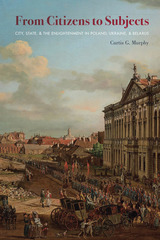 From Citizens to Subjects: City, State, and the Enlightenment in Poland, Ukraine, and Belarus
Curtis G. Murphy
University of Pittsburgh Press, 2018 From Citizens to Subjects challenges the common assertion in historiography that Enlightenment-era centralization and rationalization brought progress and prosperity to all European states, arguing instead that centralization failed to improve the socioeconomic position of urban residents in the former Polish-Lithuanian Commonwealth over a hundred-year period.
Murphy examines the government of the Polish-Lithuanian Commonwealth and the several imperial administrations that replaced it after the Partitions, comparing and contrasting their relationships with local citizenry, minority communities, and nobles who enjoyed considerable autonomy in their management of the cities of present-day Poland, Ukraine, and Belarus. He shows how the failure of Enlightenment-era reform was a direct result of the inherent defects in the reformers' visions, rather than from sabotage by shortsighted local residents. Reform in Poland-Lithuania effectively destroyed the existing system of complexities and imprecisions that had allowed certain towns to flourish, while also fostering a culture of self-government and civic republicanism among city citizens of all ranks and religions. By the mid-nineteenth century, the increasingly immobile post-Enlightenment state had transformed activist citizens into largely powerless subjects without conferring the promised material and economic benefits of centralization.
From City Space to Cyberspace: Art, Squatting, and Internet Culture in the Netherlands
Amanda Wasielewski
Amsterdam University Press, 2021 The narrative of the birth of internet culture often focuses on the achievements of American entrepreneurs in Silicon Valley, but there is an alternative history of internet pioneers in Europe who developed their own model of network culture in the early 1990s. Drawing from their experiences in the leftist and anarchist movements of the ’80s, they built DIY networks that give us a glimpse into what internet culture could have been if it were in the hands of squatters, hackers, punks, artists, and activists. In the Dutch scene, the early internet was intimately tied to the aesthetics and politics of squatting. Untethered from profit motives, these artists and activists aimed to create a decentralized tool that would democratize culture and promote open and free exchange of information.
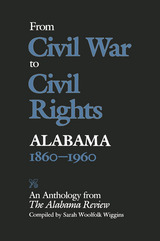 From Civil War to Civil Rights, Alabama 1860–1960: An Anthology from The Alabama Review
Sarah Woolfolk Wiggins
University of Alabama Press, 1987 To understand Alabama history one must appreciate the impact of the failure of secession of the state in the subsequent half century as well as the causes for the success of the Civil Rights Movement in the state in the mid-twentieth century. The prophet of the first revolution was William Lowndes Yancey and the prophet of the second was Martin Luther King, Jr., two Southerners who set in motion forces that shaped American history beyond the borders of the state and region. In the years between their two lives Alabama changed dramatically. These examples of outstanding scholarship were published in The Alabama Review over the past forty years and provide an overview of a century of change in Alabama. The first articles center of the Civil War and Reconstruction era, which left Alabama reeling in turmoil. The efforts of the Greenbackers, the Grange, the Alliance, and the Populists ended in frustration as the politics of pressure and intimidation prevailed for the half-century after the Civil War. White as well as black poor had not yet appreciated the political power of their numbers.
In the new century, progressives had a distinct sense that they could take on outside forces larger than themselves. National currents swept Alabama into movements for the regulation of railroads, women’s suffrage, child labor reform, and welfare capitalism. Still, progressive reform coexisted with the most frightening political and social movement of early twentieth-century Alabama, the Ku Klux Klan, whose blessing or curse made or broke the careers of powerful politicians.
The desperation of the Great Depression gave way to a revived sense that Alabamians could shape their world. Not only was this feeling new, but so were the politicians whose debut represented emergence of the poor determined to act in their own behalf. The Montgomery Bus Boycott was the first thunder of a social and political storm that would remake Alabama and the entire country.
From Civilians to Soldiers and from Soldiers to Civilians: Mobilization and Demobilization in Sudan
Saskia Baas
Amsterdam University Press, 2012 Drawing on extensive research and personal accounts, this hard-hitting study investigates the processes of mobilization and demobilization of fighters from all factions during the long, drawn out civil war in Sudan. Through in-depth interviews with current and former combatants in Sudan Saskia Baas investigates how civilians get drawn into the conflict and what the deep consequences are for becoming part of a guerilla movement. The resulting narrative is fascinating and disturbing, while providing vivid insight into the dynamics of civil war that are relevant to conflicts all over the world. From Civilians to Soldiers and from Soldiers to Civilians will appeal to political scientists, military historians, and nonacademic audiences interested in the conflict in Sudan.
 From Civilization To Segregation: Social Ideals and Social Control in Southern Rhodesia, 1890–1934
Carol Summers
Ohio University Press, 1994 This study examines the social changes that took place in Southern Rhodesia after the arrival of the British South Africa Company in the 1890s. Summer’s work focuses on interactions among settlers, the officials of the British South America Company and the administration, missionaries, humanitarian groups in Britain, and the most vocal or noticeable groups of Africans. Through this period of military conquest and physical coercion, to the later attempts at segregationist social engineering, the ideals and justifications of Southern Rhodesians changed drastically. Native Policy, Native Education policies, and, eventually, segregationist Native Development policies changed and evolved as the white and black inhabitants of Southern Rhodesia (colonial Zimbabwe) struggled over the region’s social form and future. Summers’s work complements a handful of other recent works reexamining the social history of colonial Zimbabwe and demonstrating how knowledge, perception, and ideologies interacted with the economic and political dimensions of the region’s past.
 From Class to Identity: The politics of education reforms in former Yugoslavia
Jana Bacevic
Central European University Press, 2014 Jana Bacevic provides an innovative analysis of education policy-making in the processes of social transformation and post-conflict development in the Western Balkans. Based on case studies of educational reform in the former Yugoslavia - from the decade before its violent breakup to contemporary efforts in post-conflict reconstruction - From Class to Identity tells the story of the political processes and motivations underlying each reform.The book moves away from technical-rational or prescriptive approaches that dominate the literature on education policy-making during social transformation, and offers an example on how to include the social, political and cultural context in the understanding of policy reforms. It connects education policy at a particular time in a particular place with broader questions such as: What is the role of education in society? What kind of education is needed for a 'good' society? Who are the 'targets' of education policies (individuals/citizens, ethnic/religious/linguistic groups, societies)? Bacevic shows how different answers to these questions influence the contents and outcomes of policies.
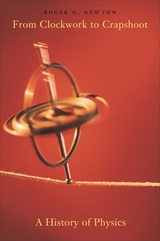 From Clockwork to Crapshoot: A History of Physics
Roger G. Newton
Harvard University Press, 2010 Science is about 6000 years old while physics emerged as a distinct branch some 2500 years ago. As scientists discovered virtually countless facts about the world during this great span of time, the manner in which they explained the underlying structure of that world underwent a philosophical evolution. From Clockwork to Crapshoot provides the perspective needed to understand contemporary developments in physics in relation to philosophical traditions as far back as ancient Greece.
Roger Newton, whose previous works have been widely praised for erudition and accessibility, presents a history of physics from the early beginning to our day--with the associated mathematics, astronomy, and chemistry. Along the way, he gives brief explanations of the scientific concepts at issue, biographical thumbnail sketches of the protagonists, and descriptions of the changing instruments that enabled scientists to make their discoveries. He traces a profound change from a deterministic explanation of the world--accepted at least since the time of the ancient Greek and Taoist Chinese civilizations--to the notion of probability, enshrined as the very basis of science with the quantum revolution at the beginning of the twentieth century. With this change, Newton finds another fundamental shift in the focus of physicists--from the cause of dynamics or motion to the basic structure of the world. His work identifies what may well be the defining characteristic of physics in the twenty-first century.
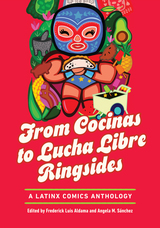 From Cocinas to Lucha Libre Ringsides: A Latinx Comics Anthology
Edited by Frederick Luis Aldama and Angela M. Sánchez
Ohio State University Press, 2025 In this comics anthology full of humor and heart, writers and artists from across the US pay tribute to the ways food and sports endure as touchstones in the Latin American diaspora. In the vein of Frederick Luis Aldama’s bestselling anthology Tales from la Vida, creators offer slice-of-life comics in an array of styles to capture common threads that bind this dizzyingly diverse community. From a simple quesadilla eaten hot on the way to school, to a Puerto Rican grandmother’s offering of guineitos en escabeche, to a homesick Chicano punk’s reverse-engineered tamales, food is a gift from elders to children, a marker of continuity and togetherness amid a dominant culture that may dismiss its flavors. Sports, too, provide a path to friendship and connection across national and language barriers, anchoring fans and participants in a sense of identity and place, whether through the perseverance of the Mayan game pok ta’ pok, the unifying surge of lucha libre or soccer fandom, or a father and daughter’s shared love of horse racing. Together, the creators collected in From Cocinas to Lucha Libre Ringsides share a mosaic of stories that vividly portray Latinx identity and life today.
Contributors:
Aleasha Acevedo, José Alaniz, Frederick Luis Aldama, Julio Anta, Charlene Bowles, David Bowles, Adrian Carrillo, José Cabrera, Valerie Martinez Cabrera, Mauricio Alberto Cordero, Jaime Crespo, Celeste Cruz, Ernesto Cuevas Jr., Chris Escobar, Rolando Esquivel, Tim Fielder, Dustin Garcia, Eric J. García, Jorge Garza, Oscar Garza, Lucas Gattoni, Blas Goncalves-Borrego, Estella González, Carina Guevara, Aaron Guzman, Javier Hernandez, Sam Jimenez, Eric Kittelberger, Alberto Ledesma, Pablo Leon, Darren López, Patrick Lugo, Jarred A. Luján, Eliamaría Madrid, Miguel Martinez, Paloma Martínez-Cruz, Carlos Meyer, Marisol Meyer Driovínto, Paul Meyer, Rosie Murillo, Rafael Navarro, Daniel Parada, Stephanie Nina Pitsirilos, Jazmin Puente, Raúl the Third, Anna Maria Richardson, Hector Rodriguez III, Theresa Rojas, Rafael Rosado, Andrea Rosales, Justin Rueff, Irma Ruiz, Angela M. Sánchez, Serenity Serseción, Javier Solórzano, Josh Trujillo, Cayetano Valenzuela, Diana “Dianita” Vargas Sampieri, Andrés Vera Martínez
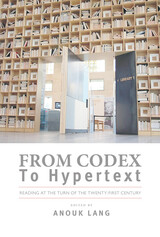 From Codex to Hypertext: Reading at the Turn of the Twenty-first Century
Anouk Lang
University of Massachusetts Press, 2012 The start of the twenty-first century has brought with it a rich variety of ways in which readers can connect with one another, access texts, and make sense of what they are reading. At the same time, new technologies have also opened up exciting possibilities for scholars of reading and reception in offering them unprecedented amounts of data on reading practices, book buying patterns, and book collecting habits.
In From Codex to Hypertext, scholars from multiple disciplines engage with both of these strands. This volume includes essays that consider how changes such as the mounting ubiquity of digital technology and the globalization of structures of publication and book distribution are shaping the way readers participate in the encoding and decoding of textual meaning. Contributors also examine how and why reading communities cohere in a range of contexts, including prisons, book clubs, networks of zinesters, state-funded programs designed to promote active citizenship, and online spaces devoted to sharing one's tastes in books.
As concerns circulate in the media about the ways that reading—for so long anchored in print culture and the codex—is at risk of being irrevocably altered by technological shifts, this book insists on the importance of tracing the historical continuities that emerge between these reading practices and those of previous eras.
In addition to the volume editor, contributors include Daniel Allington, Bethan Benwell, Jin Feng, Ed Finn, Danielle Fuller, David S. Miall, Julian Pinder, Janice Radway, Julie Rak, DeNel Rehberg Sedo, Megan Sweeney, Joan Bessman Taylor, Molly Abel Travis, and David Wright.
 From Coexistence to Conquest: International Law and the Origins of the Arab-Israeli Conflict, 1891-1949
Victor Kattan
Pluto Press, 2009 From Coexistence to Conquest seeks to explain how the Arab-Israeli conflict developed by looking beyond strict legalism to the men behind the policies adopted by the Great Powers at the dawn of the twentieth century. It controversially argues that Zionism was adopted by the British Government in its 1917 Balfour Declaration primarily as an immigration device and that it can be traced back to the 1903 Royal Commission on Alien Immigration and the Alien’s Act 1905.
The book places the violent reaction of the Palestine Arabs to mass Jewish immigration in the context of Zionism, highlighting the findings of several British commissions of inquiry which recommended that Britain abandon its policy. The book also revisits the controversies over the question of self-determination, and the partition of Palestine.
The Chapter on the 1948 conflict seeks to update international lawyers on the scholarship of Israel’s ‘new’ historians and reproduces some of the horrific accounts of the atrocities that took place. The penultimate chapter argues that Israel was created through an act of conquest or subjugation. The book concludes with a sobering analysis of the conflict arguing that neither Jews nor Arabs were to blame for starting it.
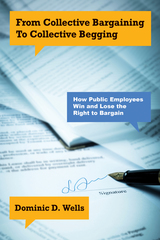 From Collective Bargaining to Collective Begging: How Public Employees Win and Lose the Right to Bargain
Dominic D. Wells
Temple University Press, 2021 How do public employees win and lose their collective bargaining rights? And how can public sector labor unions protect those rights? These are the questions answered in From Collective Bargaining to Collective Begging. Dominic Wells takes a mixed-methods approach and uses more than five decades of state-level data to analyze the expansion and restriction of rights. Wells identifies the factors that led states to expand collective bargaining rights to public employees, and the conditions under which public employee labor unions can defend against unfavorable state legislation. He presents case studies and coalition strategies from Ohio and Wisconsin to demonstrate how labor unions failed to protect their rights in one state and succeeded in another. From Collective Bargaining to Collective Begging also provides a comprehensive quantitative analysis of the economic, political, and cultural factors that both led states to adopt policies that reduced the obstacles to unionization and also led other states to adopt policies that increased the difficulty to form and maintain a labor union. In his conclusion, Wells suggests the path forward for public sector labor unions and what policies need to be implemented to improve employee labor relations.
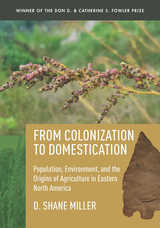 From Colonization to Domestication: Population, Environment, and the Origins of Agriculture in Eastern North America
D. Shane Miller
University of Utah Press, 2018 Winner of the Don D. and Catherine S. Fowler Prize.
Eastern North America is one of only a handful of places in the world where people first discovered how to domesticate plants. In this book, anthropologist Shane Miller uses two common, although unconventional, sources of archaeological data—stone tools and the distribution of archaeological sites—to trace subsistence decisions from the initial colonization of the American Southeast at the end of the last Ice Age to the appearance of indigenous domesticated plants roughly 5,000 years ago.
Miller argues that the origins of plant domestication lie within the context of a boom/bust cycle that culminated in the mid-Holocene, when hunter-gatherers were able to intensively exploit shellfish, deer, oak, and hickory. After this resource “boom” ended, some groups shifted to other plants in place of oak and hickory, which included the suite of plants that were later domesticated. Accompanying these subsistence trends is evidence for increasing population pressure and declining returns from hunting. Miller contends, however, that the appearance of domesticated plants in eastern North America, rather than simply being an example of necessity as the mother of invention, is the result of individuals adjusting to periods of both abundance and shortfall driven by climate change.
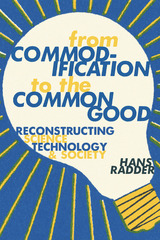 From Commodification to the Common Good: Reconstructing Science, Technology, and Society
Hans Radder
University of Pittsburgh Press, 2019
The commodification of science—often identified with commercialization, or the selling of expertise and research results and the “capitalization of knowledge” in academia and beyond—has been investigated as a threat to the autonomy of science and academic culture and criticized for undermining the social responsibility of modern science. In From Commodification to the Common Good, Hans Radder revisits the commodification of the sciences from a philosophical perspective to focus instead on a potential alternative, the notion of public-interest science. Scientific knowledge, he argues, constitutes a common good only if it serves those affected by the issues at stake, irrespective of commercial gain. Scrutinizing the theory and practices of scientific and technological patenting, Radder challenges the legitimacy of commercial monopolies and the private appropriation and exploitation of research results. His book invites us to reevaluate established laws and to question doctrines and practices that may impede or even prohibit scientific research and social progress so that we might achieve real and significant transformations in service of the common good.
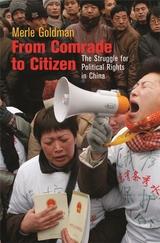 From Comrade to Citizen: The Struggle for Political Rights in China
Merle Goldman
Harvard University Press, 2007 A leading scholar of China's modern political development examines the changing relationship between the Chinese people and the state. Correcting the conventional view of China as having instituted extraordinary economic changes but having experienced few political reforms in the post-Mao period, Merle Goldman details efforts by individuals and groups to assert their political rights.
China's move to the market and opening to the outside world have loosened party controls over everyday life and led to the emergence of ideological diversity. Starting in the 1980s, multi-candidate elections for local officials were held, and term limits were introduced for communist party leaders. Establishment intellectuals who have broken away from party patronage have openly criticized government policies. Those intellectuals outside the party structures, because of their participation in the Cultural Revolution or the 1989 Tiananmen Square demonstrations, have organized petitions, published independent critiques, formed independent groups, and even called for a new political system.
Despite the party's repeated attempts to suppress these efforts, awareness about political rights has been spreading among the general population. Goldman emphasizes that these changes do not guarantee movement toward democracy, but she sees them as significant and genuine advances in the assertion of political rights in China.
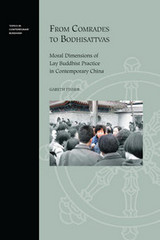 From Comrades to Bodhisattvas: Moral Dimensions of Lay Buddhist Practice in Contemporary China
Gareth Fisher
University of Hawaii Press, 2014 From Comrades to Bodhisattvas is the first book-length study of Han Chinese Buddhism in post-Mao China. Using an ethnographic approach supported by over a decade of field research, it provides an intimate portrait of lay Buddhist practitioners in Beijing who have recently embraced a religion that they were once socialized to see as harmful superstition. The book focuses on the lively discourses and debates that take place among these new practitioners in an unused courtyard of a Beijing temple. In this non-monastic space, which shrinks each year as the temple authorities expand their commercial activities, laypersons gather to distribute and exchange Buddhist-themed media, listen to the fiery sermons of charismatic preachers, and seek solutions to personal moral crises. Applying recent theories in the anthropology of morality and ethics, Gareth Fisher argues that the practitioners are attracted to the courtyard as a place where they can find ethical resources to re-make both themselves and others in a rapidly changing nation that they believe lacks a coherent moral direction. Spurred on by the lessons of the preachers and the stories in the media they share, these courtyard practitioners inventively combine moral elements from China’s recent Maoist past with Buddhist teachings on the workings of karma and the importance of universal compassion. Their aim is to articulate a moral antidote to what they see as blind obsession with consumption and wealth accumulation among twenty-first century Chinese. Often socially marginalized and sidelined from meaningful roles in China’s new economy, these former communist comrades look to their new moral roles along a bodhisattva path to rebuild their self-worth.
Each chapter focuses on a central trope in the courtyard practitioners’ projects to form new moral identities. The Chinese government’s restrictions on the spread of religious teachings in urban areas curtail these practitioners' ability to insert their moral visions into an emerging public sphere. Nevertheless, they succeed, at least partially, Fisher argues, in creating their own discursive space characterized by a morality of concern for fellow humans and animals and a recognition of the organizational abilities and pedagogical talents of its members that are unacknowledged in society at large. Moreover, as the later chapters of the book discuss, by writing, copying, and distributing Buddhist-themed materials, the practitioners participate in creating a religious network of fellow-Buddhists across the country, thereby forming a counter-cultural community within contemporary urban China.
Highly readable and full of engaging descriptions of the real lives of practicing lay Buddhists in contemporary China, From Comrades to Bodhisattvas will interest specialists in Chinese Buddhism, anthropologists of contemporary Asia, and all scholars interested in the relationship between religion and cultural change.
From Concentration Camp to Campus: Japanese American Students and World War II
Allan W. Austin
University of Illinois Press, 2003 In the aftermath of Japan's attack on Pearl Harbor and the systematic exile and incarceration of thousands of Japanese Americans, the National Japanese American Student Relocation Council was born. Created to facilitate the movement of Japanese American college students from concentration camps to colleges away from the West Coast, this privately organized and funded agency helped more than 4,000 incarcerated students pursue higher education at more than 600 schools during WWII.
Austin argues that the resettled students transformed the attempts at assimilation to create their own meanings and suit their own purposes, and succeeded in reintegrating themselves into the wider American society without sacrificing their connections to community and their Japanese cultural heritage.
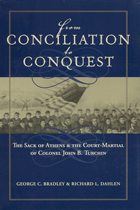 From Conciliation to Conquest: The Sack of Athens and the Court-Martial of Colonel John B. Turchin
George C. Bradley and Richard L. Dahlen
University of Alabama Press, 2006 In the summer of 1862, the U.S. Army court martialed Colonel John B. Turchin, a Russian-born Union officer, for "outrages" committed by his troops in Athens, Alabama
In the summer of 1862, the U.S. Army court martialed Colonel John B. Turchin, a Russian-born Union officer, for offenses committed by his troops in Athens, Alabama, including looting, safe cracking, the vandalization of homes, and the rape of young black women. The pillage of Athens violated a government policy of conciliation; it was hoped that if Southern civilians were treated gently as citizens of the United States, they would soon return their allegiance to the federal government.
By examining the volunteers who made up Turchin’s force, the colonel's trial, his subsequent promotion, the policy debate surrounding the incident and the public reaction to the outcome, the authors further illuminate one of the most provocative questions in Civil War studies: how did the policy set forth by President Lincoln evolve from one of conciliation to one far more modern in nature, placing the burden of war on the civilian population of the South?
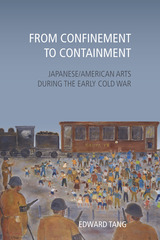 From Confinement to Containment: Japanese/American Arts during the Early Cold War
Edward Tang
Temple University Press, 2019 During the early part of the Cold War, Japan emerged as a model ally, and Japanese Americans were seen as a model minority. From Confinement to Containment examines the work of four Japanese and Japanese/American artists and writers during this period: the novelist Hanama Tasaki, the actor Yamaguchi Yoshiko, the painter Henry Sugimoto, and the children’s author Yoshiko Uchida. The backgrounds of the four figures reveal a mixing of nationalities, a borrowing of cultures, and a combination of domestic and overseas interests. Edward Tang shows how the film, art, and literature made by these artists revealed to the American public the linked processes of U.S. actions at home and abroad. Their work played into—but also challenged—the postwar rehabilitated images of Japan and Japanese Americans as it focused on the history of transpacific relations such as Japanese immigration to the United States, the Asia-Pacific War, U.S. and Japanese imperialism, and the wartime confinement of Japanese Americans. From Confinement to Containment shows the relationships between larger global forces as well as how the artists and writers responded to them in both critical and compromised ways.
From Conflict to Inclusion in Housing: Interaction of Communities, Residents and Activists
Edited by Graham Cairns, Giorgos Artopoulos, and Kirsten Day
University College London, 2017 Sociopolitical views on housing have been brought to the fore in recent years by economic crises and rises in migration. Through case studies covering a range of geographical contexts, this book’s chapters build a narrative encompassing issues of housing equality, the biopolitics of dwelling and its associated activism, initiatives for social sustainability, and cohabitation of the urban terrain. This volume presents an ethical view of the stakeholders who are typically unaccounted for, thus offering a critique of recent governmental policy on housing access and development.
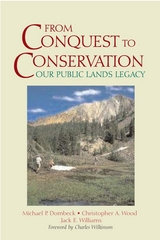 From Conquest to Conservation: Our Public Lands Legacy
Michael P. Dombeck, Christopher A. Wood, and Jack E. Williams
Island Press, 2003 From Conquest to Conservation is a visionary new work from three of the nation’s most knowledgeable experts on public lands. As chief of the Forest Service, Mike Dombeck became a lightning rod for public debate over issues such as the management of old-growth forests and protecting roadless areas. Dombeck also directed the Bureau of Land Management from 1994 to 1997 and is the only person ever to have led the two largest land management agencies in the United States. Chris Wood and Jack Williams have similarly spent their careers working to steward public resources, and the authors bring unparalleled insight into the challenges facing public lands and how those challenges can be met. Here, they examine the history of public lands in the United States and consider the most pressing environmental and social problems facing public lands. Drawing heavily on fellow Forest Service employee Aldo Leopold’s land ethic, they offer specific suggestions for new directions in policy and management that can help maintain and restore the health, diversity, and productivity of public land and water resources, both now and into the future. Also featured are lyrical and heartfelt essays from leading writers, thinkers, and scientists— including Bruce Babbitt, Rick Bass, Patricia Nelson Limerick, and Gaylord Nelson—about the importance of public lands and the threats to them, along with original drawings by William Millonig.
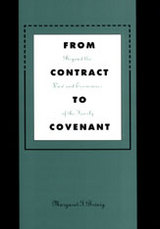 From Contract to Covenant: Beyond the Law and Economics of the Family
Margaret F. Brinig
Harvard University Press, 2000 This book is the first systematic account of the law and economics of the family. It explores the implications of economics for family law—divorce, adoption, breach of promise, surrogacy, prenuptial agreements, custody arrangements—and its limitations.
Before a family forms, prospective partners engage in a kind of market activity that involves searching and bargaining, for which the economic analysis of contract law provides useful insights. Once a couple marries, the individuals become a family and their decisions have important consequences for other parties, especially children. As a result, the state and community have vital interests in the family.
Although it may be rational to breach a contract, pay damages, and recontract when a better deal comes along, this practice, if applied to family relationships, would make family life impossible—as would the regular toting up of balances between the partners. So the book introduces the idea of covenant to consider the role of love, trust, and fidelity, concepts about which economic analysis and contract law have little to offer, but feminist thought has a great deal to add. Although families do break up, children of divorce are still bound to their parents and to each other in powerful ways.
 From Copyright to Copperfield: The Identity of Dickens
Alexander Welsh
Harvard University Press, 1987 In this engaging analysis of a crucial period in Dickens's life, Alexander Welsh corrects our picture of the novelist's development and advocates a new approach to biographical criticism. Welsh centers our attention on an early crisis in Dickens's life and writing. His starting point is 1842, when the thirty year-old established writer (already author of The Pickwick Papers, Oliver Twist, Nicholas Nickleby, and The Old Curiosity Shop) traveled in America advocating international copyright. Welsh argues that the frustration and chagrin Dickens felt on this trip—when the American press accused him of hypocritical self-interest—had a demonstrable impact on his creative development. New powers of characterization are evident in the novels published in the decade that followed: Martin Chuzzlewit, Dombey and Son, and David Copperfield, books named for heroes who became progressively more like projections of the author himself.
In these novels Dickens also asserts his kinship with Moliere, Milton, and Shakespeare. Playing boldly on Tartuffe, Paradise Lost, and King Lear, he lays claim to his own identity as a writer. Welsh shows that as much weight should be given to such literary concerns as to Dickens's recollection—in this same stage of his career—of the childhood trauma memorably inscribed in Copperfield.
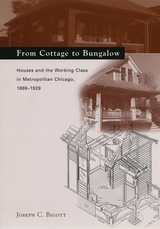 From Cottage to Bungalow: Houses and the Working Class in Metropolitan Chicago, 1869-1929
Joseph C. Bigott
University of Chicago Press, 2001 It's hard to overestimate the complexity of the factors that dictate something as simple as where, and in what sorts of structures, people live. Urban planning, business, labor, ethnicity, architecture—each influences the types of structures people live in, and the sorts of lives they lead within them.
Joseph C. Bigott takes on all of these fields in From Cottage to Bungalow, a sophisticated study of domestic structures and ethnic working-class neighborhoods in Chicago during the critical period of 1869 to 1929, when the city attracted huge numbers of immigrants. Exploring the meaning of home ownership in this context, Bigott develops two case studies that combine the intimate lives of ordinary people (primarily in Chicago's Polish and German communities) with broad analysis of everything from real estate markets to the very carpentry practices used to construct houses. His progressive methods and the novel conclusions they support chronicle not only the history of housing in Chicago, but also the organizations of people's lives, and the ways in which housing has affected notions of who is—and who is not—a worthy American citizen.
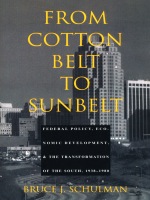 From Cotton Belt to Sunbelt: Federal Policy, Economic Development, and the Transformation of the South 1938–1980
Bruce J. Schulman
Duke University Press, 1994 From Cotton Belt to Sunbelt investigates the effects of federal policy on the American South from 1938 until 1980 and charts the close relationship between federal efforts to reform the South and the evolution of activist government in the modern United States. Decrying the South’s economic backwardness and political conservatism, the Roosevelt Administration launched a series of programs to reorder the Southern economy in the 1930s. After 1950, however, the social welfare state had been replaced by the national security state as the South’s principal benefactor. Bruce J. Schulman contrasts the diminished role of national welfare initiatives in the postwar South with the expansion of military and defense-related programs. He analyzes the contributions of these growth-oriented programs to the South’s remarkable economic expansion, to the development of American liberalism, and to the excruciating limits of Sunbelt prosperity, ultimately relating these developments to southern politics and race relations. By linking the history of the South with the history of national public policy, Schulman unites two issues that dominate the domestic history of postwar America—the emergence of the Sunbelt and the expansion of federal power over the nation’s economic and social life. A forcefully argued work, From Cotton Belt to Sunbelt, originally published in 1991(Oxford University Press), will be an important guide to students and scholars of federal policy and modern Southern history.
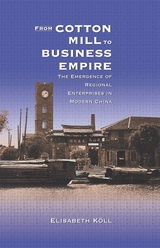 From Cotton Mill to Business Empire: The Emergence of Regional Enterprises in Modern China
Elisabeth Köll
Harvard University Press, 2003 The demise of state-owned enterprises, the transformation of collectives into shareholding cooperatives, and the creation of investment opportunities through stock markets indicate China's movement from a socialist, state-controlled economy toward a socialist market economy. Yet, contrary to high expectations that China's new enterprises will become like corporations in capitalist countries, management often remains under the control of the onetime bureaucrats who ran the socialist enterprises.
The concepts, definitions, and interpretations of property rights, corporate structures, and business practices in contemporary China have historical, institutional, and cultural roots. In tracing the development under founder Zhang Jian (1853-1926) and his successors of the Dasheng Cotton Mill in Nantong into a business group encompassing, among other concerns, cotton, flour, and oil mills, land development companies, and shipping firms, the author documents the growth of regional enterprises as local business empires from the 1890s until the foundation of the People's Republic in 1949. She focuses on the legal and managerial evolution of limited-liability firms in China, particularly issues of control and accountability; the introduction and management of industrial work in the countryside; and the integration and interdependency of local, national, and international markets in Republican China.
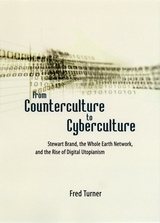 From Counterculture to Cyberculture: Stewart Brand, the Whole Earth Network, and the Rise of Digital Utopianism
Fred Turner
University of Chicago Press, 2006 In the early 1960s, computers haunted the American popular imagination. Bleak tools of the cold war, they embodied the rigid organization and mechanical conformity that made the military-industrial complex possible. But by the 1990s—and the dawn of the Internet—computers started to represent a very different kind of world: a collaborative and digital utopia modeled on the communal ideals of the hippies who so vehemently rebelled against the cold war establishment in the first place.
From Counterculture to Cyberculture is the first book to explore this extraordinary and ironic transformation. Fred Turner here traces the previously untold story of a highly influential group of San Francisco Bay–area entrepreneurs: Stewart Brand and the Whole Earth network. Between 1968 and 1998, via such familiar venues as the National Book Award–winning Whole Earth Catalog, the computer conferencing system known as WELL, and, ultimately, the launch of the wildly successful Wired magazine, Brand and his colleagues brokered a long-running collaboration between San Francisco flower power and the emerging technological hub of Silicon Valley. Thanks to their vision, counterculturalists and technologists alike joined together to reimagine computers as tools for personal liberation, the building of virtual and decidedly alternative communities, and the exploration of bold new social frontiers.
Shedding new light on how our networked culture came to be, this fascinating book reminds us that the distance between the Grateful Dead and Google, between Ken Kesey and the computer itself, is not as great as we might think.
 From Counter-Reformation to Glorious Revolution
Hugh Trevor-Roper
University of Chicago Press, 1992 This collection is the third in a series which gathers the best historical essays of Hugh Trevor-Roper, considered by many the unequalled master of the form.
The pieces here range from an account of the Jesuit Matteo Ricci's mission in China in the sixteenth century to a discussion of the Anglo-Scottish Union. They include essays on medicine at the early Stuart Court, on the plunder of artistic treasures in Europe during the wars of the seventeenth century, on the plans of Hugo Grotius to create a new universal church on an Anglican base, on the Glorious Revolution of 1688 and religious toleration thereafter. There are also biographical studies of Archbishop Laud, Matthew Wren, the Earl of Clarendon, and Prince Rupert.
As Noel argument wrote in Our Age, Hugh Trevor-Roper has "perfected the historical essay as the most beguiling form of enlightening readers about the past. He is the most eloquent, sophisticated and assured historian of Our Age, and has never written an inelegant sentence or produced an incoherent arguement."
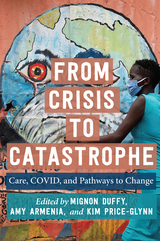 From Crisis to Catastrophe: Care, COVID, and Pathways to Change
Mignon Duffy
Rutgers University Press, 2023 The COVID pandemic has shaken the material and social foundations of the world more than any event in recent history and has highlighted and exacerbated a longstanding crisis of care. While these challenges may be freshly visible to the public, they are not new. Over the last three decades, a growing body of care scholarship has documented the inadequacy of the social organization of care around the world, and the effect of the devaluation of care on workers, families, and communities. In this volume, a diverse group of care scholars bring their expertise to bear on this recent crisis. In doing so, they consider the ways in which the existing social organization of care in different countries around the globe amplified or mitigated the impact of COVID. They also explore the global pandemic's impact on the conditions of care and its role in exacerbating deeply rooted gender, race, migration, disability, and other forms of inequality.
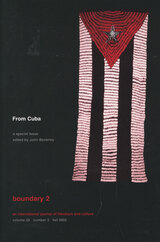 From Cuba, Volume 29
John Beverley, ed.
Duke University Press Most speculation about the future of Cuba rests on positions Cuban émigrés in the United States, Latin America, and Europe have advanced. In contrast, From Cuba represents a diverse collection by Cuban artists and intellectuals who have retained primary identification with or residence in Cuba. The island nation embodies a point of unresolved friction within the new world order. On the one hand, with the collapse of the Soviet Union, the project of the Revolution faces what seems to be an insurmountable impasse; on the other hand, Cuba resists returning to the capitalist fold like a prodigal son. Featuring essays, poetry, art, performance texts, song lyrics, and writing from members of the generation of the Revolution to younger writers and artists of the nineties, this collection explores themes such as the crisis of the project of the Revolution in an era of the decline of socialism, the Cuban literary diaspora, resistance and freedom, and Cuban identity in the nineties. From Cuba expands upon and challenges the traditional ways in which scholars think about Cuba’s political past and future prospects. Contributors. Carlos Aguilera, Haroldo Dilla Alfonso, Miguel Barnet, Tania Bruguera, Michael Chanan, Antonio Fernandez, Ambrosio Fornet, Tomas Gutierrez Alea, Fernando Martínez Heredia, Rafael Hernandez, Fina Garcia Marruz, Nancy Morejón, Geraredo Mosquera, Magaly Muguericia, Desiderio Navarro, Margarita Mateo Palmer, Omar Perez, Antonio José Ponte, Raúl Rivero, Reina Maria Rodriguez, José Prats Sariol, Cintio Vitier
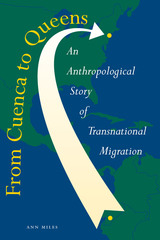 From Cuenca to Queens: An Anthropological Story of Transnational Migration
By Ann Miles
University of Texas Press, 2004 Transnational migration is a controversial and much-discussed issue in both the popular media and the social sciences, but at its heart migration is about individual people making the difficult choice to leave their families and communities in hopes of achieving greater economic prosperity. Vicente Quitasaca is one of these people. In 1995 he left his home in the Ecuadorian city of Cuenca to live and work in New York City. This anthropological story of Vicente's migration and its effects on his life and the lives of his parents and siblings adds a crucial human dimension to statistics about immigration and the macro impact of transnational migration on the global economy. Anthropologist Ann Miles has known the Quitasacas since 1989. Her long acquaintance with the family allows her to delve deeply into the factors that eventually impelled the oldest son to make the difficult and dangerous journey to the United States as an undocumented migrant. Focusing on each family member in turn, Miles explores their varying perceptions of social inequality and racism in Ecuador and their reactions to Vicente's migration. As family members speak about Vicente's new, hard-to-imagine life in America, they reveal how transnational migration becomes a symbol of failure, hope, resignation, and promise for poor people in struggling economies. Miles frames this fascinating family biography with an analysis of the historical and structural conditions that encourage transnational migration, so that the Quitasacas' story becomes a vivid firsthand illustration of this growing global phenomenon.
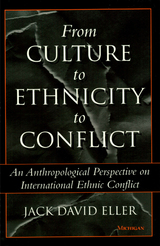 From Culture to Ethnicity to Conflict: An Anthropological Perspective on Ethnic Conflict
Jack David Eller
University of Michigan Press, 1999 In the post-Cold War era, the most common and often the most violent conflicts are ethnic conflicts. Many people, including many scholars, see ethnic conflicts as a return to the past, as contests between ancient and well-defined groups with long-standing grievances and animosities. Jack David Eller argues instead that these conflicts are a defining phenomenon of the "new world order"--that they are, in many ways, modern-day inventions based only loosely on "traditional" cultures and hostilities. From Culture to Ethnicity to Conflict presents in-depth case studies on Sri Lanka, the Kurds, Rwanda and Burundi, Bosnia, and Quebec, along with two theoretical introductory chapters that offer the reader the tools to understand the relationship between "culture" or "tradition" and contemporary ethnic conflicts. Eller finds that ethnicity is not a simple instantiation of "traditional" culture, nor is conflict a simple consequence of ethnicity. Rather, each is constructed out of certain raw cultural materials, through a process of remembering, forgetting, interpreting, and inventing. Ultimately, Eller demonstrates, these groups are fighting not about culture, but with culture. No other book combines the level of analysis offered here with in-depth case studies of several important examples. It will appeal to anyone with an interest in understanding these conflicts. It will be assigned reading for students and scholars of cultural diversity and ethnic conflict in anthropology, history, political science, and peace and conflict studies. Jack David Eller is Assistant Professor of Anthropology, University of Colorado, Denver/Teikyo Loretto Heights University.
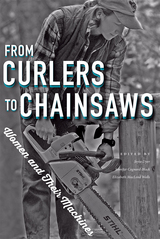 From Curlers to Chainsaws: Women and Their Machines
Joyce Dyer
Michigan State University Press, 2016 The twenty-three distinguished writers included in From Curlers to Chainsaws: Women and Their Machines invite machines into their lives and onto the page. In every room and landscape these writers occupy, gadgets that both stir and stymie may be found: a Singer sewing machine, a stove, a gun, a vibrator, a prosthetic limb, a tractor, a Dodge Dart, a microphone, a smartphone, a stapler, a No. 1 pencil and, of course, a curling iron and a chainsaw.
From Curlers to Chainsaws is a groundbreaking collection of lyrical and illuminating essays about the serious, silly, seductive, and sometimes sorrowful relationships between women and their machines. This collection explores in depth objects we sometimes take for granted, focusing not only on their functions but also on their powers to inform identity.
For each writer, the device moves beyond the functional to become a symbolic extension of the writer’s own mind—altering and deepening each woman’s concept of herself.
From Dark Night to Gentle Surrender: On the Ethics and Spirituality of Hospice Care
Patricia Kobielus Thompson
University of Scranton Press, 2010 Drawing from her many years of experience as a hospice nurse and her training as a theologian, Patricia Kobielus Thompson offers in The Dark Night of the Soul instruction to those providing care for terminally ill patients. Thompson finds in the poetry and other writings of Spanish mystic Saint John of the Cross a wisdom that she argues will assist caregivers in comforting their patients through the trying times just before death. Though much has been written on Saint John of the Cross, Thompson’s application of these works is wholly new and rooted in deep empathy.
From Darkening Porches: Poems
Jo McDougall
University of Arkansas Press, 1996 In just five lines, Jo McDougall can make you shudder. Her poems are often as stark and open as their settings—the Kansas plains and Southern bottomlands. But in these wide fields and hot kitchens, on these front porches where ordinary people tell their stories, the everyday becomes fabled, truth becomes hallowed. To C. D. Wright, McDougall writes “a lean, stoic line; each poem makes its mark, like spit.” In those lines, McDougall brings to life farmers, dressmakers, widows, and waitresses with such precise clarity that we take part in the strange delights, the struggles, the tangled mysteries of their faltering lives.
From Darkness to Dynasty: The First 40 Years of the New England Patriots
Jerry Thornton
University Press of New England, 2016 From Darkness to Dynasty tells the unlikely history of the New England Patriots as it has never been told before. From their humble beginnings as a team bought with rainy-day money by a man who had no idea what he was doing to the fateful season that saw them win their first Super Bowl, Jerry Thornton shares the wild, humiliating, unbelievable, and wonderful stories that comprised the first forty years of what would ultimately become the most dominant franchise in NFL history. Witty, hilarious, and brutally honest, From Darkness to Dynasty returns to the thrilling, perilous days of yesteryear—a welcome corrective for those who hate the Patriots and a useful reminder for those who love them that all glory is fleeting.
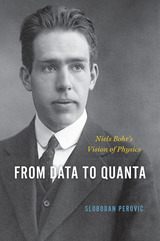 From Data to Quanta: Niels Bohr’s Vision of Physics
Slobodan Perovic
University of Chicago Press, 2021 The first comprehensive philosophical and historical account of the experimental foundations of Niels Bohr’s practice of physics.
Niels Bohr was a central figure in quantum physics, well known for his work on atomic structure and his contributions to the Copenhagen interpretation of quantum mechanics. In this book, philosopher of science Slobodan Perović explores the way Bohr practiced and understood physics, and analyzes its implications for our understanding of modern science. Perović develops a novel approach to Bohr’s understanding of physics and his method of inquiry, presenting an exploratory symbiosis of historical and philosophical analysis that uncovers the key aspects of Bohr’s philosophical vision of physics within a given historical context.
To better understand the methods that produced Bohr’s breakthrough results in quantum phenomena, Perović clarifies the nature of Bohr’s engagement with the experimental side of physics and lays out the basic distinctions and concepts that characterize his approach. Rich and insightful, Perović’s take on the early history of quantum mechanics and its methodological ramifications sheds vital new light on one of the key figures of modern physics.
 From Day to Day: One Man's Diary of Survival in Nazi Concentration Camps
Odd Nansen
Vanderbilt University Press, 2016 This new hardcover edition of Odd Nansen's diary, the first in over sixty-five years, contains extensive annotations and other material not found in any other hardcover or paperback versions.
Nansen, a Norwegian, was arrested in 1942 by the Nazis, and spent the remainder of World War II in concentration camps--Grini in Oslo, Veidal above the Arctic Circle, and Sachsenhausen in Germany. For three and a half years, Nansen kept a secret diary on tissue-paper-thin pages later smuggled out by various means, including inside the prisoners' hollowed-out breadboards.
Unlike writers of retrospective Holocaust memoirs, Nansen recorded the mundane and horrific details of camp life as they happened, "from day to day." With an unsparing eye, Nansen described the casual brutality and random terror that was the fate of a camp prisoner. His entries reveal his constantly frustrated hopes for an early end to the war, his longing for his wife and children, his horror at the especially barbaric treatment reserved for Jews, and his disgust at the anti-Semitism of some of his fellow Norwegians. Nansen often confronted his German jailors with unusual outspokenness and sometimes with a sense of humor and absurdity that was not appreciated by his captors.
After the Putnam's edition received rave reviews in 1949, the book fell into obscurity. In 1956, in response to a poll about the "most undeservedly neglected" book of the preceding quarter-century, Carl Sandburg singled out From Day to Day, calling it "an epic narrative," which took "its place among the great affirmations of the power of the human spirit to rise above terror, torture, and death." Indeed, Nansen witnessed all the horrors of the camps, yet still saw hope for the future. He sought reconciliation with the German people, even donating the proceeds of the German edition of his book to German refugee relief work. Nansen was following in the footsteps of his father, Fridtjof, an Arctic explorer and humanitarian who was awarded the Nobel Peace Prize in 1922 for his work on behalf of World War I refugees. (Fridtjof also created the "Nansen passport" for stateless persons.)
Forty sketches of camp life and death by Nansen, an architect and talented draftsman, provide a sense of immediacy and acute observation matched by the diary entries. The preface is written by Thomas Buergenthal, who was "Tommy," the ten-year-old survivor of the Auschwitz Death March, whom Nansen met at Sachsenhausen and saved using his extra food rations. Buergenthal, author of A Lucky Child, formerly served as a judge on the International Court of Justice at The Hague and is a recipient of the 2015 Elie Wiesel Award from the US Holocaust Memorial Museum.
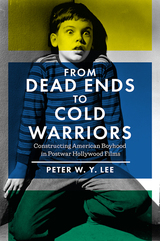 From Dead Ends to Cold Warriors: Constructing American Boyhood in Postwar Hollywood Films
Peter W.Y. Lee
Rutgers University Press, 2021 After World War II, studies examining youth culture on the silver screen start with James Dean. But the angst that Dean symbolized—anxieties over parents, the “Establishment,” and the expectations of future citizen-soldiers—long predated Rebels without a Cause. Historians have largely overlooked how the Great Depression and World War II impacted and shaped the Cold War, and youth contributed to the national ideologies of family and freedom. From Dead Ends to Cold Warriors explores this gap by connecting facets of boyhood as represented in American film from the 1930s to the postwar years. From the Andy Hardy series to pictures such as The Search, Intruder in the Dust, and The Gunfighter, boy characters addressed larger concerns over the dysfunctional family unit, militarism, the “race question,” and the international scene as the Korean War began. Navigating the political, social, and economic milieus inside and outside of Hollywood, Peter W.Y. Lee demonstrates that continuities from the 1930s influenced the unique postwar moment, coalescing into anticommunism and the Cold War.
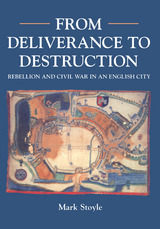 From Deliverance To Destruction: Rebellion and Civil War in an English City
Mark Stoyle
University of Exeter Press, 1996
This is a study of the city of Exeter during the Great Civil War of 1642-46; it offers a lively, immediate account of how one English city slid, inexorably, into the chaos of civil war. The book shows how Exeter's inhabitants first began to dissent from each other over religious issues, then became divided into two warring camps, and finally, after three years of bitter conflict, witnessed much of the ancient city being destroyed about their ears.
The main text is accompanied by a generous collection of transcripts from original seventeenth-century documents. These have been specially selected to illuminate the war's effect on ordinary men and women, and to show how closely engaged they were with the national politico-religious debate. This book will be of interest to all serious students of the English Civil War, while at the same time being accessible to a non-specialist audience.
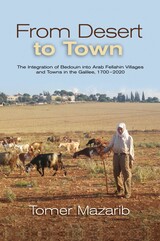 From Desert to Town: The Integration of Bedouin into Arab Fellahin Villages and Towns in the Galilee, 1700–2020
Tomer Mazarib
Sussex Academic Press, 2022 From Desert to Town; sheds light on the sedentarisation and integration of Bedouin living in fellahin towns and villages in the Galilee, between 1700 and 2020. The purpose is to analyze the dynamics of the factors and circumstances that led to this migration. Official history has always lacked data on the Bedouin population in Palestine. Historians have recorded the biography of particular elites, and especially in the context of local warfare and tribal antagonisms, but have hitherto neglected ongoing migration from desert life to town life of Bedouin in the Galilee. The historical record is further complicated by the Bedouin themselves, who over time have been reluctant to register with governmental authority, whether Ottoman, British, or Israeli. This book brings together the available historical information combined with ethnographic data, from which it is possible to derive, analyze, and infer much information about Bedouin life in the Galilee over the past three hundred years.
From Dessalines to Duvalier: Race, Colour and National Independence in Haiti
Nicholls, David
Rutgers University Press, 1996 In this lively, provocative, and well-documented history, David Nicholls discusses the impact of "color" on the political relationship between the black majority and the mulatto elite during almost two hundred years of Haitian history. The divisive factor impeding harmony in Haitian culture, argues Nicholls, has not been race, but color. Identifying themselves as non-white, blacks and mulattos acknowledge racial unity. But color divisions, reinforced by religious, regional, and class differences, have nonetheless prevented the two groups from achieving poltitical and ideological unity. Nicholls grounds this sophisticated analysis in great historical detail and engaging, witty prose. Students and general readers alike will delight in this insightful and informative history of Haiti.
From Dessalines to Duvalier: Race, Colour and National Independence in Haiti
Nicholls, David
Rutgers University Press, 1996 In this lively, provocative, and well-documented history, David Nicholls discusses the impact of "color" on the political relationship between the black majority and the mulatto elite during almost two hundred years of Haitian history. The divisive factor impeding harmony in Haitian culture, argues Nicholls, has not been race, but color. Identifying themselves as non-white, blacks and mulattos acknowledge racial unity. But color divisions, reinforced by religious, regional, and class differences, have nonetheless prevented the two groups from achieving poltitical and ideological unity. Nicholls grounds this sophisticated analysis in great historical detail and engaging, witty prose. Students and general readers alike will delight in this insightful and informative history of Haiti.
|
|
